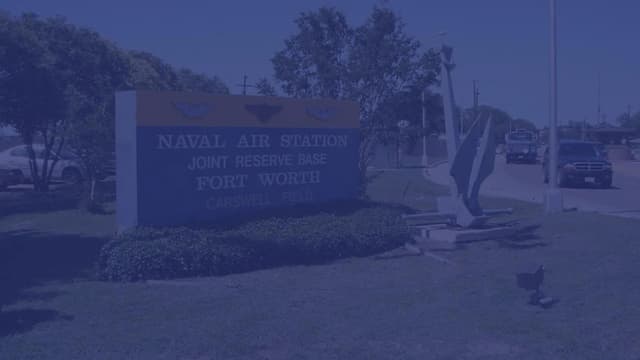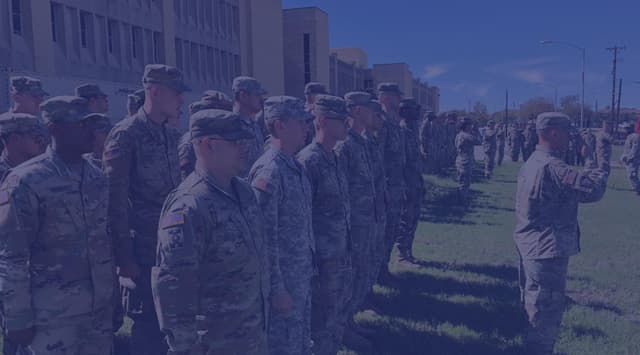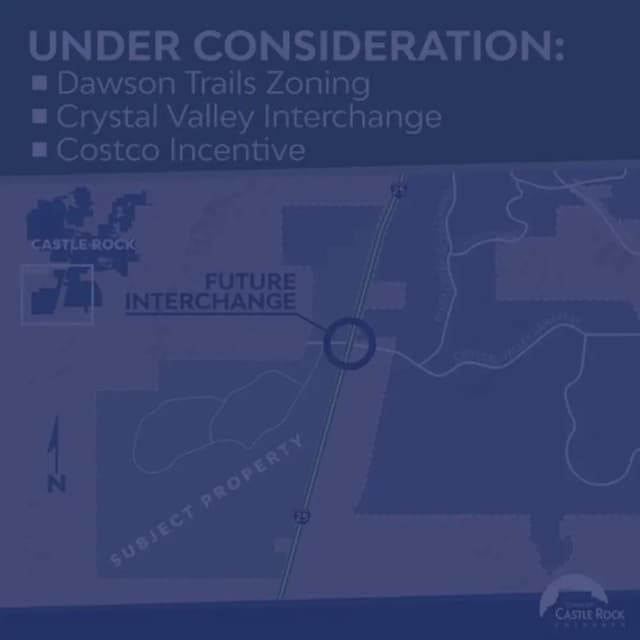PCS Help

Percheron Colorado Springs: New Homes Near Military Bases
10/19/2025
Percheron Master-Planned Community: Your Guide to Colorado Springs' Newest Neighborhood Near Peterson SFB and Fort Carson
Military families stationed at Peterson Space Force Base or Fort Carson face a common challenge: finding a home that balances community amenities, quality schools, and reasonable commute times. Colorado Springs' newest master-planned community, Percheron, addresses these needs with a thoughtfully designed neighborhood along East Woodmen Road that combines modern housing, outdoor recreation, and family-friendly features. This comprehensive guide explores what makes Percheron an attractive option for active duty service members, veterans, and their families considering a PCS move to Colorado Springs in 2025 and beyond. What Makes Percheron Different? Percheron isn't simply another housing development—it's a master-planned community designed around lifestyle and connectivity. According to the City of Colorado Springs Planning Department, master-planned communities like Percheron must meet specific criteria for infrastructure, green space, and community amenities that benefit residents long-term. The community spans approximately 1,300 acres in northeast Colorado Springs, strategically positioned to offer both suburban convenience and access to the city's natural beauty. Development began in 2023, with the first residents moving in during 2024. Key Features: Multiple Home Builders: Percheron partners with several nationally recognized builders, offering diverse floor plans and price points to accommodate military families at different career stages Integrated Amenities: The community design includes shopping, dining, and recreational spaces within walking distance of residential areas Educational Access: Homes fall within the highly-rated Academy School District 20 (D-20), not D-49 as originally planned—an important distinction for families prioritizing education quality Trail Connectivity: Over 10 miles of planned walking and biking trails will eventually connect to the Woodmen Regional Trail system and broader Pikes Peak region trail network Community Amenities: Built for Active Military Families Percheron's amenity package reflects the needs of modern military families who value both community connection and outdoor recreation. Regional Sports Complex The centerpiece of Percheron's recreational offerings is a planned 125-acre regional sports complex that will serve both residents and the broader Colorado Springs community. While specific facilities are still being finalized as of October 2025, similar complexes typically include: Multi-purpose athletic fields for soccer, lacrosse, and football Baseball and softball diamonds Tennis and pickleball courts Playground areas for younger children Pavilions for family gatherings and unit events This type of facility is particularly valuable for military families who often use sports and recreation to build community connections after a PCS move. Trail Systems and Open Space According to Colorado Springs Parks, Recreation and Cultural Services, the city maintains over 200 miles of trails throughout the region. Percheron's planned trail network will integrate with existing systems, including: Woodmen Regional Trail: A major east-west trail corridor that connects multiple neighborhoods Internal Community Trails: Planned paths throughout Percheron for walking, jogging, and biking Open Space Preservation: The community design dedicates significant acreage to parks and natural areas, maintaining the Front Range views that make Colorado Springs attractive to newcomers For military families who value outdoor recreation—whether for physical fitness requirements or simply enjoying Colorado's natural beauty—these connected trail systems provide immediate access to active lifestyles. Schools: Academy School District 20 An important clarification: Percheron homes fall within Academy School District 20 (D-20), not District 49 as initially planned during early development phases. This distinction matters significantly for military families prioritizing education quality. According to GreatSchools.org, a nonprofit providing school ratings based on test scores, student progress, and equity metrics, Academy School District 20 consistently ranks among Colorado's top-performing districts. The Colorado Department of Education rates D-20 schools highly for academic achievement, with several schools earning distinction status. For military families, strong schools provide continuity when children may change schools multiple times during a military career. D-20's reputation and performance metrics make it a draw for service members prioritizing educational stability. Nearby D-20 Schools Include: Elementary: Air Academy Elementary, Cotton Elementary Middle: Air Academy Middle School, Pine Creek Middle School High: Air Academy High School, Pine Creek High School Location: Strategic Access for Military Commuters Percheron's location along East Woodmen Road provides military families with balanced access to both Peterson Space Force Base and Fort Carson, though commute times vary significantly between the two installations. Distance and Commute Considerations Peterson Space Force Base: Approximately 12-15 miles southeast via Powers Boulevard and North Carefree Circle, with typical drive times of 20-25 minutes during non-peak hours Fort Carson: Approximately 25-30 miles south via Powers Boulevard and Interstate 25, with drive times ranging from 35-45 minutes depending on traffic and gate entry points Schriever Space Force Base: Approximately 30 miles east via Woodmen Road and Highway 94, roughly 35-40 minutes According to the Defense Travel Management Office, service members should consider commute distance when calculating Basic Allowance for Housing (BAH) budgets, as longer commutes increase fuel and vehicle maintenance costs. Local Amenities and Shopping Percheron's proximity to Powers Boulevard—one of Colorado Springs' major commercial corridors—provides convenient access to: Grocery stores (Safeway, King Soopers, Walmart) Retail centers (Powers Marketplace, Shops at Briargate) Restaurants ranging from fast-casual to sit-down dining Medical facilities including urgent care and pharmacies Banking and essential services This commercial access means military families can handle everyday errands without extended drives, saving time during busy PCS transitions or deployment preparations. Visual Suggestion: Interactive-style map showing 5-minute, 10-minute, and 15-minute drive radius from Percheron to key amenities and military installations. Home Options: What to Expect in Percheron As of October 2025, Percheron features multiple builders offering diverse home styles and price points. While specific inventory changes frequently, military families can generally expect: Builder Options Percheron partners with established builders known for quality construction and military-friendly sales processes, including: Oakwood Homes: Known for energy-efficient designs and flexible floor plans Richmond American Homes: Offers customization options and military incentives Century Communities: Features quick move-in options valuable for short-notice PCS orders Each builder maintains model homes and sales centers within Percheron, allowing military families to compare options in one location. Price Ranges and Floor Plans As of late 2025, new construction homes in Percheron typically range from the mid-$400,000s to $600,000s+, depending on size, finishes, and lot selection. This pricing aligns with Colorado Springs' overall market, which according to Zillow, has seen steady appreciation due to continued military presence and civilian population growth. Common Floor Plans: 1,800-2,200 sq ft: Entry-level homes often with no or unfinished basements, typically 3-4 bedrooms 2,200-2,800 sq ft: Mid-range homes with more space throughout, usually 4-5 bedrooms, often with finished basements 2,800+ sq ft: Larger homes with luxury touches throughout, 5+ bedrooms with premium finishes VA Loan Advantages in New Construction Military families using VA Loans in Percheron benefit from several advantages when purchasing new construction. According to VA.gov, VA Loans require no down payment for eligible service members and veterans, which can save $15,000-$30,000 upfront on a $500,000 home compared to conventional financing requiring 3-5% down. Additional VA Loan Benefits: No Private Mortgage Insurance (PMI): Conventional loans require PMI when down payments fall below 20%, adding $100-$300 monthly. VA Loans eliminate this cost Builder Incentives: Many Percheron builders offer attractive low interest rates or closing cost assistance for military buyers New Construction Advantages: VA Loans work seamlessly with new builds, and the VA appraisal process includes a thorough property inspection protecting buyers from construction defects The Consumer Financial Protection Bureau notes that VA Loans typically offer competitive interest rates compared to conventional options, potentially saving thousands over the loan term. For military families interested in understanding all their VA Loan benefits, our comprehensive guide covers essential VA Loan advantages for 2025. Colorado Springs Military Community: Why Location Matters Colorado Springs hosts one of the largest military populations in the United States, with over 45,000 active duty service members and their families according to the Colorado Springs Chamber & Economic Development Corporation. This substantial military presence creates a unique community dynamic that benefits newcomers. Military-Friendly Culture Unlike some civilian-dominated cities, Colorado Springs understands military life. Local businesses offer military discounts, schools have experience with frequent student transitions, and community organizations actively support service members and their families. Percheron's location within this military-aware community means: Neighbors Who Understand: High likelihood of military neighbors who relate to deployment cycles, PCS moves, and base life School Experience: D-20 schools serve significant military populations and have protocols for supporting students during family separations Community Resources: Easy access to Military OneSource partner organizations and local veteran service groups Weather and Lifestyle Considerations Military families moving from different climates should understand Colorado Springs' unique weather patterns: Sunny Days: Colorado Springs averages over 300 days of sunshine annually, significantly more than many PCS locations Four Seasons: Distinct seasons with cold winters (snow possible October-April) and mild summers (temps typically 80s-90s°F) Low Humidity: Dry climate requires adjustment for families from humid regions, including increased water intake and skin care Altitude: At approximately 6,035 feet elevation, some families experience temporary altitude adjustment symptoms The National Weather Service provides detailed climate data for families planning their move. Making Your Decision: Is Percheron Right for Your Military Family? When evaluating Percheron for your PCS move or post-military transition, consider these factors: Percheron Works Well For: Peterson SFB Families: Shorter commute times make daily life more manageable, especially during winter weather Families Prioritizing Schools: D-20's strong reputation provides educational stability during military career transitions Outdoor Enthusiasts: Trail access and Front Range proximity support active lifestyles and physical fitness requirements First-Time Buyers: Entry-level pricing and VA Loan benefits make homeownership achievable for junior service members Growing Families: Diverse floor plans accommodate families at different life stages Consider Alternatives If: Fort Carson Daily Commuters: The 35-45 minute commute may become burdensome over a typical 3-year assignment, especially with Colorado's winter weather. Communities closer to Fort Carson might better serve daily commuters Immediate Move-In Needed: New construction timelines typically run 6-12 months, which may not align with short-notice PCS orders requiring immediate housing Budget Constraints: Percheron's pricing reflects new construction premiums. Established neighborhoods may offer better value for cost-conscious families Timeline and Availability: Planning Your Purchase New construction purchases require different timelines than existing homes—an important consideration for military families with specific report dates. Typical New Construction Timeline: Model Home Visits and Lot Selection: 1-2 weeks Contract and Design Selections: 2-4 weeks Construction Period: 6-12 months depending on builder and floor plan Final Walk-Through and Closing: 1-2 weeks Military-Specific Considerations: For service members with PCS orders, timing is critical. According to Military OneSource, most PCS moves provide 30-90 days notice, which doesn't align with new construction timelines. Understanding your PCS entitlements and benefits can help you plan accordingly. Options for Military Buyers: Quick Move-In Homes: Some builders maintain nearly-completed inventory homes with 30-60 day closings Future Orders: Service members with advance notice (6-12 months) can time construction completion with PCS arrival Rental Bridge: Families can rent temporarily while construction completes, though this requires financial qualification for both rent and mortgage Alternative Market: Consider existing homes if new construction timing doesn't match orders Working with VeteranPCS: Your Local Military Real Estate Experts Navigating Colorado Springs' real estate market, understanding VA Loan nuances, and coordinating new construction purchases during a PCS move requires specialized expertise. VeteranPCS connects military families with agents who understand both the local market and military life. How VeteranPCS Agents Help: Military-Specific Knowledge: Understanding of PCS timelines, BAH calculations, and military life realities Builder Relationships: Established connections with Percheron builders can facilitate smoother transactions and potential military incentives VA Loan Expertise: Coordination with VA-experienced lenders who understand military financing unique requirements, including strategies like VA loan assumptions Local Market Intelligence: Current knowledge of Percheron inventory, pricing trends, and neighborhood development progress Remote Support: Assistance for families house-hunting before arriving in Colorado Springs, including virtual tours and video walk-throughs Beyond Percheron: Exploring All Options While Percheron offers excellent features for many military families, VeteranPCS agents can also introduce you to alternative neighborhoods that might better fit your specific needs: Closer to Fort Carson: Fountain, Security-Widefield, or south Colorado Springs neighborhoods Established Communities: Briargate, Northgate, or other developed areas with mature landscaping and amenities Different Price Points: Options across Colorado Springs' diverse price spectrum Ready to explore Percheron or other Colorado Springs neighborhoods? Connect with a VeteranPCS agent today who understands military moves and can guide you through every step of finding your perfect home near Peterson SFB or Fort Carson! Frequently Asked Questions About Percheron Q: Does Percheron have a Homeowners Association (HOA)? Yes, like most master-planned communities, Percheron has an HOA that maintains common areas, trails, and community amenities. Monthly fees typically range from $50-$100 but confirm current rates with your VeteranPCS agent, as they can vary by neighborhood section. Q: Can I use my VA Loan to buy in Percheron? Absolutely. All builders in Percheron work with VA Loan buyers regularly. Many offer additional incentives for military purchasers, including closing cost assistance or upgrades. Q: What if I receive PCS orders before my home is built? This is a common concern for military buyers. Options include: selling the contract before construction completes, converting to a rental property (if financially feasible), or purchasing a quick move-in home instead. Your VeteranPCS agent can help evaluate these scenarios based on your specific situation. Q: Are there military families already living in Percheron? Yes, given Colorado Springs' substantial military population and Percheron's proximity to Peterson SFB, many military families have already chosen the community. This creates a built-in support network for newcomers. Q: What utilities serve Percheron? Percheron receives services from Colorado Springs Utilities (electricity, water, natural gas) and has access to multiple internet service providers including fiber optic options—important for military families needing reliable connectivity for remote work or distance learning. Q: How do I stay organized during my PCS move to Percheron? Consider creating a comprehensive PCS binder to keep all your important documents, contracts, and moving information in one place. This is especially helpful when coordinating new construction timelines with your PCS dates. Final Thoughts: Your Colorado Springs Home Awaits Percheron represents Colorado Springs' evolution as a military community—combining modern amenities, outdoor recreation access, and quality schools with the Front Range beauty that makes Colorado special. For military families evaluating their next PCS move or considering putting down permanent roots in the Pikes Peak region, this master-planned community deserves serious consideration. Whether you're a first-time homebuyer using your VA Loan for the first time, a growing family needing more space, or a service member approaching retirement and planning your forever home, Percheron's diverse options and strategic location offer compelling advantages. The key to a successful home purchase—especially during a PCS move—is working with professionals who understand both the local market and military life's unique demands. VeteranPCS bridges that gap, connecting you with agents and lenders who've helped countless military families navigate Colorado Springs real estate. Found this guide helpful? Share it with your military network to help fellow service members learn about Colorado Springs' newest community! And when you're ready to visit Percheron or explore other neighborhoods, VeteranPCS is here to support your journey home.

Jason Anderson
Army Veteran

Choosing the Best Relocation Method for Your PCS
9/26/2025
Choosing the Best Relocation Method for Your PCS
Moving to a new duty station can be an exciting yet stressful experience—one that comes with a lot of big decisions. According to Military OneSource, nearly 700,000 service members undergo PCS moves annually, making relocation choices a critical concern for military families. One of those key considerations is how to relocate. Each method has its pros and cons, and the best choice for you depends on factors such as budget, convenience, time constraints, and the amount of belongings to move. Before diving into your options, make sure you've reviewed The Ultimate PCS Checklist and Timeline for Active Duty Military Personnel to ensure you're prepared for every aspect of your move. Here's a comprehensive guide to help you decide the best method for your next Permanent Change of Station (PCS). 1. Full PPM Option #1: Rental Equipment If you prefer more flexibility and don't mind putting in some hard work, a "PPM" (Personally Procured Move) move may be the best option. With this option, you are fully in charge of your own move, including renting equipment, packing, loading, and transporting your household goods. For those preparing for this option, understanding what military movers won't pack is crucial even if you're doing it yourself. Pros: Full Control: You have control over packing, loading, and the entire timeline. If you'd rather not deal with the packing or loading portions, you still have the option of outsourcing to a local packing crew. Flexible Scheduling: A PPM comes with more freedom in selecting your timeline and less reliance on external schedules. This includes more flexibility when planning move-in/move-out dates if you're buying or renting a new home. More Budget-Friendly: If your heart is set on a PPM, renting moving equipment will typically be the most affordable option. Quality Control: This option gives you way more oversight, allowing you to see that the packing job is done to your standards and your items are handled/packed with care. Cons: Physical Labor: If you're choosing not to outsource the heavy lifting, moving furniture and boxes can be physically demanding and even dangerous, sometimes causing injury. Time-Consuming: Packing, loading, driving, and unloading take a significant amount of time and effort. Check our guide on preparing for movers for time-saving strategies that apply even to DIY moves. Up-Front Cost: Choosing a PPM means covering costs out of pocket throughout the moving process until you can be reimbursed on the back end. Understanding your PCS entitlements and benefits can help you plan financially. Rules & Regulations: According to VA.gov, familiarize yourself with all current government moving regulations—weight allowances, authorized expenses, travel timelines, tax implications, managing weight tickets/receipts, reimbursement rates, and so on. It's best to map out your expenses and use a reimbursement calculator to make sure this is right for you. Potential for Damage & Theft: If you're inexperienced, you may accidentally damage your belongings during the move. Rental trucks and trailers are also targets for theft, and are sometimes stolen out of places like hotel parking lots when the owners are not around. Be sure to research ways to protect your equipment. Insurance: Since you'll be transporting all of your things, keeping or adding insurance is a necessary step to protecting yourself from a catastrophic incident—ask your agent about coverage options. And always ask the rental company about types of coverage they offer as well—having your bases covered will give you peace of mind in transit. When considering a full do-it-yourself PPM, this method is best for: Military personnel/families who have budgeted to fund a DIY move and are financially prepared for out-of-pocket costs Short-distance moves OR long-distance moves with motivated individuals who want to be paid back for their hard labor and efforts Those who have help from friends, family, or third-party packing crews Those wanting a flexible timeline or full control 2. Full PPM Option #2: Portable Containers & Freight Services Portable container companies and self-moving freight services both offer a creative middle ground between DIY and full-service moves. It's an ideal option if you want full control over packing & loading without the hassle of driving a large moving truck, since they will transport the shipment on your behalf. However, military families should be aware that costs for these services will likely be higher than rental equipment, and sometimes might exceed reimbursement rates. The Department of Defense advises: Always check reimbursement rates and get moving quotes before choosing a method. Pros: Convenience: Containers and freight companies deliver right to your home, and you can load/unload at your own pace within a given window. More Affordable than Full-Service: Generally cheaper than hiring professional full-service interstate movers. Storage Options: Many companies offer storage if you need time before unloading. This can be especially helpful when navigating temporary housing during your PCS move. Door-to-Door Delivery: In many cases, your items will go from origin to destination with few stops or transitions through warehouses. They also typically have more accurate transit times than military movers. Freight Services Billing Method: Many of the freight transport companies will only charge you for the amount of space used on the truck, as they can block it off and use the remaining space for other shipments. Cons: Limited Flexibility: You must work within the company's schedule and you may have a set window to load and unload your items. Space Constraints: Portable containers may not work for larger moves as they come in fixed sizes, so you may need to pay for multiple units. Additional Costs: Expect higher costs than a full do-it-yourself move. Some charge extra for delivery, pickup, or storage. Be sure to also ask your container company what types of coverage they offer, if any, and discuss with your insurance agent about what other coverage may be needed. May Not Be Fully Reimbursed: For military members, this still falls under the "PPM" umbrella and you will be responsible for fronting these costs. Be sure to calculate reimbursement rates, as not all costs may be covered. May Not Service Your Area: Be sure to call and ask if they service your region, as not all companies will service every single part of the country. Best For: Long-distance moves with somewhat flexible timing Those who need temporary storage Individuals looking for a semi-DIY option but have the budget to outsource the job Those who want to save money but avoid driving a moving truck Small furniture containers are ideal for smaller moves with less household goods. The larger freight containers/full truckloads are ideal for any size move. 3. Partial PPM: A Hybrid Option A partial PPM is, in a sense, utilizing the best of both worlds: outsourcing the bulk of the work to military-contracted movers, while also opting to transport some things yourself. This approach is covered in detail in our Military PCS Quick Guide Q&A. You'll want to make sure you consult with the right offices to complete documentation, and you'll need to obtain empty/full weight tickets of your vehicle or rental equipment. Assuming all PPM regulations are met, you can be reimbursed for the weight and distance of the items moved on your own. Be sure to separate these items and communicate with military movers about which items won't be getting packed and loaded on their truck. Some things people might choose to move themselves include: mattresses, bedding, medical equipment, suitcases & clothing, high-value or sentimental items, pet necessities, personal documents, basic kitchen items, and any other urgent or useful items. Creating a PCS Binder can help you keep these important documents organized during transport. Pros: More Control, Quicker Access: You have more control over valuables and easier access to specific items during transit or that you may want right away upon move-in. Potential Cost Savings: Since the military will cover the bulk of the costs, you'll get the benefits of a military move without the headache of temporarily living without those urgent personal items. Less Stress: If you decide to move high-value/personal items yourself, you might feel more at-ease knowing they are secure with you and handled with care. Staying Under Weight Allowance: According to Military OneSource, many military families have been slapped with huge bills into the thousands after (sometimes unknowingly) going over the weight allowance. If you think you might go over your weight allowance, this might be an option to try and lower the total that your military movers will transport. You'll first want to try and purge items you no longer need, and then try to determine your weight from a previous move (minus any calculations for packing materials and pro gear). Once you have an idea on if you'll go over, then you can decide whether a partial might be necessary to avoid a huge bill later. Cons: Risk of Theft: Rental trucks and trailers being towed are at higher risk of theft and can be fairly easy to steal. Research ways to protect your equipment during overnight stays. Additional Coverage: Since you may be transporting valuable or sentimental possessions, you may consider adding or keeping certain insurance active while in transit. Be sure to communicate with your agent about what type of insurance is best. Consider Weight Allowance: You will not receive a higher weight allowance for a partial PPM, so be sure to research your weight allowance and stay under if you do want a full reimbursement! Dual Effort & Schedules: Unless you're able to fit most items inside your personal vehicles, you'll have to manage bookings for both military movers plus any rental equipment/freight service you'll be using. Partial PPMs can also require extra physical labor, since you'll be doing some of the packing and loading! Best For: Long-distance moves (especially those with longer delivery timeframes) Those who have essential or valuable items they want to transport themselves Those who are able to split up the weight allowance without going over weight Those who might go over their weight allowance and don't want to be left with a surprise bill later on for the remaining cost of the overweight goods 4. Full-Service HHG Move: Using Military Movers If you prefer a hassle-free move, using the military-contracted movers may be the best option. For comprehensive preparation tips, review our guide on preparing to PCS before your movers arrive. Pros: Less Physical Strain: Movers handle all the heavy lifting. Efficient and Fast: Professional movers have experience packing and moving efficiently. Insurance and Liability: Military moving companies offer insurance, protecting your belongings in case of damage or loss—just be aware that coverage is typically only up to a certain dollar amount per pound, so be sure to read the most current military regulations & talk to your TSP before your move. You may consider discussing with your insurance agent if you need additional coverage for certain valuables. Less Up-Front Costs: One of the most attractive aspects of using military movers is that you won't need to come out of pocket for any supplies, equipment, fuel, or other HHG transport costs. Inconvenience Fees: If military-contracted movers miss a delivery window, you may be entitled to a small inconvenience fee with your TSP. Cons: Risk of Damage, Loss, or Theft: Items may be broken or lost in the process. On rare occasions, valuables (like electronics, jewelry, firearms, and money) have been reported as stolen—so it's best to make a plan to hand-carry them when possible. If you must send them with your movers, have photo evidence, back-up insurance, and all of your item descriptions listed individually on the mover's high-value inventory sheets. Limited Coverage: Military movers offer "full replacement value" up to a certain dollar amount per pound. Be sure to read updated PCS regulations or discuss with your TSP/travel office. Inventory Sheets: Inventory is often an overlooked aspect and it can be a lot of work - but it's important to double check each inventory list by your movers to make sure all big items are accounted for. Making your own inventory list prior to moving day can help. Less Overall Control: Your belongings are in someone else's hands, and you must work within their packing & delivery schedule. Risk of Late Delivery: During the busy peak season, it's not uncommon for moving companies to experience a backlog, resulting in delayed or missed delivery windows. Best For: Long-distance/interstate or international moves—especially for those preparing for an overseas PCS Those with large amounts of heavy furniture or fragile items Busy individuals or families who can't pack themselves or want a stress-free move Final Decision: Which Relocation Method is Best for You? Consider the following factors when choosing your relocation method: Budget: If saving money is a priority, using the military movers will be your best option, pending you make sure to stay within your weight allowance. Time and Convenience: If you're short on time or just want a hassle-free experience, letting the military movers run the show might be right for you! Distance: Distance can affect your decision based on whether a DIY move will be worth the extra effort: do you want to get paid for your hard labor and efforts, or does it make more sense to let movers handle all or part of it? Amount of Belongings: If you have a large household, using the movers or a freight container company may be more practical than renting a smaller moving truck. Physical Ability: If you're unable to lift heavy items, hiring movers or even paying for a packing crew during a PPM is a smart move. Full PPM vs. Partial PPM vs. Full-Service HHG Move: This is the burning question that every military family must ask before each PCS. And that answer might change each time—do what makes the most sense for your current personal or financial situation. By weighing these factors, you can determine the best moving method for your needs and ensure a smooth relocation experience. No matter which option you choose, planning ahead and staying organized will make your move much easier! Ready to Find Your Next Home? Whether you're choosing a PPM or using military movers, securing housing at your new duty station is a top priority. Regardless of your type of move, you will want to stay organized and we highly recommend our veteran partners at Team BoxOps to help you pack effectively. When it comes to finding the perfect home, VeteranPCS connects military families with veteran and military spouse real estate agents who understand the unique challenges of PCS moves. Our agents can help you: Navigate competitive housing markets near military installations Maximize your VA loan benefits Find temporary housing solutions while house hunting Close on a home within your PCS timeline Connect with a VeteranPCS real estate expert today to start planning your housing needs at your next duty station! Share this guide with your military network to help others choose the best PCS moving method!

VeteranPCS
Veteran Agents

Best Neighborhoods Near NAS JRB Fort Worth for Military Families
8/28/2025
Best Neighborhoods Near NAS JRB Fort Worth: Your 2025 PCS Guide
Getting PCS orders to Naval Air Station Joint Reserve Base (NAS JRB) Fort Worth? You're heading to one of Texas's most family-friendly military communities. Located in the heart of the Dallas-Fort Worth metroplex, this base offers military families access to excellent schools, diverse neighborhoods, and countless recreational opportunities. Choosing the right neighborhood for your family involves balancing commute times, school quality, housing costs, and lifestyle preferences. After researching the Fort Worth area and consulting with local military families, we've identified five outstanding neighborhoods that consistently rank high for military relocations to NAS JRB Fort Worth. Why Location Matters for Military Families Before diving into specific neighborhoods, it's important to understand what makes a great military community. According to Military OneSource, military families prioritize: Reasonable commute times to base Quality schools for children Safe, family-friendly environments Access to recreational activities Strong community connections The Fort Worth area excels in all these categories, with the Texas Education Agency ranking several local school districts among the state's best performers in 2024. Top 5 Neighborhoods for NAS JRB Fort Worth Military Families 1. Lake Worth: Your Closest Community Option Commute Time: 10-15 minutesBest For: Families seeking affordability and convenience Lake Worth offers the shortest commute to NAS JRB Fort Worth, making it ideal for service members with early morning duties or those who prefer more time at home with family. This established community provides: Affordable Housing: Median home prices approximately 15-20% below Fort Worth average Family Activities: Direct access to Lake Worth for swimming, boating, and fishing Community Feel: Small-town atmosphere within a metropolitan area Schools: Served by Northwest ISD, which earned a B+ rating from the Texas Education Agency in 2024 The proximity to base means more time for family activities and less stress during busy military schedules. Many military families appreciate the quick drive home for lunch or family emergencies. 2. Aledo: Small Town Charm with Big City Access Commute Time: 20-25 minutes westBest For: Families prioritizing top-tier education and community involvement Aledo consistently ranks among Texas's best small communities for military families. This charming town offers: Exceptional Schools: Aledo ISD earned an A+ rating from the Texas Education Agency, with 98% of students meeting state academic standards Housing Options: Mix of established homes and new construction, with larger lots than urban areas Community Engagement: Active parent-teacher organizations and youth sports leagues Safety: Crime rates significantly below state average according to Texas Department of Public Safety 2024 data Military spouses frequently praise Aledo for its welcoming atmosphere and strong support networks for families during deployments. Ready to explore Aledo's housing market? Connect with a VeteranPCS agent who specializes in military relocations! 3. Saginaw: Award-Winning Schools and Recreation Commute Time: 20-25 minutesBest For: Active families with school-aged children Saginaw offers an excellent balance of educational excellence and recreational opportunities: Top Schools: Eagle Mountain-Saginaw ISD earned recognition as a 2024 Texas Education Agency Distinguished District Recreation: Extensive park system with walking trails, playgrounds, and sports facilities Community Events: Year-round festivals and family activities Housing Variety: Options from starter homes to executive properties The district's strong STEM programs and military family support services make Saginaw particularly attractive for career-focused military personnel. 4. Azle: Lakefront Living with Modern Conveniences Commute Time: 25-30 minutesBest For: Families seeking outdoor recreation and housing variety Azle combines suburban amenities with outdoor recreation opportunities: Eagle Mountain Lake: Excellent boating, swimming, and fishing just minutes from home Housing Options: Both established neighborhoods and new construction developments Schools: Northwest ISD provides solid academic programs with military family support Community: Strong veteran population and military-friendly businesses Many military families choose Azle for the outdoor lifestyle, especially those with teenagers interested in water sports or fishing. 5. Fort Worth/Keller Area: Urban Amenities and Premium Education Commute Time: 30-35 minutes northeastBest For: Families prioritizing shopping, dining, and top-tier schools The Fort Worth/Keller corridor offers the most urban amenities while maintaining family-friendly neighborhoods: Premium Schools: Both Keller ISD and Northwest ISD earned A ratings from the Texas Education Agency Alliance Area: Major shopping, dining, and entertainment hub Housing: Variety from townhomes to luxury single-family homes Career Opportunities: Excellent job prospects for military spouses in corporate sectors This area works well for dual-military couples or families where the spouse has career ambitions in the Dallas-Fort Worth business community. Making Your Decision: Key Factors to Consider When choosing between these excellent options, consider: Budget: Use your Basic Allowance for Housing (BAH) wisely. The Department of Defense sets Fort Worth BAH rates at $1,890 for E-7 personnel in 2025. Schools: If education is your priority, Aledo and Keller areas offer the highest-rated districts, while Lake Worth and Saginaw provide solid options with shorter commutes. Lifestyle: Water enthusiasts might prefer Azle or Lake Worth, while families seeking urban amenities gravitate toward Fort Worth/Keller. Community: All five areas have strong military family networks, but smaller communities like Aledo and Azle often feel more tight-knit. VA Loan Benefits for Fort Worth Area Purchases Military families have significant advantages when buying in the Fort Worth market. VA.gov confirms that VA loans offer: Zero down payment requirements No private mortgage insurance (PMI) Competitive interest rates Flexible credit requirements With median home prices in these neighborhoods ranging from $250,000 to $450,000, VA loan benefits can save military families $15,000-$30,000 in upfront costs. Getting Started with Your Fort Worth PCS Move Moving to a new duty station involves countless decisions, but choosing the right neighborhood sets the foundation for your family's success at NAS JRB Fort Worth. Each of these five communities offers unique advantages for military families. Start your home search early – ideally 3-4 months before your PCS date. This timeline allows for house hunting trips, loan pre-approval, and coordination with your gaining unit. Ready to find your perfect Fort Worth area home? Contact a VeteranPCS real estate expert who understands military relocations and can guide you through the entire process! The Fort Worth area welcomes thousands of military families each year, and with the right neighborhood choice, you'll quickly feel at home in the heart of Texas. Share this guide with fellow service members heading to NAS JRB Fort Worth – every military family deserves to find their perfect Texas home! About VeteranPCS: We connect military families with experienced real estate agents and VA loan specialists who understand the unique challenges of military relocations. Our network includes agents in all 50 states ready to help with your next PCS move.

Julie & Alan Cash
Army Spouse

Strategic Refinancing for Luxury Homeowners in Castle Roc...
8/5/2025
Strategic Refinancing for Luxury Homeowners in Castle Rock, CO
The Luxury Homeowner's Refinancing Dilemma In the prestigious neighborhoods of Castle Rock, from the exclusive enclaves of The Canyons to the custom estates in Pradera, luxury homeowners face a unique financial landscape. With property values ranging from $800,000 to well over $2 million, the decision to refinance carries significantly higher stakes than typical residential mortgages. There are essentially two types of luxury homeowners: those strategically managing mortgage debt as a financial tool, and those who've achieved the enviable position of owning their Castle Rock estate outright. If you're among the latter group, congratulations – you can read this with the satisfaction of knowing you've conquered one of homeownership's greatest challenges. For luxury homeowners currently carrying mortgages on their Castle Rock properties, understanding when and how to refinance can mean the difference between thousands of dollars in annual savings and missed opportunities. The Art of Strategic Mortgage Management Perhaps you've encountered the popular real estate saying: "Marry the home, date the rate." This philosophy particularly resonates in Castle Rock's luxury market, where homeowners often view their properties as generational investments. While you cannot renegotiate the location, architectural details, or lot size of your Chatfield Farms estate or Ridge at Castle Pines home, you absolutely can renegotiate your mortgage terms. Rather than making refinancing decisions based on neighborhood conversations or aggressive marketing calls, luxury homeowners deserve data-driven strategies tailored to high-value properties. Essential Refinancing Facts for Luxury Properties Timing Requirements by Loan Type Conventional loans: Technically refinanceable after 30 days, but waiting 210 days avoids lender penalties Jumbo loans: Often follow conventional guidelines but may have additional requirements VA loans: 210-day waiting period required Portfolio loans: Varies by lender, often more flexible for luxury properties Key Considerations for High-Value Homes You can refinance with any qualified lender, not just your original mortgage company Closing costs on luxury properties are proportionally higher but often rolled into the new loan You'll skip one payment during the transition process Property appraisals for luxury homes require specialized expertise in Castle Rock's unique market Strategic Reasons to Refinance Your Luxury Home Interest Rate Optimization In Castle Rock's luxury market, even a 1% rate reduction can translate to substantial monthly savings. For a $1.5 million mortgage, dropping from 7% to 6% could save over $1,200 monthly. Cash-Out Refinancing for Property Enhancement Many Castle Rock luxury homeowners use cash-out refinancing to fund: Custom outdoor living spaces with mountain views High-end kitchen renovations featuring professional-grade appliances Smart home technology integration Landscape architecture projects maximizing lot potential Guest houses or ADUs (where permitted) Debt Consolidation Strategy Luxury homeowners often carry various high-interest debts. Refinancing can consolidate these into your mortgage's lower rate, improving overall financial efficiency. Real-World Luxury Market Example Consider a Castle Rock luxury homeowner who purchased a $1.2 million custom home in The Meadows with a $900,000 mortgage at 7% interest. Their monthly principal and interest payment would be approximately $5,988. If current market conditions allow refinancing to 5.5%, that payment drops to approximately $5,109 – a monthly savings of $879, or over $10,500 annually. However, the complete financial picture requires calculating the break-even point. If refinancing costs total $18,000 (typical for luxury properties due to higher loan amounts and specialized appraisals), the break-even period would be approximately 20.5 months. For homeowners planning to remain in their Castle Rock estate long-term – a common scenario given the area's exceptional schools, proximity to Denver, and lifestyle amenities – this represents significant long-term savings. Timing the Market: A Luxury Homeowner's Advantage The Proactive Approach Many luxury homeowners miss optimal refinancing opportunities by waiting for headline-grabbing rate announcements. By the time applications are submitted, documentation gathered, and approvals processed, the best rates may have passed. Strategic Alternative: Begin the refinancing process early. Complete applications, organize financial documentation, and develop your strategy before rates hit their lowest points. Premium lenders offer rate watch programs, positioning you to lock in optimal rates the moment they're available. This approach is particularly valuable for Castle Rock luxury homeowners, where loan amounts amplify the impact of rate fluctuations. Castle Rock Market Advantages Location Premium Benefits Castle Rock's luxury market offers unique refinancing advantages: Strong property appreciation supports favorable loan-to-value ratios Proximity to Denver's economic center attracts premium lender programs Excellent school districts (Douglas County) enhance property stability Limited luxury inventory maintains property values Local Market Expertise Matters Refinancing luxury properties in Castle Rock requires lenders who understand: Local property value trends and comparable sales Unique architectural features common to the area HOA considerations in master-planned communities Lot premiums for properties with mountain or city views Maximizing Your Refinancing Strategy Documentation for Luxury Properties High-net-worth borrowers often have complex financial profiles requiring specialized documentation: Multiple income sources (business ownership, investments, real estate) Asset verification across various accounts and holdings Tax return complexity requiring experienced underwriting Debt-to-income calculations for sophisticated financial structures Appraisal Considerations Luxury home appraisals in Castle Rock require appraisers familiar with: Custom architectural features and high-end finishes Lot premiums and view corridors Recent luxury sales in comparable neighborhoods Unique amenities (wine cellars, home theaters, etc.) Working with Refinancing Specialists The Value of Expertise Luxury homeowners benefit from working with mortgage professionals who understand the unique aspects of high-value properties and sophisticated financial profiles. The right specialist can: Navigate complex income documentation requirements Access portfolio lenders and jumbo loan programs Coordinate with luxury home appraisers Structure loans to optimize tax benefits Provide rate monitoring and timing strategies Questions to Ask Potential Lenders What is your experience with luxury properties in Castle Rock? Do you offer portfolio lending options for unique properties? How do you handle complex income documentation? What are your relationships with luxury home appraisers? Can you provide rate watch services? Market Outlook for Castle Rock Luxury Refinancing Current Trends Castle Rock's luxury market continues to demonstrate resilience, with several factors supporting refinancing opportunities: Sustained demand from Denver metro relocations Limited luxury inventory maintaining property values Infrastructure improvements enhancing area desirability Corporate relocations to the South Metro area Future Considerations Luxury homeowners should monitor: Federal Reserve policy impacts on jumbo loan rates Local development affecting property values Tax law changes impacting mortgage interest deductions Market inventory levels in luxury price ranges Take Action on Your Refinancing Strategy The decision to refinance your luxury Castle Rock home requires careful analysis of your specific situation, current market conditions, and long-term financial goals. Given the substantial dollar amounts involved and the complexity of luxury property financing, working with experienced professionals is essential. Don't wait for perfect market conditions that may never materialize. Instead, position yourself strategically to capitalize on opportunities as they arise. Ready to explore refinancing options for your Castle Rock luxury home? Contact Jason Anderson directly for personalized guidance tailored to your unique situation and property. With years of experience in Castle Rock's luxury market and established relationships with premier lenders, Jason can help you navigate the refinancing process effectively.

Jason Anderson
Army Veteran

How Major Commercial Developments Drive Luxury Home Value...
8/4/2025
How Major Commercial Developments Drive Luxury Home Values in Castle Rock, Colorado
The luxury real estate landscape in Castle Rock, Colorado is experiencing a transformative moment. With the highly anticipated opening of Costco at the new Crystal Valley interchange on I-25, discerning homeowners and investors are witnessing firsthand how strategic commercial developments can significantly impact property values in this prestigious Colorado community. The Crystal Valley Development: A Game-Changer for Castle Rock Real Estate Castle Rock has long been recognized as one of Colorado's most desirable communities, seamlessly blending small-town charm with metropolitan convenience. The Crystal Valley development represents the next evolution of this dynamic market, particularly for luxury homebuyers seeking both exclusivity and accessibility. Located at the newly completed I-25 interchange, this strategic development positions Castle Rock as an even more attractive destination for affluent buyers relocating from Denver's urban core. The enhanced connectivity reduces commute times to downtown Denver while maintaining the community's distinctive character that luxury buyers prize. Understanding Anchor Business Impact on Premium Property Values Commercial anchor businesses like Costco create what real estate professionals call a "value multiplier effect" in surrounding residential areas. This phenomenon is particularly pronounced in luxury markets, where convenience and accessibility command premium pricing. According to research from the Vancouver School of Economics, properties within proximity to new Costco locations typically experience appreciation rates of 5-8% within the first few years following opening. For Castle Rock's luxury market, where median home prices already exceed $800,000, this translates to substantial value increases for homeowners. The impact extends beyond mere convenience. Luxury buyers increasingly prioritize communities that offer comprehensive amenities within reasonable proximity. The addition of premium retail and commercial services validates a neighborhood's long-term growth potential—a critical factor for high-net-worth individuals making significant real estate investments. Castle Rock's Luxury Market Dynamics: Current Trends and Opportunities Market Performance and Price Points Castle Rock's luxury real estate market has demonstrated remarkable resilience and growth. Properties in premier neighborhoods such as The Canyons, Castle Pines Village, and custom homes in Belle Mountain Ranch and Keene Ranch consistently command prices ranging from $1.2 million to $5 million, with custom estates in exclusive enclaves reaching even higher valuations. The market's strength stems from several factors that resonate with affluent buyers: Strategic Location Benefits: Castle Rock offers an ideal balance between urban accessibility and suburban tranquility. The community sits perfectly positioned between Denver and Colorado Springs, providing luxury homeowners with expanded professional and recreational opportunities. Educational Excellence: The Douglas County School District consistently ranks among Colorado's top educational systems, making Castle Rock particularly attractive to executive families prioritizing academic excellence for their children. Natural Beauty and Recreation: The dramatic red rock formations and proximity to world-class outdoor recreation create an unparalleled lifestyle offering that luxury buyers find irresistible. Neighborhood Spotlight: Premium Communities Near Crystal Valley Several exclusive neighborhoods stand to benefit significantly from the Crystal Valley development: Montaine: This master-planned community offers luxury single-family homes with mountain views and proximity to championship golf courses. Recent sales in Montaine have ranged from $750,000 to $1.8 million, with properties closest to the new commercial corridor showing the strongest appreciation trends. Keene Ranch: An exclusive enclave featuring custom estate homes on expansive lots, Keene Ranch represents the pinnacle of Castle Rock luxury living with properties reaching up to $5 million. Known for its equestrian amenities and privacy, this prestigious community's proximity to the new Costco development enhances convenience while maintaining the serene, ranch-style atmosphere that attracts discerning buyers. Belle Mountain Ranch: This distinguished community offers luxury homes ranging from $1 million to $3 million on generous lots designed for equestrian enthusiasts and those seeking expansive outdoor living. The combination of custom home opportunities, horse-friendly infrastructure, and strategic location near Crystal Valley creates exceptional value for buyers prioritizing both luxury and lifestyle amenities. Dawson Trails: As a newer development, Dawson Trails represents emerging luxury opportunities. With proposed King Soopers integration and additional commercial spaces planned, early investors in this area are positioned for substantial appreciation. Commercial Development Pipeline: What Luxury Buyers Should Know Current Confirmed Projects The Costco anchor represents just the beginning of Crystal Valley's commercial evolution. According to Castle Rock's development activity records, several additional projects are advancing through the approval process: King Soopers Marketplace: A premium grocery concept designed to serve the area's affluent demographic, featuring organic selections, prepared foods, and specialty departments that cater to discerning tastes. Mixed-Use Commercial Spaces: Multiple parcels designated for high-end retail, professional services, and dining establishments that align with the luxury market's expectations for convenience and quality. The Trader Joe's Question and Market Implications While Trader Joe's has not officially announced plans for Crystal Valley, the development's demographics and traffic patterns align with the chain's site selection criteria. Luxury homebuyers increasingly value proximity to specialty grocers that offer unique products and elevated shopping experiences. The absence of confirmed Trader Joe's plans shouldn't deter luxury buyers. Castle Rock's proven track record of attracting premium retailers suggests that additional high-end commercial options will likely follow as the development matures and demonstrates its market strength. Investment Perspective: Why Commercial Proximity Matters for Luxury Real Estate Long-Term Value Appreciation Luxury real estate investments benefit significantly from strategic commercial development for several reasons: Lifestyle Enhancement: High-net-worth individuals prioritize time efficiency and convenience. Proximity to quality commercial services reduces daily travel time and enhances overall quality of life. Market Stability: Communities with diverse commercial anchors demonstrate economic resilience, protecting luxury property values during market fluctuations. Future Development Attraction: Successful commercial corridors create positive momentum that attracts additional high-quality businesses and services, creating an upward spiral of community enhancement. Timing Considerations for Luxury Buyers The current market presents unique opportunities for strategic luxury buyers. Properties purchased before full commercial buildout often experience the most significant appreciation as developments reach completion and demonstrate their market impact. For buyers relocating from Denver's premium neighborhoods like Cherry Hills Village or Greenwood Village, Castle Rock offers comparable luxury amenities with superior value propositions and growth potential. Local Market Intelligence: Insider Insights for Luxury Buyers Understanding Castle Rock's Unique Appeal Castle Rock's luxury market differs from typical suburban developments in several important ways: Authentic Character: Unlike many planned communities, Castle Rock maintains genuine small-town character while offering sophisticated amenities and services. Natural Integration: Luxury developments work harmoniously with the area's stunning natural landscape, creating properties that feel both exclusive and environmentally respectful. Community Engagement: The town's active community involvement and high-quality local governance provide luxury buyers with confidence in long-term property stewardship. Transportation and Accessibility Advantages The I-25 corridor continues to receive infrastructure investment that benefits luxury homeowners. Recent improvements include expanded lanes, improved interchanges, and enhanced traffic management systems that protect commute times and property accessibility. For luxury buyers who frequently travel, Colorado Springs Airport provides convenient alternative to Denver International Airport, while maintaining access to Denver's business and cultural attractions. Making Informed Luxury Real Estate Decisions in Castle Rock Key Factors for Premium Property Selection When evaluating luxury properties in Castle Rock's evolving market, sophisticated buyers should consider: Proximity Analysis: Properties within 2-3 miles of major commercial developments typically experience the most significant appreciation while maintaining residential tranquility. Future Development Rights: Understanding zoning and development potential in surrounding areas helps predict long-term neighborhood evolution. Infrastructure Quality: Premium properties benefit from superior utility systems, road quality, and municipal services that support luxury lifestyle expectations. Working with Local Expertise Castle Rock's luxury market requires specialized knowledge of local development patterns, zoning regulations, and community dynamics. Experienced luxury real estate professionals understand how commercial developments interact with residential values and can guide strategic investment decisions. The Crystal Valley development represents more than convenient shopping—it symbolizes Castle Rock's continued evolution as a premier luxury residential destination. For discerning buyers seeking exceptional value, lifestyle enhancement, and investment potential, this dynamic Colorado community offers an compelling combination of natural beauty, strategic location, and promising commercial development. Whether you're considering a luxury estate in The Canyons, a custom home in Montaine, or an investment property near the emerging commercial corridor, Castle Rock's unique market dynamics create opportunities for both lifestyle enhancement and financial growth. For expert guidance on Castle Rock's luxury real estate market and exclusive property opportunities, connect with our team of specialists or call us now at 719-445-1843 who understand the unique dynamics of Colorado's premium residential communities. We provide personalized service for discerning buyers seeking exceptional properties in this remarkable market.

Jason Anderson
Army Veteran

First-Time Home Buying Guide for Veterans in Florida 2025
7/18/2025
Your First Home: A Complete Guide for Veterans and Military Families in Florida
Moving to Florida for your next assignment or transitioning out of the military? Whether you're PCSing to MacDill Air Force Base, Naval Air Station Pensacola, or settling in the Tampa Bay area after service, buying your first home as a veteran comes with unique opportunities and challenges. This comprehensive guide walks you through the entire process, from understanding VA loan benefits to navigating Florida's competitive housing market. Why Florida Appeals to Military Families Florida's military-friendly environment makes it a top choice for active duty members and veterans. The state offers no income tax, year-round warm weather, and proximity to major military installations. The Tampa Bay area alone hosts MacDill Air Force Base and is within driving distance of other installations, making it ideal for military families who want stability during multiple assignments. According to Military OneSource, Florida consistently ranks among the top states for military retirees, with over 1.5 million veterans calling the Sunshine State home. Understanding the Five Essential Teams in Your Home Transaction When buying or selling your first home, you'll work with five key groups that operate like separate "tracks" throughout your transaction. Understanding these relationships helps reduce stress and sets proper expectations: Track 1: Real Estate Professionals Your buyer's agent (representing you) Seller's agent (representing the seller) Both agents coordinate showings, negotiations, and paperwork Track 2: Lending Team Loan Originator who processes your VA loan Transaction Assistant who gathers documents Underwriter who approves your loan Support staff who handle day-to-day communication Track 3: Title Company Escrow Agent who holds funds during the transaction Closing Agent who conducts the final signing Attorney who ensures legal compliance Transaction Coordinators who manage timelines Track 4: Insurance Provider Insurance broker who shops rates Insurance company that issues your policy Underwriter who assesses risk Track 5: Inspection and Specialty Services Home inspector who evaluates the property Specialists (HVAC, electrical, plumbing) for detailed assessments In Florida: termite inspection and wind mitigation specialists The Complete Home Buying Process for Veterans Step 1: Financial Preparation Before house hunting in Tampa or anywhere in Florida, assess your financial readiness: Check Your Credit Score: VA loans accept scores as low as 580, but better scores mean better rates Calculate Debt-to-Income Ratio: Keep total monthly debts under 41% of gross income Determine Your Budget: Factor in Florida's property taxes, homeowners insurance, and HOA fees Save for Closing Costs: While VA loans require no down payment, budget 2-5% of purchase price for closing costs The Department of Veterans Affairs provides detailed information about financial requirements for VA loans. Step 2: VA Loan Pre-Approval VA loans offer unmatched benefits for military homebuyers: No Down Payment Required: Save $15,000-$50,000 upfront on a typical Florida home No Private Mortgage Insurance (PMI): Save $200-400 monthly compared to conventional loans Competitive Interest Rates: Often 0.25-0.5% lower than conventional loans Assumable Loans: Future buyers can take over your VA loan terms Gather these documents for pre-approval: Certificate of Eligibility (COE) from VA.gov Recent pay stubs and LES (Leave and Earnings Statement) Two years of tax returns Bank statements showing assets Debt information (credit cards, car loans, student loans) Step 3: Finding the Right Florida Community Consider these factors when choosing a neighborhood: Proximity to Base MacDill AFB families often prefer South Tampa, Westchase, or Brandon Eglin AFB personnel frequently choose Niceville, Crestview, or Fort Walton Beach NAS Pensacola families gravitate toward Gulf Breeze, Pace, or East Hill School Districts Florida's school choice options include top-rated districts in Hillsborough, Pinellas, and Okaloosa counties. Research school ratings through GreatSchools.org to find the best fit for your children. Hurricane Preparedness Living in Florida means hurricane season planning. Look for homes with: Hurricane shutters or impact windows Generators or whole-house backup power Elevated foundations in flood-prone areas Easy evacuation route access Step 4: Working with a Military-Friendly Agent Choose an agent who understands military life: PCS Timeline Experience: They know how to expedite purchases for quick moves VA Loan Expertise: Familiar with VA appraisal requirements and timelines Military Community Knowledge: Understands base housing allowances (BAH) and military pay schedules Deployment Flexibility: Can handle transactions while you're deployed or TDY Interview multiple agents and ask about their military client experience. A knowledgeable agent makes the difference between a smooth transaction and a stressful ordeal. Step 5: Making Competitive Offers in Florida's Market Florida's competitive market requires strategic offers: Price Competitively: Use recent comparable sales, not list prices Include VA Loan Education: Some sellers worry about VA loan delays; your agent should address these concerns Offer Reasonable Timelines: Standard 30-45 day closings work well for VA loans Consider Seller Concessions: VA loans allow sellers to pay up to 4% of purchase price toward your closing costs The Home Selling Process for Military Families Preparing Your Florida Home for Sale When PCSing out of Florida, maximize your home's appeal: Declutter and Depersonalize Remove military memorabilia and personal photos Clear surfaces and minimize furniture Store seasonal items and excess belongings Address Florida-Specific Issues Clean or replace HVAC filters (major concern in humid climate) Pressure wash exterior surfaces and driveways Trim landscaping and remove dead palm fronds Ensure pool equipment functions properly Make Strategic Repairs Fix any hurricane damage or water intrusion issues Update outdated fixtures common in 1980s-90s Florida homes Ensure electrical systems meet current codes Pricing Your Home Competitively Work with your agent to price based on: Recent sales in your specific neighborhood Current inventory levels Seasonal market patterns (winter buyers vs. summer PCS moves) Unique features like pools, hurricane protection, or golf course access Marketing to Military Buyers Your agent should market to incoming military families by: Highlighting proximity to bases and commute times Emphasizing military-friendly features Listing on military housing websites and social media groups Scheduling showings around military family schedules Special Considerations for Florida Military Families Hurricane Season Planning Living in Florida requires hurricane preparedness: Insurance Requirements: Windstorm coverage is mandatory Building Codes: Newer homes built to updated hurricane standards command premium prices Evacuation Planning: Consider proximity to evacuation routes when choosing neighborhoods Homestead Exemption Benefits Florida residents can claim homestead exemption, reducing property taxes by up to $50,000. Military families must establish Florida residency and file for exemption by March 1st following purchase. Military Clause Considerations When buying, consider adding military clauses to your contract: PCS clause allowing contract cancellation for unexpected orders Deployment clause for extended timeline accommodations VA loan assumption clause for future sale advantages Closing Your Transaction Successfully Final Walkthrough Checklist Before closing in Florida, verify: Pool and spa equipment operational Hurricane shutters/impact windows functional HVAC system cooling effectively No new water damage from recent storms All agreed-upon repairs completed Understanding Closing Costs in Florida Typical closing costs include: Title insurance (Florida custom: seller pays owner's policy) Recording fees and documentary stamps Property taxes (prorated from closing date) Homeowners insurance (full year paid at closing) HOA fees (if applicable) Your Next Steps Whether you're buying your first home or selling before your next PCS, success starts with the right team. Military families face unique challenges that require experienced professionals who understand your lifestyle, timeline, and benefits. Ready to buy or sell in Florida? Connect with a VeteranPCS agent who specializes in military relocations and understands your unique needs! The home buying and selling process doesn't have to be overwhelming. With proper preparation, the right team, and understanding of your military benefits, you can successfully navigate Florida's real estate market and find the perfect home for your family. Share this guide with fellow military families to help them succeed in their Florida real estate journey!

Josh Porthouse
Marine Corps Reserves

Crystal Valley's Commercial Boom: How Major Retail Anchor...
7/18/2025
Crystal Valley's Commercial Boom: How Major Retail Anchors Are Elevating Castle Rock's Luxury Real Estate Market
The landscape of Castle Rock's luxury real estate market is experiencing a transformative moment. With the highly anticipated Costco warehouse store breaking ground in the Crystal Valley development near the new I-25 interchange, sophisticated buyers and investors are taking notice of the ripple effects this anchor retailer will have on property values throughout the area. The Anchor Store Phenomenon: Understanding Real Estate Value Drivers When major retailers like Costco establish locations in emerging markets, they create what real estate professionals call the "anchor effect." This phenomenon extends far beyond convenience shopping—it represents a fundamental shift in neighborhood desirability and long-term investment potential. Recent analysis from the Vancouver School of Economics demonstrates that Costco openings typically generate 5-8% appreciation in nearby home values within the first few years of operation. For luxury homeowners in Castle Rock's premium neighborhoods like The Canyons, Pradera, and Sterling Ranch, this translates to substantial equity gains on properties already valued between $800,000 and $2.5 million. Why Luxury Buyers Should Pay Attention The Crystal Valley Costco represents more than just retail convenience—it's a catalyst for comprehensive area development. High-net-worth individuals relocating from Denver's increasingly congested urban core are finding Castle Rock's combination of luxury amenities, excellent schools, and strategic commercial development particularly appealing. "The addition of major retail anchors like Costco validates Castle Rock's position as a premier suburban destination," notes local luxury market specialist. "We're seeing increased inquiry from Denver executives seeking estate-sized properties with both privacy and accessibility to premium shopping and services." Crystal Valley Development: A Comprehensive Market Analysis Current Commercial Landscape The Crystal Valley area is undergoing systematic development that extends well beyond the Costco announcement. The Dawson Trails development has proposed a new King Soopers location, strategically positioned to serve the growing luxury residential communities while reducing traffic congestion on existing Castle Rock commercial corridors. This coordinated retail development approach benefits luxury homeowners in several key ways: Enhanced Property Values: Multiple anchor stores create sustained foot traffic and economic activity, directly correlating with residential property appreciation. Improved Daily Convenience: High-end residents gain access to premium shopping options without the commute to Denver's Cherry Creek or Highlands Ranch. Infrastructure Investment: Commercial development drives public infrastructure improvements, including enhanced roadways, utilities, and municipal services that benefit surrounding residential areas. Strategic Location Advantages The Crystal Valley development's position near the I-25 interchange provides luxury homeowners with unparalleled accessibility. Denver's downtown district remains just 25 minutes away during off-peak hours, while Colorado Springs and its amenities are equally accessible southbound. This connectivity factor has become increasingly important for affluent buyers working in Denver's tech corridor or financial district who desire luxury living spaces outside the urban core's density and pricing pressure. Luxury Neighborhood Impact Analysis The Canyons at Castle Pines Properties in The Canyons, with their signature golf course views and custom estate homes ranging from $1.2 million to $3.5 million, stand to benefit significantly from Crystal Valley's retail development. The proximity to premium shopping combined with the community's established luxury amenities creates a compelling value proposition for discerning buyers. Pradera and Sterling Ranch Developments These master-planned communities, featuring homes in the $700,000 to $1.8 million range, offer newer construction with contemporary luxury finishes. The addition of major retail anchors enhances these neighborhoods' appeal to families relocating from Denver who seek both luxury accommodations and suburban convenience. Highland Heritage and Terrain These exclusive communities, known for their architectural standards and larger lot sizes, benefit from Crystal Valley's development while maintaining their secluded, estate-like character. Properties here, typically ranging from $900,000 to $2.2 million, appeal to buyers seeking privacy without sacrificing accessibility. Market Data and Investment Outlook Current Luxury Market Performance Castle Rock's luxury real estate market has demonstrated remarkable resilience and growth potential. Recent sales data indicates: Average luxury home price: $1.35 million (homes $800,000+) Days on market: 28 days average for luxury properties Year-over-year appreciation: 4.2% for properties above $1 million Inventory levels: 2.1 months supply in luxury segment Investment Projections The combination of Crystal Valley's retail development and Castle Rock's established luxury market fundamentals suggests continued appreciation potential. Conservative projections indicate 6-9% annual appreciation for luxury properties within a three-mile radius of the new commercial development over the next 24 months. Educational Excellence: A Luxury Market Driver Castle Rock's luxury appeal extends beyond retail convenience to encompass educational excellence. The Douglas County School District's reputation for academic achievement continues attracting affluent families from Denver and nationwide. Castle View High School and Rock Canyon High School consistently rank among Colorado's top performing institutions, while elementary and middle schools in luxury neighborhoods maintain exceptional standards that justify premium property values. Transportation and Infrastructure Advantages Light Rail and Regional Connectivity The planned RTD light rail extension to Castle Rock will further enhance the area's appeal to luxury buyers working in Denver's central business district. This transportation infrastructure, combined with Crystal Valley's retail development, positions Castle Rock as an increasingly attractive alternative to Denver's expensive urban luxury markets. Airport Accessibility Denver International Airport remains accessible within 45 minutes from most Castle Rock luxury neighborhoods, accommodating frequent business travelers and international vacation preferences common among high-net-worth residents. Future Development Considerations Additional Retail Opportunities While Trader Joe's has not yet announced plans for Crystal Valley, the area's commercial spaces remain available for premium retail tenants. The development's success with major anchors like Costco positions it favorably for attracting additional upscale retailers that cater to affluent demographics. Residential Expansion Several luxury home builders have expressed interest in developing custom home communities near Crystal Valley, recognizing the area's growing appeal to high-end buyers. These future developments will likely feature larger lots, premium finishes, and architectural standards that complement the area's retail sophistication. Investment Strategy for Luxury Buyers Timing Considerations Luxury buyers considering Castle Rock properties should evaluate current inventory while retail development momentum builds. Properties purchased before Costco's opening stand to benefit from both current value positioning and future appreciation driven by commercial development. Neighborhood Selection Each luxury neighborhood offers distinct advantages relative to Crystal Valley's development. Buyers prioritizing immediate proximity to retail convenience might focus on Pradera or Sterling Ranch, while those seeking maximum privacy with reasonable access might prefer The Canyons or Highland Heritage. Making Informed Luxury Real Estate Decisions The Crystal Valley development represents a significant opportunity for luxury real estate investment and lifestyle enhancement in Castle Rock. The combination of major retail anchors, excellent schools, strategic location, and established luxury communities creates compelling value propositions for discerning buyers. Whether relocating from Denver's urban core, considering Colorado's luxury market for the first time, or expanding an investment portfolio, Castle Rock's evolving landscape merits serious consideration from sophisticated buyers. Expert Consultation Available Understanding luxury real estate markets requires local expertise and market intelligence. Our team specializes in Castle Rock's premium properties and maintains comprehensive knowledge of development trends, neighborhood characteristics, and investment opportunities. Ready to explore Castle Rock's luxury opportunities? Contact our luxury real estate specialists for confidential market analysis and exclusive property previews. We provide sophisticated buyers with the insights and access necessary for informed decision-making in this dynamic market. Schedule your private consultation today to discover how Crystal Valley's transformation can enhance your luxury real estate investment strategy.

Jason Anderson
Army Veteran

The Complete Guide to Luxury New Home Builders in Castle ...
7/16/2025
The Complete Guide to Luxury New Home Builders in Castle Rock, Colorado: Your 2025 Buyer's Manual
Introduction: Navigating Castle Rock's Premium New Home Market Castle Rock, Colorado has emerged as one of the Denver metro area's most coveted destinations for luxury new construction homes. With its stunning red rock formations, proximity to Denver's business districts, and exceptional school systems, this charming town offers the perfect blend of natural beauty and modern convenience for discerning homebuyers. As a real estate professional specializing in Castle Rock's luxury market and having personally navigated the new construction process, I've witnessed firsthand how the area's premium home builders are redefining modern living. From custom estate homes starting at $1.5 million to production luxury homes in the $500,000 to $1.5 million range, Castle Rock offers unprecedented variety for affluent buyers seeking new construction. Understanding Castle Rock's New Construction Landscape Production vs. Custom Luxury Builders The Castle Rock luxury market features two distinct categories of builders, each serving different buyer preferences and budgets: Production Luxury Builders construct homes in established communities like Montaine, Macanta, Crystal Valley, and The Meadows. These builders offer semi-custom options with predetermined floor plans and extensive upgrade packages, typically ranging from $500,000 to $1.5 million. Custom Home Builders create one-of-a-kind estates on individual lots, starting around $1.5 million and extending well beyond $3 million. These projects offer complete design freedom and are ideal for buyers with specific architectural visions. Current Market Dynamics and Pricing Trends Castle Rock's luxury new home market has demonstrated remarkable resilience, with premium communities maintaining strong demand despite broader market fluctuations. The area's limited developable land, combined with strict building standards, has created a supply-constrained environment that supports property values. Premium Home Builder Profiles: Your Options for Luxury Living Toll Brothers: The Gold Standard in Luxury Production Toll Brothers stands as the premier luxury production builder in Castle Rock, currently developing in Montaine, Crystal Valley, Macanta, and expanding into Parker's Allison Ranch and Cherry Creek Trail communities. What Sets Toll Brothers Apart: Complete customization through their signature "dirt start" process 10-14 month build timeline allowing for extensive personalization Exceptional structural upgrade options including multi-panel stacking doors and expanded outdoor living spaces Premium quick move-in inventory for buyers needing faster possession Full front and rear landscaping (fencing not included) Important Consideration: Toll Brothers does not offer finished basement packages, which may influence buyers seeking fully completed homes. Shea Homes: Luxury with Comprehensive Finishing Shea Homes represents the pinnacle of luxury production building in the Castle Rock area, with developments in The Canyons (Castle Pines), Solstice near Sterling Ranch, and Lyric in Lone Tree. Shea Homes Advantages: Comprehensive design studio customization rivaling custom builders Luxury appliance packages and premium finish selections Basement finishing capabilities—a key differentiator from Toll Brothers Extended patio and outdoor living options Sophisticated architectural styles appealing to affluent buyers Brightland Homes: Local Expertise with National Backing Formerly Wonderland Homes, Brightland brings local market knowledge with enhanced resources following their acquisition. They're currently developing in the prestigious Montaine community. Brightland Benefits: Full design studio customization Basement finishing capabilities Multiple garage configurations including 3 and 4-car options Complete landscaping packages Competitive pricing within the luxury segment Emerging Luxury Communities: Where to Invest Montaine: Castle Rock's Crown Jewel Montaine represents Castle Rock's most prestigious new home community, featuring multiple luxury builders and stunning mountain views. This master-planned community offers resort-style amenities and direct access to hiking trails. Builder Options: Toll Brothers, Brightland Homes Price Range: $800,000 - $1.4 million Notable Features: Community pools, fitness center, extensive trail system Crystal Valley: Modern Luxury Living Crystal Valley combines contemporary design with Castle Rock's natural beauty, offering larger homesites and mountain vistas. Builder Options: Toll Brothers, Taylor Morrison, Richmond American Price Range: $600,000 - $1.2 million Notable Features: Open space preservation, golf course proximity The Canyons (Castle Pines): Ultra-Luxury Market Located in prestigious Castle Pines, The Canyons caters to the most discerning buyers seeking estate-style living. Builder Options: Shea Homes, Tri Pointe Homes Price Range: $900,000 - $1.8 million Notable Features: Golf course community, luxury amenities, mature landscaping Strategic Considerations for Luxury Home Buyers Understanding Metro Districts and HOA Structures Luxury communities in Castle Rock typically operate under Metropolitan District financing, which funds infrastructure and ongoing maintenance through property taxes and fees. Understanding these long-term costs is crucial for informed decision-making. Timing Your Purchase: Market Insights The luxury new home market operates on different cycles than resale properties. Production builders often offer incentives during slower periods, while premium lots may require immediate decisions during high-demand phases. The Value of Professional Representation Navigating Castle Rock's luxury new construction market requires specialized expertise. Unlike resale transactions, new construction involves unique considerations: Metro district analysis and long-term financial implications Soil reports and geological considerations specific to Castle Rock Development timeline assessments and surrounding land use Builder contract negotiations and upgrade valuations Independent inspection protocols for new construction Why Choose Castle Rock for Your Luxury Home Educational Excellence Castle Rock sits within the highly-rated Douglas County School District, consistently ranking among Colorado's top performers. The area also offers proximity to prestigious private schools and universities. Lifestyle and Recreation Castle Rock provides unparalleled access to outdoor recreation, from the iconic Castle Rock formation to extensive trail systems. The community maintains a small-town feel while offering sophisticated dining, shopping, and cultural amenities. Commuter Advantages Strategic location provides convenient access to Denver International Airport, downtown Denver, and the Denver Tech Center, making it ideal for executives and professionals. Investment Potential Castle Rock's limited developable land, combined with strong population growth and economic diversity, creates favorable conditions for long-term property appreciation. Making Your Decision: Next Steps Pre-Approval and Financial Planning Luxury home buyers should secure financing pre-approval before exploring options. New construction often requires different loan products and timing considerations compared to resale purchases. Builder Selection Criteria Consider these factors when evaluating builders: Customization capabilities matching your lifestyle needs Timeline requirements and flexibility Warranty programs and post-construction support Community amenities and long-term development plans Builder reputation and financial stability Conclusion: Your Castle Rock Luxury Home Awaits Castle Rock's luxury new construction market offers exceptional opportunities for discerning buyers seeking premium living in one of Colorado's most desirable communities. Whether you're drawn to Toll Brothers' extensive customization, Shea Homes' comprehensive luxury packages, or the local expertise of Brightland Homes, Castle Rock provides options to match every sophisticated buyer's vision. The combination of natural beauty, educational excellence, recreational opportunities, and convenient location to Denver makes Castle Rock an ideal choice for luxury home investment. With proper guidance and strategic planning, your dream home in this remarkable community can become reality. Ready to explore Castle Rock's luxury new construction opportunities? Contact our team of specialists who understand the unique aspects of luxury new home purchases. We'll guide you through builder selection, community comparison, and contract negotiation to ensure your investment meets both your lifestyle needs and financial objectives.

Jason Anderson
Army Veteran

Arizona PCS Guide: Military Housing & VA Loans for 2025
6/30/2025
Arizona PCS Guide: Military Families Moving to the Grand Canyon State
Received orders for Arizona? Congratulations! The Grand Canyon State offers military families an exceptional combination of year-round sunshine, growing job markets, and strong military communities. Whether you're heading to Luke Air Force Base, Davis-Monthan AFB, or any of Arizona's military installations, this comprehensive guide covers everything you need to know about buying a home, using your VA loan benefits, and settling into life in one of America's fastest-growing military-friendly states. Arizona's Military Installations: Where You Might Be Headed Arizona hosts several major military installations, each with unique housing markets and community characteristics: Luke Air Force Base (Phoenix Metro): Home to the 56th Fighter Wing and premier F-35 Lightning II training. Located in Glendale, with easy access to Phoenix's amenities and job market. Davis-Monthan Air Force Base (Tucson): Houses the 355th Wing and the famous "Boneyard" aircraft storage facility. Tucson offers a lower cost of living compared to Phoenix. Marine Corps Air Station Yuma: Located in southwestern Arizona, supporting Marine aviation training with a tight-knit military community. Fort Huachuca (Sierra Vista): Army Intelligence Center and Network Enterprise Technology Command headquarters, situated in scenic southeastern Arizona. According to Military OneSource, Arizona consistently ranks in the top 10 states for military family satisfaction, largely due to its affordable housing costs and strong veteran support networks. Why Arizona Makes Sense for Military Families Exceptional VA Loan Market Conditions Arizona's real estate market strongly favors VA loan borrowers. The Department of Veterans Affairs reports that Arizona ranks 5th nationally for VA loan usage, with competitive interest rates and seller acceptance. Key VA loan advantages in Arizona: No down payment required: Save $15,000-$50,000 upfront compared to conventional loans No private mortgage insurance (PMI): Additional monthly savings of $200-$400 Competitive interest rates: VA loans typically offer 0.25-0.5% lower rates than conventional options High seller acceptance: Arizona sellers readily accept VA offers due to market familiarity Rapid Population and Economic Growth The U.S. Census Bureau reports Arizona as the 4th fastest-growing state, with major metro areas like Phoenix-Scottsdale-Mesa experiencing 13.2% population growth from 2020-2024. This growth translates to: Rising property values supporting long-term investment Expanding job markets for military spouses Growing military and veteran communities Increased amenities and infrastructure development Cost of Living: Your Military Pay Goes Further Arizona offers significant cost advantages compared to traditional military-heavy states. Military Family Life Counselor data shows Arizona military families save an average of 15-25% on housing costs compared to California or Virginia. Housing Affordability by Installation Phoenix Metro (Luke AFB area): Median home price: $415,000 (vs. $520,000 in San Diego) Average rent: $1,800-$2,400 for 3BR homes BAH rates support homeownership in most areas Tucson (Davis-Monthan area): Median home price: $285,000 Lower cost alternative with university town amenities Strong rental market for future PCS moves Yuma/Sierra Vista areas: Most affordable options with median prices under $250,000 Excellent starter home markets for junior enlisted families Climate and Lifestyle: Why 300+ Days of Sunshine Matter Arizona's desert climate offers unique advantages for military families dealing with PCS stress and deployment separations. The National Weather Service confirms Phoenix averages 334 sunny days annually, supporting year-round outdoor activities that help military families stay active and connected. Mental Health Benefits: Research from Military Family Life Counselors indicates consistent sunshine and outdoor access contribute to reduced depression and anxiety rates among military spouses—particularly important during challenging PCS transitions. Family Activities: From hiking in Scottsdale's McDowell Mountains to exploring Sedona's red rocks, Arizona offers endless family adventures within driving distance of most military installations. Navigating Arizona's Real Estate Market as Military Best Neighborhoods by Installation Luke AFB Families: Consider these VA loan-friendly areas: Surprise: Family-friendly with excellent schools and newer construction Peoria: Established community with strong resale values Glendale: Close to base with diverse housing options Goodyear: Rapidly growing with modern amenities Davis-Monthan Families: Top neighborhoods include: Oro Valley: Premium area with top-rated schools Marana: Growing community with good value East Tucson: Established areas near base gates Vail: Rural feel with larger lots According to Arizona Department of Real Estate, military buyers represent 18% of all home purchases statewide, giving you strong negotiating power and market familiarity among real estate professionals. Timing Your Arizona PCS Home Purchase 6 Months Before PCS: Start researching neighborhoods and connect with a VeteranPCS agent familiar with your destination base. Arizona's market moves quickly, especially in military-preferred areas. 3-4 Months Before: Obtain VA loan pre-approval and begin virtual home tours. Arizona sellers often prefer quick closes, making pre-approval essential. 1-2 Months Before: Schedule house-hunting trip. Arizona's consistent weather makes any time good for viewing properties, though avoid summer months (June-August) for comfort. Upon Arrival: Complete final walkthrough and closing. Arizona typically allows 30-45 day closing periods, accommodating military PCS timelines. Military Spouse Employment Opportunities Arizona's growing economy offers significant opportunities for military spouses. Arizona Commerce Authority reports major employers actively recruit military family members, recognizing their reliability and diverse skills. Growing Sectors: Technology: Phoenix ranks 5th nationally for tech job growth Healthcare: Expanding medical facilities near all major bases Finance: Major banks and financial services with remote options Education: Growing school districts need substitute teachers and support staff Military Spouse-Friendly Employers: Companies like American Express, Boeing, and Raytheon maintain significant Arizona operations with demonstrated military spouse hiring commitments. Schools and Education: Supporting Military Children Arizona offers strong educational options for military families, with Arizona Department of Education reporting above-average graduation rates in military-concentrated districts. Top School Districts by Base: Luke AFB: Peoria Unified, Deer Valley Unified Davis-Monthan: Catalina Foothills, Amphitheater Public Schools Fort Huachuca: Sierra Vista Unified Military Child Education Coalition partnerships ensure smooth transfers and academic continuity throughout PCS moves. Arizona also participates in the Interstate Compact on Educational Opportunity for Military Children, guaranteeing enrollment flexibility. VA Loan Benefits Specific to Arizona No State-Specific Restrictions Unlike some states with additional VA loan limitations, Arizona fully embraces VA financing. Arizona Department of Veterans' Services confirms no state-imposed restrictions on VA loan usage, including: Condominiums: Full VA approval for condo purchases New Construction: Streamlined processes with major builders Refinancing: Competitive rates for VA Interest Rate Reduction Refinance Loans (IRRRL) Builder Incentives for Military Major Arizona builders offer military-specific incentives: Lennar: Up to $5,000 military discounts plus VA loan coordination Pulte Homes: Military Move-Up programs with equity protection DR Horton: Express Military programs for quick closing Real Estate Investment Potential Arizona's military-friendly environment extends to real estate investment opportunities. Arizona Real Estate Investors Association reports strong rental markets near all major installations, making buy-and-hold strategies viable for military families facing future PCS moves. Rental Market Strength: Low vacancy rates (typically under 5%) Strong rental demand from incoming military families Property management companies specializing in military tenants Positive cash flow potential in most markets Future PCS Considerations: Arizona's growing popularity ensures strong resale markets, protecting your investment whether you sell or rent after your next PCS. Getting Started: Your Arizona PCS Action Plan Month 6: Initial Planning Research neighborhoods online using VeteranPCS resources Connect with Arizona-based VeteranPCS agent Begin VA loan pre-qualification process Month 3-4: Serious Shopping Schedule house-hunting trip to Arizona Tour potential neighborhoods and school districts Submit offers with military-friendly timelines Month 1-2: Final Preparations Coordinate closing with PCS timeline Arrange utility connections and military installation access Connect with local military family networks Why Choose VeteranPCS for Your Arizona Move Moving to Arizona represents more than a PCS—it's an opportunity to build equity, join thriving military communities, and enjoy year-round outdoor living. Our Arizona-based agents understand military timelines, VA loan processes, and the unique needs of military families. Whether you're buying your first home at Luke AFB or planning investment property near Davis-Monthan, VeteranPCS agents provide the expertise and military understanding you need for successful Arizona real estate decisions. Start Your Arizona Adventure Today Connect with a VeteranPCS expert to explore your options and make your Arizona PCS move smooth and successful. Share this guide with other military families considering Arizona—because military families help military families succeed.

Tony Ficara
Air Force Veteran

How to Choose the Right Real Estate Agent for Your Military PCS Move: A Complete Guide
6/9/2025
How to Choose the Right Real Estate Agent for Your Military PCS Move: A Complete Guide
Permanent Change of Station (PCS) moves are among the most challenging aspects of military life. Whether you're relocating CONUS or preparing for an OCONUS assignment, finding the right home quickly and efficiently can make or break your transition. The key to success? Partnering with a real estate agent who truly understands military life and the unique pressures of PCS moves. According to Military OneSource, military families move 2.4 times more often than civilian families, with the average service member relocating every 2-3 years. This frequent movement creates specific needs that not every real estate agent can address effectively. Why Military Families Need Specialized Real Estate Agents Understanding PCS Timelines and Pressures Military moves operate on compressed timelines that civilian agents may not fully grasp. According to the Department of Defense, PCS orders typically provide 60-120 days notice, requiring agents who can work efficiently under tight deadlines. Unlike civilian moves that can take months to plan, military families often need to find, secure, and close on a home within weeks. A military-experienced agent understands that orders can change, deployments may extend, and family needs must be balanced with operational requirements. They're prepared to handle last-minute adjustments and can work around military schedules, including field exercises and duty rotations. VA Loan Expertise Makes a Critical Difference VA.gov: VA Loans account for 11% of all home purchases nationwide, but among military families, this benefit is often the primary path to homeownership. However, VA Loans come with specific requirements that not all agents understand: No down payment requirement but potential funding fees Unique appraisal standards that protect veterans but can complicate negotiations Occupancy requirements that affect investment property purchases Certificate of Eligibility processing that can delay closings An agent experienced with VA Loans can navigate these complexities, ensuring your transaction proceeds smoothly and you maximize your benefits. Local Area Intelligence Beyond Real Estate Military families need more than housing advice—they need area intelligence. The best military real estate agents provide insights about: Commute times to base during different traffic patterns School district quality and enrollment procedures for military children Base amenities access and guest privileges Community support networks for military spouses Deployment-friendly neighborhoods with active spouse groups Essential Qualities to Look for in Your Military Real Estate Agent 1. Personal Military Connection The Military Family Life Counselor Program: Agents with personal military experience—either through service or as military spouses—bring irreplaceable understanding to your transaction. They know what it's like to receive sudden orders, navigate base housing waitlists, or manage a move while deployed. Look for agents who can speak your language: They understand BAH rates, TLA/TLE benefits, and the stress of geographic separation during house hunting. 2. Proven VA Loan Track Record Ask potential agents about their VA Loan experience: How many VA Loan transactions have they completed in the past year? Can they explain VA appraisal requirements and how they differ from conventional loans? Do they have relationships with VA-approved lenders? Can they provide references from other military clients? The Consumer Financial Protection Bureau states that Veterans save an average of $8,000-$10,000 compared to conventional loans, but only when working with knowledgeable professionals. 3. Technology Integration for Remote Coordination Modern military moves often require remote coordination. Your agent should offer: Virtual tours with detailed video walkthroughs Digital document signing capabilities Real-time communication through multiple channels Remote closing coordination when necessary 4. Strong Military Community Reputation The military community is tight-knit, and word travels fast about agent performance. Research potential agents through: Military spouse social media groups for your destination base Unit family readiness groups and recommendations Online reviews from verified military clients Professional military associations they may belong to 5. Flexibility and Adaptability Military life demands flexibility, and your agent must match this adaptability: Weekend and evening availability to accommodate duty schedules Quick response times for time-sensitive decisions Ability to adjust strategies when orders or circumstances change Backup planning for common military scenarios Red Flags: What to Avoid When Choosing an Agent Lack of Military Understanding Avoid agents who: Don't understand military acronyms or lifestyle Seem rushed or impatient with PCS timelines Have no experience with VA Loans Can't provide military client references Poor Communication Patterns Warning signs include: Slow response times to calls or emails Inability to communicate across time zones Lack of proactive updates on market conditions Unclear explanation of military-specific benefits Limited Local Knowledge Be cautious of agents who can't answer questions about: Base access procedures for house hunting Military-friendly neighborhoods Local spouse employment opportunities Base amenities and community resources Questions to Ask Potential Agents Before selecting your agent, conduct interviews with these essential questions: Military Experience Questions: What's your personal connection to the military community? How many military families have you helped in the past year? Can you provide references from recent military clients? VA Loan Expertise Questions: What percentage of your transactions involve VA Loans? How do you handle VA appraisal challenges? Which VA-approved lenders do you recommend? Local Area Questions: What neighborhoods do you recommend for our base assignment? How do you help families research schools and community resources? What's the current market like for our budget and timeline? Process and Communication Questions: How do you handle remote coordination for PCS moves? What's your typical response time for client communications? How do you adapt when military orders change unexpectedly? Maximizing Your Agent Relationship During PCS Set Clear Expectations Early Establish communication preferences, timeline requirements, and must-have versus nice-to-have features for your new home. Military families often have non-negotiable requirements (like proximity to base or specific school districts) that should be communicated upfront. Leverage Military Benefits and Resources Work with your agent to understand all available benefits: PCS travel allowances that may cover house-hunting trips Military clause options in purchase contracts Base lodging during extended house-hunting periods Spouse employment resources in your new location Plan for Common Military Scenarios Discuss contingency plans for: Delayed reporting dates affecting closing timelines Deployment extensions impacting move schedules Family separation during transition periods Emergency moves due to family or operational needs Making the Final Decision Your real estate agent will be your primary advocate during one of the most stressful aspects of military life. Choose someone who demonstrates: Genuine care for military families and their unique challenges Professional competence with VA Loans and military relocations Local expertise that goes beyond basic real estate knowledge Communication skills that keep you informed and confident Flexibility to adapt to the unexpected nature of military life Remember, the cheapest commission isn't always the best value. An experienced military real estate agent can save you thousands through expert negotiation, VA Loan optimization, and helping you avoid costly mistakes. Connect with Military Real Estate Experts Finding the right real estate agent is crucial for a successful PCS move. Whether you're buying your first home with a VA Loan or relocating for the fifth time, partnering with an agent who understands military life makes all the difference. Ready to connect with real estate agents who specialize in military moves? Contact VeteranPCS today to be matched with qualified agents in your new duty station area! Share this guide with your military network to help fellow servicemembers navigate their next PCS move successfully.

VeteranPCS
Veteran Agents

10 Essential Questions for First-Time Military Home Buyers in 2025
6/6/2025
10 Essential Questions for First-Time Military Home Buyers in 2025
Buying your first home during a Permanent Change of Station (PCS) move brings unique opportunities and challenges that civilian buyers rarely face. While the process might seem overwhelming, military families have access to exceptional benefits like VA Loans that can make homeownership more affordable and accessible. Understanding the right questions to ask will help you navigate this major decision with confidence and avoid costly mistakes. The ten questions in this guide will help you maximize your military benefits, choose the right property, and work with professionals who understand military life. Focus on VA Loan pre-approval, BAH alignment, and finding a military-experienced agent to set yourself up for success. 1. What Are My VA Loan Benefits and How Do I Get Pre-Approved? The VA home loan program offers zero down payment, competitive interest rates, and no private mortgage insurance (PMI) for eligible service members, veterans, and surviving spouses. This benefit can save you thousands of dollars compared to conventional financing. Key VA Loan Benefits for 2025: No down payment required for eligible Veterans, service members, and survivors with full entitlement on loans over $144,000 Competitive interest rates often without requiring a downpayment or private mortgage insurance The 2025 conforming loan limit for a single-family home in most of the U.S. is $806,500, though limits vary by county Getting pre-approved is critical before you start house hunting. To get financing for a VA-backed home loan, you must meet credit, income, and occupancy requirements from both the VA and your lender. Your Certificate of Eligibility (COE) proves to lenders that you qualify for VA benefits, and most Veterans can obtain their COE in minutes through their lender using only their social security number and date of birth. Ready to explore your VA Loan options? Connect with a VeteranPCS lender who understands military financing and can secure your pre-approval quickly. 2. How Should I Align My Home Budget with My Basic Allowance for Housing (BAH)? Your BAH rate is based on your paygrade, your dependency status and the location of your duty station, with rates updated annually. BAH rates increased by 5.4% from 2024 to 2025, with the Defense Department paying about 1 million service members a total of $29.2 billion in BAH in 2025. Smart military homebuyers use BAH as a foundation for their housing budget, but shouldn't limit themselves to exactly that amount. BAH provides uniformed service members equitable housing compensation based on housing costs in local civilian housing markets within CONUS when government quarters are not provided. BAH Strategy Tips: Calculate your monthly mortgage payment including principal, interest, taxes, and insurance (PITI) Factor in utilities, maintenance, and homeowners association fees BAH is meant to cover 95 percent of your housing costs, minus renters' insurance Consider potential BAH changes if you receive promotion orders Using your BAH wisely for homeownership builds equity instead of paying rent, creating long-term wealth for your military family. 3. What Type of Home Best Fits Military Life and Future PCS Moves? Military families must consider both immediate needs and future flexibility when choosing a home. The property you select should work whether you live in it for two years or decide to keep it as a rental investment after your next PCS. Key Considerations: Single-family homes: Often better for resale value and rental potential Condominiums: Lower maintenance but potential HOA restrictions on rentals Townhouses: Balance of space and maintenance ease Location factors: Proximity to base, school districts, and neighborhood appeal to other military families Military OneSource recommends using MilitaryINSTALLATIONS to find information about your new installation including local programs and services, maps, and directions to help evaluate neighborhoods. Properties in military-friendly communities typically maintain better resale and rental value since they appeal to the constant flow of military families in the area. 4. How Do I Find a Real Estate Agent Who Understands Military Needs? Working with a military-experienced agent makes a significant difference in your home-buying success. Look for agents who understand PCS timelines, VA Loan requirements, and the unique challenges military families face. What to Look for in a Military-Friendly Agent: Personal military experience or extensive work with military clients Knowledge of VA Loan processes and requirements Understanding of PCS timelines and potential complications Familiarity with military housing allowances and benefits Network of military-friendly lenders and service providers A knowledgeable agent can help you navigate remote purchases, understand local military communities, and ensure your timeline aligns with your PCS orders. Connect with VeteranPCS agents who specialize in military relocations and understand your unique situation. 5. Should I Consider a Fixer-Upper as My First Military Home? Fixer-uppers can offer excellent value but require careful consideration for military buyers who may face unexpected deployments or PCS orders. Pros of Fixer-Uppers: Lower purchase price allows more house for your budget Potential for increased equity through improvements Opportunity to customize your home Military-Specific Concerns: VA loans have specific standards for property conditions, so a home in need of extensive repairs may not qualify without substantial upfront work Deployment schedules may interrupt renovation timelines PCS orders could force you to sell before completing improvements Rental management becomes more complex with ongoing repairs If you're considering a fixer-upper, ensure you have realistic timelines, adequate financial reserves, and contingency plans for military-related schedule changes. 6. What Hidden Costs Should I Budget Beyond My VA Loan? While VA Loans offer exceptional benefits, homeownership includes additional costs that first-time buyers often underestimate. Essential Budget Items: VA loan requirements limit what closing costs borrowers pay, with lender fees capped at 1% of the loan amount Property taxes (varies significantly by location) Homeowners insurance and flood insurance if required Utilities setup and monthly costs Regular maintenance and emergency repairs VA funding fee of 2.15% of the home cost for first-time buyers, though this fee is waived if you receive VA disability benefits for a service-related injury Creating a maintenance fund of 1-2% of your home's value annually helps manage unexpected repairs without financial stress. 7. How Can I Ensure Good Resale or Rental Potential? Military families should always consider exit strategies when purchasing a home, as PCS orders can change plans unexpectedly. Features That Maximize Future Options: Desirable school districts attract military and civilian families Proximity to military installations ensures consistent demand Move-in ready condition appeals to relocating families Standard layouts and neutral finishes have broad appeal Neighborhoods with military-friendly amenities and services Research local rental rates and vacancy percentages to understand the investment potential. Properties near major military installations typically maintain steady rental demand. 8. What's My Timeline and What If I Receive New Orders? Military homebuyers must balance their desired timeline with the reality that orders can change unexpectedly. Timeline Planning: Allow 30-60 days for the complete home-buying process Factor in potential delays with VA appraisals or repairs Coordinate closing dates with PCS schedules and temporary lodging Plan for overlap between current and new housing costs Contingency Planning: Understand your options if orders change before closing Research property management companies in case you need to rent Know the financial implications of selling quickly after purchase Consider military clauses in purchase contracts that allow order-related cancellations Military OneSource offers PCS support and resources available 24/7/365 to help service members manage their moves. 9. What Should I Focus on During Home Inspections? Thorough home inspections protect your investment and help avoid costly surprises after purchase. Critical Inspection Areas: Roof condition and age (expensive to replace) HVAC systems and age of major appliances Electrical and plumbing systems Foundation and structural elements Evidence of water damage, mold, or pest issues For remote PCS purchases, request detailed photo reports and consider virtual inspection tours. Your agent can coordinate with inspectors to ensure thorough documentation. VA appraisals also inspect properties to ensure they meet VA's minimum property requirements for safety and sanitation. 10. How Do I Coordinate Home Buying with My PCS Timeline? Successfully managing a home purchase during PCS requires careful coordination and preparation. PCS Home-Buying Checklist: Start the pre-approval process before receiving orders Research target areas using military installation resources Connect with your installation's Relocation Assistance Program for support and referrals Coordinate house-hunting trips with leave schedules Plan closing dates around report dates and temporary lodging Arrange utility transfers and address changes Use DPS (Defense Personal Property System) to schedule your household goods shipment to your new home Starting early and working with experienced military professionals helps ensure your home purchase enhances rather than complicates your PCS move. Make Your Military Home Purchase a Success Buying your first home during a PCS presents unique opportunities to build wealth while serving your country. By asking these essential questions and working with professionals who understand military life, you'll make informed decisions that benefit your family's long-term financial future. The combination of VA Loan benefits, BAH support, and careful planning can make homeownership achievable even during the complexities of military life. Focus on properties with strong military appeal, work with experienced professionals, and maintain flexibility for the unexpected changes that come with military service. Ready to start your military home-buying journey? Connect with VeteranPCS experts who understand your unique needs and can guide you through every step of the process. Share this guide with your military network to help other service members navigate their first home purchase successfully!

VeteranPCS
Veteran Agents

PCS to Fort Leavenworth: Complete Guide for Military Families
5/30/2025
PCS to Fort Leavenworth: Complete Guide for Military Families
Receiving orders to Fort Leavenworth means you're headed to what's known as the "Intellectual Center of the Army" - a historic installation with a strong sense of community and tradition. Whether this is your first Permanent Change of Station (PCS) or you're a seasoned military family, this guide will help you navigate your move to northeastern Kansas with confidence and clarity. Understanding Fort Leavenworth: Location and Mission Fort Leavenworth sits along the Missouri River in northeastern Kansas, approximately 35 miles northwest of Kansas City. Military OneSource: The installation spans over 5,600 acres and plays a crucial role in military education and leadership development. The post is home to several key institutions, including: The U.S. Army Command and General Staff College (CGSC) Combined Arms Center (CAC) Mission Command Center of Excellence Center for Army Lessons Learned Unlike combat-focused installations, Fort Leavenworth's primary mission centers on education and doctrine development, creating a unique atmosphere that many military families appreciate. Housing Options: On-Post vs. Off-Post Living On-Post Housing On-post housing at Fort Leavenworth is managed by Frontier Heritage Communities and offers several advantages for military families: Frontier Heritage Communities: Wait times for family housing typically range from 1-4 months depending on rank and family size Historic homes and newer constructions available Utilities included in Basic Allowance for Housing (BAH) Walking distance to schools, commissary, and post facilities Strong sense of community with regular events Off-Post Housing Options Many families choose to live in surrounding communities, each with distinct advantages: Leavenworth, KS: Small-town charm, 5-10 minute drive to post Lansing, KS: More modern housing developments, 15-20 minute drive Platte City, MO: Affordable housing options, 25-30 minute drive Kansas City Northland: Greater amenities and shopping, 30-40 minute drive State-Specific Military Benefits: Kansas vs. Missouri Fort Leavenworth's location near the Kansas-Missouri border gives military families a unique opportunity to choose which state benefits best suit their needs. Kansas Military Benefits Kansas Department of Revenue: Military retirement pay is fully exempt from state income tax Kansas Board of Regents: In-state tuition rates for active duty, their spouses, and dependents regardless of residency status Vehicle property tax exemptions for qualifying service members Expedited professional licensing for military spouses Missouri Military Benefits Missouri Department of Revenue: Full exemption of military retirement pay from state income tax as of 2024 In-state college tuition for active duty personnel and dependents Missouri Division of Professional Registration: Streamlined licensing process for military spouses with out-of-state credentials Property tax credits available to veterans with service-connected disabilities When deciding where to live, consider which state's benefits align best with your family's current situation and future plans. This strategic choice can result in significant financial advantages throughout your assignment. Community Resources and Support Services Fort Leavenworth offers comprehensive support for military families transitioning to the area: Army Community Service (ACS): Relocation assistance, financial readiness programs, and employment readiness services Child and Youth Services (CYS): Childcare, youth sports, and before/after school programs Family Readiness Groups (FRGs): Unit-specific support networks New arrival briefings and sponsorship programs The installation's relatively small size fosters a close-knit community where newcomers quickly feel at home. Many families report forming strong connections through involvement in post activities, volunteer opportunities, and community events. Education Options for Military Children Families with school-age children have several quality options: Unified School District 207: Four on-post schools (three elementary, one middle school) Fort Leavenworth high school students attend Patton Junior High until 9th grade, then transfer to Leavenworth High School Department of Defense Education Activity (DoDEA): Special education services and transition support Several private schools within commuting distance The schools around Fort Leavenworth are experienced in supporting military children through transitions and understanding the unique challenges they face with frequent moves. Exploring the Surrounding Area One advantage of a Fort Leavenworth assignment is access to both small-town charm and big-city amenities: Historic downtown Leavenworth offers local shops, restaurants, and museums Kansas City (35 miles away) provides professional sports, world-class barbecue, and cultural attractions Visit KC: Kansas City features family-friendly destinations like Union Station, Science City, and the Nelson-Atkins Museum of Art Weston, Missouri (20 minutes away) is known for wineries, apple orchards, and seasonal festivals Many military families take advantage of Fort Leavenworth's central location to explore weekend destinations within a few hours' drive, including Omaha, St. Louis, and the Ozarks. Preparing for Your PCS to Fort Leavenworth To ensure a smooth transition: Defense Travel Management Office: Start your housing search 3-4 months before your report date Contact the Fort Leavenworth Housing Office for current availability and waiting list information Research school enrollment requirements if you have children Join Fort Leavenworth community Facebook groups to connect with current residents Schedule your household goods shipment early, especially if moving during peak PCS season (May-August) Visual Suggestion: Timeline infographic showing key milestones for planning a Fort Leavenworth PCS from 6 months out to arrival day Climate and Seasonal Considerations The Fort Leavenworth area experiences all four seasons, which may require adjustment if you're coming from a different climate: Hot, humid summers with temperatures regularly in the 90s Cold winters with occasional snow and ice Beautiful spring and fall seasons with moderate temperatures National Weather Service: Possibility of severe weather including thunderstorms and tornadoes during spring and summer Be prepared to update your wardrobe and vehicle maintenance routines accordingly. Many newcomers from southern installations find they need to purchase winter clothing and learn winter driving techniques. Finding Your Fort Leavenworth Home Whether you're looking to buy, sell, or rent during your Fort Leavenworth assignment, working with a real estate professional who understands military relocations can make all the difference. VeteranPCS agents are familiar with: Current BAH rates and how they align with local housing costs Neighborhoods that offer the best commute times to post School district boundaries and performance ratings VA Loan requirements and benefits Military-friendly lenders and service providers Ready to make your Fort Leavenworth PCS a success? A PCS move to Fort Leavenworth offers your military family the opportunity to experience the unique combination of small-town living with access to big-city amenities, a strong sense of military community, and the chance to be part of the Army's intellectual center. With proper planning and the right support, your transition can be smooth and your time at this historic installation rewarding. Connect with a VeteranPCS agent who specializes in military relocations in the Kansas-Missouri border region! Know someone PCSing to Fort Leavenworth soon? Share this guide to help make their military move easier!

Ashley Hoer
Army Spouse

PCS to Florida: A Military Family's Guide to Polk County Living
5/27/2025
PCS to Florida: A Military Family's Guide to Polk County Living
Receiving PCS orders to Central Florida? Polk County might be the perfect home base for your military family. Strategically positioned between major installations and offering substantial housing value, this growing region provides an ideal combination of convenience, affordability, and quality of life for service members. Strategic Location for Military Commuters Polk County's central position puts you within reasonable commuting distance of several key military installations in Florida: MacDill Air Force Base: 45-60 minutes west, home to U.S. Central Command and U.S. Special Operations Command Avon Park Air Force Range: Approximately 1 hour south, one of the largest military training areas east of the Mississippi Patrick Space Force Base: About 1.5-2 hours east, supporting space launch operations at Cape Canaveral This central location allows military families to maintain stability even when assignments change between nearby installations. Military OneSource: Reducing commute stress can significantly improve quality of life during your Florida assignment. Visual Suggestion: Map of Central Florida highlighting Polk County with driving times to surrounding military installations Maximizing Your BAH and VA Loan Benefits For military families, Polk County offers exceptional housing value compared to surrounding areas. Department of Defense BAH Calculator: Basic Allowance for Housing rates for nearby installations often stretch further in Polk County than in Tampa or Orlando proper. The area's housing market presents excellent opportunities for using your VA Loan benefits: New construction communities with military-friendly builders Established neighborhoods with larger lots More square footage for your housing budget VA.gov: VA Loans require no down payment and offer competitive interest rates, making homeownership in Polk County particularly accessible for military families. Ready to explore your Polk County housing options? Connect with a VeteranPCS agent who specializes in military relocations to Central Florida. Military-Friendly Community Support Polk County communities understand and value their military residents. Cities like Lakeland, Winter Haven, Bartow, and Haines City offer: Convenient access to VA clinics and services Active veteran service organizations Military spouse employment resources Community events recognizing military service Military Installations: Many local businesses offer military discounts, and the county's growing veteran population creates a supportive network for newly stationed families. Education Transition Support for Military Children Navigating school transitions during a PCS move can be challenging. Fortunately, Florida participates in the Interstate Compact on Educational Opportunity for Military Children, helping ease these transitions. Military Interstate Children's Compact Commission: This agreement helps maintain consistent education standards across state lines for military children. Polk County schools offer: Strong public school districts with advanced academic programs Growing charter and magnet school options STEM and arts-focused educational tracks Many schools in the area have experience supporting military children through transitions and understand the unique challenges they face. Visual Suggestion: Infographic showing school enrollment timeline and required documents for PCS families Quality of Life Beyond the Base Your off-duty time matters just as much as your duty assignment. Polk County offers: Abundant lakes and parks for outdoor recreation LEGOLAND Florida Resort in Winter Haven Easy 30-45 minute access to Orlando's world-famous attractions Lower traffic congestion than larger metro areas Florida Department of Veterans' Affairs: Florida's lack of state income tax provides additional financial benefits for military families, stretching your paycheck further. Planning Your Polk County PCS When preparing for your move to Central Florida, consider these timeline recommendations: 3-6 months before PCS: Begin researching Polk County communities and school districts 60-90 days out: Connect with a military relocation specialist through VeteranPCS 30-45 days before arrival: Schedule home viewings or rental tours Upon arrival: Visit the county's veteran services office to learn about local resources Consumer Financial Protection Bureau: Proper financial planning for your PCS can reduce stress and help you make the most of your Florida assignment. Conclusion: Your Next Mission Base Whether you're stationed at MacDill AFB, working at Avon Park, or supporting operations at Patrick SFB, Polk County offers a strategic home base for your military family. With its central location, strong military community, educational opportunities, and housing value, it provides everything you need for a successful Florida assignment. Ready to make your PCS to Polk County a success? Contact a VeteranPCS agent today who specializes in Central Florida military relocations! Share this guide with other military families receiving PCS orders to Florida's military installations.

Eliel Clemente-Rivera
Army Veteran

PCS to Charleston SC: 2025 Military Family Guide to Joint Base Charleston
5/23/2025
PCS to Charleston SC: 2025 Military Family Guide to Joint Base Charleston
Receiving orders to Charleston, South Carolina? You're in for a treat! This comprehensive guide helps military families navigate their Permanent Change of Station (PCS) to Joint Base Charleston or Naval Weapons Station Charleston. From housing options to schools and quality of life, we've researched everything you need for a smooth transition to the Lowcountry. What Makes Charleston Special for Military Families Charleston isn't just a tourist destination—it's a military-friendly community with a rich heritage and exceptional quality of life. Military OneSource: Charleston consistently ranks among the top military-friendly cities in the U.S. due to its support services and appreciation for service members. Southern Hospitality Is Real When you PCS to Charleston, expect genuine smiles and warm greetings. The relaxed pace of life in the Lowcountry allows you to truly settle in and connect with your new community. Many neighborhoods have dedicated military family groups that welcome newcomers and provide invaluable local insights. Year-Round Outdoor Living With approximately 211 days of sunshine annually and mild winters, Charleston offers an active lifestyle year-round. Even in winter months (December-February), temperatures typically reach the 50s-60s during the day—perfect for exploring the area between unpacking boxes! Connect with a VeteranPCS agent who specializes in Charleston military relocations to find the perfect neighborhood for your active lifestyle! Military Installations in Charleston Charleston hosts several important military installations: Joint Base Charleston: Home to the 628th Air Base Wing and Naval Weapons Station Charleston Naval Health Clinic Charleston: Providing medical services to military families U.S. Coast Guard Sector Charleston: Maintaining maritime safety and security Military Installation Management Command: Approximately 20,000 active duty, reserve components, civilians, and military family members are stationed in the greater Charleston area. Military-Friendly Community Benefits The Charleston community strongly supports its military members: Numerous businesses offer military discounts (always carry your military ID) Special military appreciation events throughout the year Dedicated support services for military families Strong veteran presence and networking opportunities Charleston Housing Markets for Military Families Understanding the Basic Allowance for Housing (BAH) rates for Charleston is crucial when planning your move. Defense Travel Management Office: 2025 BAH rates for Charleston range from $1,650 to $2,450 depending on rank and dependents status. Housing Considerations The Charleston real estate market presents some challenges: Low inventory with high demand Competitive pricing in desirable areas Fast-moving rental market Top Neighborhoods for Military Families Based on proximity to bases, schools, and amenities: Goose Creek: Popular for Naval Weapons Station personnel Ladson: Affordable options with reasonable commutes Summerville: Family-friendly with excellent schools North Charleston: Closest to Joint Base Charleston Hanahan: Small-town feel with great base access Planning your PCS to Charleston? Connect with a VeteranPCS agent who understands military relocation needs and can help secure housing before you arrive! Charleston Weather: What Military Families Should Know The Wonderful Weather The Lowcountry's climate is one of its biggest attractions: Spring (March-May): Comfortable 60-80°F with blooming gardens Summer (June-August): Hot and humid with temperatures in the 80-90°F range Fall (September-November): Mild 60-75°F with less humidity Winter (December-February): Brief and mild with daytime temperatures in the 50-60°F range National Weather Service: Charleston averages only 25 days per year below freezing, making it ideal for year-round outdoor activities. Weather Considerations for Military Families Hurricane Season Preparedness Hurricane season runs from June through November. FEMA: Military families should develop a hurricane preparedness plan upon arrival, including evacuation routes and emergency supplies. The military installations have comprehensive hurricane response plans, and your command will provide specific guidance. Consider organizing important documents (PCS orders, insurance policies, birth certificates) in a waterproof container for quick evacuation if needed. Summer Heat and Humidity Charleston summers are hot and humid. If you're PCSing from a cooler climate, it may take time to adjust. Plan outdoor activities for mornings or evenings during peak summer months, and ensure your housing has reliable air conditioning. Quality of Life for Military Families Outdoor Recreation Charleston's natural beauty provides endless opportunities: Five distinct beaches within 30 minutes of downtown Extensive water access for boating and fishing Golf courses galore (over 20 within the metropolitan area) Historic walking tours and plantation visits Family-friendly parks and playgrounds throughout the region Culinary Scene Charleston is a food lover's paradise with options for every taste and budget: Award-winning fine dining Authentic Lowcountry cuisine Seafood fresh from local waters International options throughout the metro area Family-friendly establishments welcoming to military families Practical Tips for Your Charleston PCS Traffic Realities With Charleston's growing population, traffic congestion is increasingly common: Plan for 30-45 minute commutes during peak hours Consider housing location carefully relative to your duty station Explore alternative routes for your daily commute Some military families choose slightly longer commutes for better housing options Managing the Bugs The Lowcountry's subtropical climate means insects are part of life: Stock up on bug spray (especially March through October) Consider screened porches for outdoor enjoyment Most neighborhoods have mosquito control programs Check housing for proper sealing and pest control measures Timeline for Your Charleston PCS For a smooth transition, follow this timeline: 3-4 months before arrival: Begin housing search with a military-specialized agent 2-3 months before: Secure school registrations and childcare waitlists 1-2 months before: Finalize housing and set up utilities 2 weeks before: Connect with your command sponsor for last-minute questions Charleston Schools for Military Children Military families have several education options: Public schools (Berkeley, Charleston, and Dorchester counties) Department of Defense schools on base (limited) Private schools with military discounts Homeschooling community with military support groups Military Child Education Coalition: Charleston-area schools are familiar with military children's needs and many have dedicated military family liaison officers. Connect with the VeteranPCS Team in Charleston PCSing to Charleston brings both excitement and challenges. Our team of military-specialized real estate professionals understands the unique needs of service members and their families. We can help you: Find housing that maximizes your BAH Connect with military family support groups Navigate school enrollment for military children Understand the best neighborhoods for your specific needs Ready to make your Charleston PCS a success? Contact a VeteranPCS agent today to begin your Lowcountry journey! Share this guide with your military friends heading to Charleston!

Matthew Butler
Marine Corps Veteran

PCS with Kids: 10 Sanity-Saving Tips Every Military Family Needs to Know
5/20/2025
PCS with Kids: 10 Sanity-Saving Tips Every Military Family Needs to Know
PCS season can be stressful—but when you're moving with kids, that stress can multiply fast. From emotional goodbyes to disrupted routines, a military move can feel chaotic for the whole family. But with proper planning and the right support, your next relocation can be smoother than you might expect. According to Military OneSource, approximately one-third of military families move each year, making PCS moves one of the most common challenges for service members with children. Whether you're driving cross-country or flying to your next duty station, these tried-and-true strategies are designed to make your move easier on everyone—especially the little ones. 1. Create a "Move Day Bag" for Each Child Packing a dedicated bag for each child is a game-changer during PCS season. Include: Favorite non-perishable snacks Coloring books and crayons Headphones or a tablet (with downloaded entertainment) Comfort items (like a stuffed animal or blanket) A change of clothes Basic toiletries for older children Why it works: This keeps everything they love close by, reducing meltdowns and minimizing stress when you're on the road or waiting for movers. The Military Child Education Coalition recommends maintaining access to comfort items throughout the moving process to help children feel secure during transitions. 2. Let Each Child Decorate Their Own Moving Box This simple activity gives kids ownership in the process and helps them feel included, which child development experts at Military Kids Connect suggest can reduce anxiety about the move. Tip: Use stickers, markers, or even paint to let their creativity shine. Later, it'll be easier to spot their belongings in a sea of boxes. 3. Map Out Kid-Friendly Stops on Your PCS Road Trip If your PCS involves a long drive, don't try to "power through." Instead, build in short, intentional breaks. Look for: Playgrounds Fast food stops with play areas Parks or nature trails Kid-friendly museums or attractions According to the Department of Defense Travel Regulations, service members are allowed specific timeframes for PCS travel based on distance. Take advantage of this allowance to make the journey more manageable with children. Even a 30-minute stop can prevent hours of tantrums. 4. Take a Photo of Their Room Before the Movers Arrive Before everything is packed up, snap a photo of your child's current room. Once you arrive at your new home, you can use it to recreate a familiar layout—or show it to them when they ask, "Why doesn't my room look the same?" Child psychologists from the American Academy of Pediatrics note that maintaining some environmental consistency can help children adapt more quickly to new surroundings. This small touch can bring big emotional comfort. 5. Use Moving as a Teaching Moment Let older kids help with organizing, labeling, or even donating old toys. Younger ones can help pick decorations for their new room. Military OneSource resources suggest that framing the move as an adventure instead of a disruption helps children develop resilience and adaptability—valuable skills for military kids. 6. Prepare a "First Night" Box Pack a clearly labeled box with essentials you'll need immediately upon arrival: Sheets and pillows Basic toiletries Nightlights Pajamas Simple breakfast items Coffee maker and supplies (for parent sanity!) According to TRANSCOM, the average military family experiences delays in household goods delivery. Having essentials ready can reduce stress during those first critical days. 7. Research Schools and Activities Before You Arrive The Military Interstate Children's Compact Commission (MIC3) helps ease educational transitions for military children. Before your move, research: School registration requirements Sports teams or activities your child might join Community resources for military families Youth centers on base Getting your children excited about new opportunities can ease the transition anxiety. 8. Maintain Routines During the Move The National Military Family Association emphasizes that consistency provides security during major life changes. Try to maintain: Regular meal times Bedtime rituals Reading time or other calming activities Morning routines These familiar patterns help children adjust more quickly to their new environment. 9. Create a Memory Book of Your Current Duty Station Before leaving, help your children create a scrapbook or digital album of favorite places, friends, and memories from your current location. This acknowledges what they're leaving behind while creating a keepsake they can revisit. Child development specialists at the Department of Defense Education Activity (DoDEA) recommend such activities to help children process the emotions associated with frequent moves. 10. Connect with Resources at Your New Location As soon as you know your next duty station, start researching: School liaison officers Family readiness groups Youth programs on base Local social media groups for military families The Military Family Readiness System provides support services at installations worldwide designed specifically to help families transition to new communities. Moving Doesn't Have to Mean Chaos Military moves are part of the lifestyle—but that doesn't mean they have to be overwhelming, especially with kids in tow. By planning ahead and prioritizing your child's emotional well-being, your next PCS can be more peaceful and even positive. The 2023 Blue Star Families Military Family Lifestyle Survey found that families who utilized available resources and planned ahead reported significantly less stress during PCS moves compared to those who didn't. Ready to make your next PCS move smoother? Connect with a VeteranPCS agent who specializes in military relocations near your new duty station! Know another military family preparing for a move? Share these tips to help make their transition easier!

VeteranPCS
Veteran Agents

PCS to New Braunfels: A Veteran's Guide to Military Life Near San Antonio Bases
5/19/2025
PCS to New Braunfels: A Veteran's Guide to Military Life Near San Antonio Bases
Facing a Permanent Change of Station (PCS) to one of San Antonio's military installations? New Braunfels, Texas might be your ideal off-base community. Located between San Antonio and Austin, this charming town offers military families the perfect blend of small-town atmosphere and convenient access to multiple military bases. As a veteran-friendly community, New Braunfels provides unique advantages for service members looking to purchase a home during their assignment or for retirement. Strategic Location for Military Families New Braunfels sits approximately 30 minutes from San Antonio, home to several major military installations including: Joint Base San Antonio (JBSA), which encompasses: Fort Sam Houston Lackland Air Force Base Randolph Air Force Base According to Military OneSource: The average commute time from New Braunfels to these installations ranges from 25-40 minutes, making it a viable option for daily commutes while enjoying life outside the immediate base area. Small-Town Living with Big Amenities Unlike living on or immediately adjacent to base, New Braunfels offers military families a distinct community experience with numerous advantages: Full range of shopping, dining, and services without big-city congestion Lower housing costs compared to Austin metro areas, maximizing your BAH (Basic Allowance for Housing) Family-friendly environment with excellent school districts Outdoor recreation centered around the Guadalupe and Comal Rivers Department of Defense BAH Calculator: Military members stationed at San Antonio bases typically receive BAH rates that align well with New Braunfels housing costs, often providing better value than closer-in neighborhoods. Veteran-Approved Community Many veterans choose New Braunfels for retirement after experiencing the area during active duty assignments. The combination of Texas' military-friendly tax policies, quality healthcare access, and supportive community makes it an excellent long-term investment. "When I retired from the U.S. Army, I knew growing up not too far from New Braunfels that when the day came for me to retire, I was going to retire in New Braunfels," shares a local veteran now working with VeteranPCS. "It has great culture with the small-town vibe but you still don't have to leave town to grab the essentials." Recreation and Family Activities Military families stationed near San Antonio can take advantage of New Braunfels' abundant recreation options: Water recreation: Kayaking, fishing, and tubing on the Guadalupe and Comal Rivers Family attractions: Schlitterbahn Waterpark, Natural Bridge Caverns Easy access to San Antonio attractions: Six Flags Fiesta Texas, SeaWorld, the River Walk, and The Alamo Military OneSource: Service members can often access military discounts at these attractions through MWR offices at San Antonio bases. PCS Housing Considerations for New Braunfels If you're PCSing to a San Antonio installation, consider these New Braunfels housing advantages: VA Loan friendly market: Local real estate professionals understand VA Loan requirements and appraisal processes Long-term investment potential: Steady property value growth makes it viable for both short tours and retirement Rental potential: If reassigned before you're ready to sell, New Braunfels homes have strong rental demand According to the VA Regional Loan Center in Houston: Texas remains one of the most active states for VA Loan utilization, with lenders and real estate professionals experienced in working with military buyers. Visual Suggestion: Infographic comparing buying vs. renting in New Braunfels for military families with a 3-year PCS timeline Best Neighborhoods for Military Families New Braunfels offers several neighborhoods that particularly appeal to military families: Creekside: Master-planned community with excellent amenities and schools Legend Point: Affordable options with quick access to I-35 for base commutes Avery Park: Family-friendly neighborhood with larger lots and community pools Military BAH Data: Current BAH rates for San Antonio installations can comfortably cover mortgage payments in many New Braunfels neighborhoods, allowing military families to build equity during their assignment. Weekend Activities and Big City Access One of New Braunfels' greatest advantages is its positioning between two major Texas cities: 30 minutes to San Antonio 45 minutes to Austin This location provides military families the perfect balance: peaceful daily living with convenient access to big-city amenities, entertainment, major airports, and specialized medical care when needed. Planning Your New Braunfels PCS If you're receiving orders to San Antonio and considering New Braunfels: Start early: Begin researching neighborhoods 3-6 months before your PCS Connect with a military relocation specialist: Work with an agent who understands both VA Loans and BAH considerations Visit if possible: Schedule a house-hunting trip to explore commute times and neighborhoods Consider schools: Research New Braunfels' school districts if you have children New Braunfels: The Best of Both Worlds For military families assigned to San Antonio installations, New Braunfels offers a unique opportunity to enjoy small-town Texas charm while maintaining convenient access to base facilities. Whether you're planning a short tour or looking ahead to retirement, this veteran-approved community deserves consideration for your next PCS move. Ready to make New Braunfels your home? Contact a VeteranPCS agent who specializes in helping military families find their perfect New Braunfels home! Know someone PCSing to San Antonio? Share this guide to help them discover the New Braunfels advantage!

Joe Ramos
Army Veteran

PCSing to San Diego: Top Military-Friendly Neighborhoods & Resources
5/13/2025
PCSing to San Diego: Top Military-Friendly Neighborhoods & Resources
Receiving orders to San Diego brings a mix of excitement and questions for military families. With year-round sunshine, diverse neighborhoods, and one of the nation's largest military communities, America's Finest City offers an exceptional quality of life for service members. This comprehensive guide will help you navigate housing options, understand commute times to major installations, and connect with essential resources for a smooth transition to Southern California. Why San Diego Ranks Among the Top Military PCS Destinations San Diego consistently ranks as one of the most desirable duty stations in the military. Military OneSource: The city hosts the largest concentration of military personnel in the United States, with more than 110,000 active duty service members and 240,000 veterans calling the region home. The area offers: Year-round Mediterranean climate (average 70°F/21°C temperatures) Diverse housing options from urban condos to suburban family homes Multiple major installations within driving distance Strong military support infrastructure and community Top 5 Military-Friendly Neighborhoods in San Diego Finding the right community is crucial for your family's PCS success. These neighborhoods consistently rank highest among military families for their combination of location, amenities, schools, and value: 1. Tierrasanta: "The Island in the Hills" Best for: Families seeking great schools and central location Approximate Commute Times: MCRD San Diego: 15 minutes Naval Base Point Loma: 20 minutes MCAS Miramar: 10 minutes Tierrasanta offers a peaceful, family-oriented environment with excellent schools and abundant outdoor recreation. San Diego Unified School District: The neighborhood feeds into several highly-rated schools, including Junipero Serra High School and Tierrasanta Elementary, both earning above-average ratings for academic performance. Many military families appreciate Tierrasanta's central location, community parks, and hiking trails connecting to Mission Trails Regional Park. 2. Clairemont Mesa: Central Convenience Best for: Value-seekers wanting central access to multiple bases Approximate Commute Times: MCAS Miramar: 10 minutes Naval Base San Diego: 20 minutes NAVWAR: 15 minutes Clairemont Mesa provides an excellent compromise between affordability and location. This established neighborhood features mid-century homes, many renovated with modern amenities, and offers quick freeway access to multiple installations. 3. Eastlake (Chula Vista): Modern Suburban Living Best for: Navy families stationed at Naval Base San Diego Approximate Commute Times: Naval Base San Diego: 15 minutes Naval Base Coronado: 25 minutes Downtown San Diego: 20 minutes This newer master-planned community in South Bay offers well-maintained neighborhoods, extensive shopping options, and highly-rated schools. Chula Vista Elementary School District: Eastlake schools consistently perform above state averages in standardized testing. 4. Serra Mesa: Quiet Family Haven Best for: Families seeking a central location with medical facilities nearby Approximate Commute Times: MCRD San Diego: 10 minutes Naval Medical Center: 15 minutes Downtown San Diego: 15 minutes Located near Rady Children's Hospital and centrally positioned between multiple bases, Serra Mesa offers quiet streets, family-friendly parks, and convenient access to Mission Valley's shopping and dining options. 5. Oceanside: Gateway to Camp Pendleton Best for: Marines stationed at Camp Pendleton Approximate Commute Times: Camp Pendleton Main Gate: 10 minutes Camp Pendleton San Onofre Gate: 20 minutes Downtown San Diego: 45 minutes This beachside community offers a relaxed coastal lifestyle with more affordable housing options than communities closer to downtown San Diego. Military.com: Oceanside provides excellent access to base facilities while maintaining a strong military-friendly community atmosphere. San Diego Military Installations: Your New Duty Station San Diego houses numerous major commands and installations. Understanding their locations helps narrow your housing search: Naval Base San Diego (32nd Street) - The principal homeport of the Pacific Fleet, supporting over 60 ships Marine Corps Air Station Miramar - Home to the 3rd Marine Aircraft Wing Naval Base Coronado - Includes Naval Air Station North Island and Naval Amphibious Base Marine Corps Recruit Depot (MCRD) - Where West Coast Marine recruits train Naval Base Point Loma - Home to submarine squadrons and numerous commands Camp Pendleton - Massive Marine Corps base just north of San Diego County Department of Defense: These installations employ over 110,000 active duty personnel and 33,000 civilians, making the military San Diego's largest employment sector. Education Options for Military Children San Diego offers strong educational options for military families with school-age children. Military Child Education Coalition: Schools near military installations are experienced in supporting the unique needs of military children, including specialized counseling and transition programs. Top-rated school districts include: Poway Unified School District - Consistently rated among California's best San Diego Unified - Offers specialized programs and magnet schools Coronado Unified - Small district with exceptional resources Santee School District - Strong elementary and middle schools Most districts participate in the Interstate Compact on Educational Opportunity for Military Children, easing transition challenges like record transfers, course placement, and graduation requirements. Military Support Services and Resources San Diego's robust military infrastructure provides extensive support for service members and families: Fleet & Family Support Centers - Offering relocation assistance, financial counseling, and employment services VA San Diego Healthcare System - Comprehensive medical care for veterans Military OneSource - 24/7 support for all aspects of military life USO San Diego - Providing transition support and family programs ASYMCA San Diego - Family support programs and children's activities Military.com: The San Diego military community is particularly tight-knit, with numerous Facebook groups, meetups, and spouse clubs specific to each installation. Enjoying San Diego's World-Class Recreation With perfect weather year-round, San Diego offers endless opportunities for outdoor recreation and family activities: Beaches - From family-friendly Coronado to surf-centric La Jolla Parks - Balboa Park's 1,200 acres include the San Diego Zoo, museums, and trails Water Activities - Sailing, paddleboarding, kayaking, and fishing Hiking - Mission Trails Regional Park, Torrey Pines, and Cowles Mountain Many attractions offer military discounts, including: San Diego Zoo: Year-round military discounts and occasional free admission days LEGOLAND California: Discounted tickets for active duty and family members SeaWorld San Diego: Free admission programs for military families San Diego Padres baseball games with military appreciation events Making Your PCS to San Diego Successful A successful PCS to San Diego requires advance planning: Start Your Housing Search Early - San Diego's competitive market means homes move quickly Understand BAH Rates - Defense Travel Management Office: San Diego's 2025 BAH rates range from $2,700 to $3,800 monthly depending on rank and dependents Consider Commute Times - Traffic can be challenging during peak hours Research Schools - If you have children, prioritize school district boundaries in your housing search Connect With Resources - Reach out to your new command's relocation specialist Let's Make Your San Diego PCS a Success As a team of real estate professionals with military experience, VeteranPCS understands the challenges of relocating to a new duty station. Our San Diego agents have helped hundreds of military families find their ideal homes in America's Finest City, combining local knowledge with first-hand understanding of military life. Ready to start your San Diego house hunting? Connect with a VeteranPCS agent who understands your military relocation needs and can help make your transition smooth! Found this guide helpful? Share it with other military families PCSing to San Diego!

Mario Pais
Retired Navy

Should Active Duty Military Buy a Home in Hawaii?
5/12/2025
Should Active Duty Military Buy a Home in Hawaii? A Complete 2025 Guide
You've just received orders to paradise—Hawaii. As you picture yourself enjoying breathtaking sunsets and pristine beaches, an important question arises: Should you buy a home during your assignment to the islands? For military members, buying a home while stationed in Hawaii presents both unique opportunities and challenges. With Hawaii's distinctive real estate market, historic appreciation trends, and the power of VA loans, homeownership can be a smart financial move—if approached correctly. Let's break down everything you need to know before making this significant decision. The Current Hawaii Housing Market (2025) Hawaii's housing market remains one of the most expensive in the nation, with unique characteristics that military homebuyers should understand: Current Pricing: As of February 2025, median home prices in Hawaii stand at approximately $742,600, showing a modest 0.4% year-over-year increase, according to Redfin: slightly up from previous years but still presenting potential value for long-term buyers. Market Conditions: The market has shifted to become more balanced between buyers and sellers compared to previous years. With approximately 7-8 months of housing supply available, buyers now have more negotiating power than during the frenzied market of 2021-2022. Military Housing Areas: Areas near major military installations like Joint Base Pearl Harbor-Hickam, Schofield Barracks, and Marine Corps Base Hawaii command particular attention from service members, creating micro-markets with their own supply and demand dynamics. Visual Suggestion: Map showing median home prices in neighborhoods surrounding major Hawaii military installations The Financial Advantage: BAH and VA Loans in 2025 The combination of Basic Allowance for Housing (BAH) and VA loan benefits creates powerful financial leverage for military homebuyers in Hawaii: Increased BAH Rates: The Department of Defense increased BAH rates by an average of 5.4% for 2025, providing military members stationed in Hawaii with a substantial tax-free housing allowance to offset the high cost of living. Veteran.com: This increase helps make mortgage payments more manageable in Hawaii's expensive market. VA Loan Benefits: The VA home loan remains one of the most powerful homebuying tools for military members, especially in high-cost markets like Hawaii: No down payment required (for those with full entitlement) No private mortgage insurance (PMI) Competitive interest rates Flexible credit requirements Increased loan limits for 2025 2025 VA Loan Limits: While Veterans with full entitlement have no loan limits, those with partial entitlement should note that standard VA loan limits increased 5.2% to $806,500 in most counties for 2025, with high-cost areas like Honolulu County seeing limits up to $1,209,750. Mid-Post CTA: Ready to explore your VA loan options in Hawaii? Connect with a VeteranPCS mortgage expert today! The Pros of Buying in Hawaii 1. Building Equity Instead of Paying Rent When you purchase a home in Hawaii, your monthly housing payment builds equity rather than disappearing as rent. With BAH covering much of your mortgage payment, you're essentially using government housing allowance to build personal wealth. 2. Historical Appreciation Despite market fluctuations, Hawaii's limited land and high demand typically result in strong long-term appreciation. Historically, median home prices in Hawaii have doubled approximately every 11-15 years, potentially creating substantial equity for homeowners who hold their properties. 3. Rental Potential After PCS If you receive orders to leave Hawaii, your property can potentially become a rental, generating income while continuing to appreciate. With Hawaii's strong rental market and steady demand from incoming military families, many service members successfully transition to landlords after PCS moves. 4. Tax Benefits of Homeownership Homeowners receive significant tax advantages that renters don't, including: Mortgage interest deductions Property tax deductions Potential capital gains exclusions when selling 5. Military-Driven Economy Oahu's economic stability is significantly bolstered by military presence, including four 4-star commands and the Pearl Harbor shipyard (the state's largest employer). This military economic foundation helps support stable housing values even during broader economic downturns. Visual Suggestion: Infographic comparing rental costs vs. mortgage payment with tax benefits for a typical E-6 with dependents in Hawaii The Challenges to Consider 1. High Housing Costs Despite VA loan benefits, Hawaii's high home prices remain a challenge. The median home price of $742,600 means monthly payments that may stretch your budget, even with BAH. 2. Smaller Homes for the Price Expect less square footage for your money compared to mainland properties. Many military families must adjust expectations regarding home size when buying in Hawaii. 3. PCS Timing Risks If you receive orders to leave Hawaii before the market appreciates significantly (typically less than 3 years), you might face difficult decisions about selling potentially at a loss or becoming a long-distance landlord. 4. Unique Maintenance Issues Hawaii's tropical climate presents unique home maintenance challenges: Salt air corrosion Termite prevention and treatment Hurricane preparation Higher utility costs 5. HOA and Maintenance Fees Many Hawaii properties come with substantial HOA fees, particularly in condominium buildings. These additional costs must be factored into your budget planning. Is Buying in Hawaii Right for You? A Decision Framework Consider Buying If: You're stationed in Hawaii for 3+ years You have good credit and stable finances You're comfortable with property management if you PCS You've researched specific neighborhoods that fit your needs You've connected with a lender experienced in Hawaii VA loans Consider Renting If: Your Hawaii assignment is less than 3 years You prefer flexibility without maintenance responsibilities You're uncomfortable with Hawaii's high purchase prices You don't want the potential stress of managing a rental property from afar You haven't had time to thoroughly research neighborhoods Steps to Successful Military Homebuying in Hawaii Get preapproved for your VA loan with a lender experienced in Hawaii's unique market Research neighborhoods near your duty station that fit your budget and lifestyle Work with a military-friendly real estate agent who understands BAH and VA loans Be realistic about your budget and the size/type of property it will purchase Plan for your exit strategy before buying (sell or rent if you PCS) Finding the Right Support Team Success in Hawaii's real estate market starts with finding professionals who understand military life and Hawaii's unique market conditions: Military-Focused Lender: Choose a lender with extensive experience in Hawaii VA loans Military-Friendly Real Estate Agent: Work with an agent who understands PCS timelines and military benefits Property Manager: If you might rent your home later, research property management companies before buying Visual Suggestion: Flowchart showing the Hawaii military homebuying process from VA loan preapproval to closing The Bottom Line For military members stationed in Hawaii for 3+ years, buying a home can be a smart investment that builds wealth while enjoying paradise. With 2025's balanced market conditions, increased BAH rates, and expanded VA loan limits, opportunities exist for prepared buyers. However, success requires realistic expectations, thorough research, and expert guidance from professionals who understand both military life and Hawaii's unique real estate landscape. Ready to explore your Hawaii homebuying options? Connect with a VeteranPCS expert who specializes in military relocations to Hawaii! Sources: Redfin: February 2025 Hawaii housing market data Veteran.com: 2025 Hawaii BAH rates RealityCents: 2025 Hawaii VA loan guide Veterans United: 2025 VA loan limits VA.gov: VA home loan program information

Larry Gonzales
Retired Navy

2025 Offutt AFB PCS Guide: Expert Tips for Military Families Moving to Omaha
5/3/2025
Your Complete Offutt AFB Relocation Guide: Everything You Need to Know About PCSing to Omaha
Your Complete 2025 Offutt AFB PCS Guide: Everything Military Families Need to Know From the VeteranPCS Team Updated May 2025 TL;DR: Offutt AFB offers a lower cost of living than many military installations, strong schools, and a welcoming community in the Omaha area. The base is experiencing growth with the recent activation of the 95th Wing and continued flood recovery improvements. This guide covers housing, schools, healthcare, recreation, and insider tips to make your PCS transition smoother. If you've received orders to Offutt Air Force Base, congratulations! While Nebraska might not be the first place you imagine for your next assignment, the Omaha metropolitan area offers military families an exceptional quality of life with affordable housing, excellent schools, and numerous amenities. This comprehensive guide will help you navigate your PCS move and settle into your new assignment with confidence. What's New at Offutt in 2025 Offutt AFB has undergone significant changes recently that incoming personnel should know about: The 95th Wing Activation: In March 2025, Offutt celebrated the activation of the 95th Wing, which incorporated the 595th Command and Control Group and units from Wyoming National Guard and Air Force Reserve Command. According to Col. Leaumont, the wing commander, this could eventually bring "500-700 more people" to the base over the next decade as they transition to new aircraft. This growth means increased opportunities and resources for military families. New Logistics Readiness Squadron Campus: In March 2025, Offutt opened a new Logistics Readiness Squadron campus facility, nearly six years after the previous one was destroyed in the 2019 flood. This 26,575-square-foot facility is part of the base's ongoing recovery efforts. Major Military Exercises: Offutt conducted its "largest and most intensive military exercise" in base history from March 31-April 4, 2025. Periodic exercises are common, so newcomers should be prepared for occasional increased activity and "Giant Voice" announcements. Understanding Offutt's Mission and Structure Offutt serves as a critical hub for national defense operations: Headquarters of U.S. Strategic Command (USSTRATCOM): This unified combatant command oversees the nation's nuclear arsenal, space operations, global strike capabilities, and missile defense. Home to the 55th Wing: As the host unit at Offutt, the 55th Wing conducts intelligence, surveillance, reconnaissance, and electronic warfare missions worldwide. 557th Weather Wing: Provides critical weather intelligence for military operations globally. The New 95th Wing: Focused on nuclear command, control, and communications capabilities. Approximately 10,000 military and federal employees work at Offutt, creating a diverse and dynamic community with global responsibilities. Housing Options: On-Base and Off-Base Living Military Housing Through Rising View Rising View manages the privatized military housing at Offutt, offering both on-base and off-base options: On-Base Housing (Kaufman Heights): Provides convenient access to base facilities but may have waiting lists for certain unit types. Off-Base Housing in Bellevue: Rising View also manages military housing in Bellevue, offering easy base access while avoiding some on-base living restrictions. Important Housing Note: For 2025, Offutt's Basic Allowance for Housing (BAH) is ranked 27th highest among Air Force bases, with service members with dependents receiving 25% more BAH than those without. Check the current BAH rates at Military.com's BAH Calculator when planning your housing budget. Recommended Neighborhoods Near Offutt If you're considering living off-base outside of Rising View properties, here are top areas to consider: Bellevue: The closest city to Offutt with a large military population. Benefits include short commute times, military-friendly businesses, and properties designed with service members in mind. Papillion: Consistently ranked among America's best small cities, Papillion offers excellent schools, family-friendly neighborhoods, and a small-town feel while still providing easy access to Offutt (typical commute: 15-20 minutes). La Vista: A growing suburb with newer housing developments and good shopping options, located just west of Offutt. Omaha Neighborhoods: Midtown: Cultural hub with historic neighborhoods and urban amenities West Omaha: Newer developments with excellent schools and shopping Downtown/Old Market: Historic district with loft apartments and vibrant nightlife 2025 Housing Market Alert: The Omaha housing market remains highly competitive, particularly for homes under $400,000. According to a March 2025 U.S. News & World Report analysis, the Omaha metropolitan area ranks as the hottest housing market in America with a score of 76.2 on their 100-point scale. Consider working with a real estate agent experienced with military relocations to navigate this competitive market. Schools and Education The Omaha metro area boasts several excellent school districts: Bellevue Public Schools: Most convenient for families living near Offutt, with schools familiar with military children's needs. Papillion-La Vista School District: Consistently high-performing with excellent facilities and programs. Millard Public Schools: Known for strong academics and extracurricular programs. Omaha Public Schools: Offers specialized magnet programs and diverse educational opportunities. For families with children with special needs, contact the Exceptional Family Member Program (EFMP) at Offutt for assistance with finding appropriate educational resources. Healthcare Options at Offutt Offutt's healthcare options include: Ehrling Bergquist Clinic: The main medical facility on base for TRICARE Prime enrollees, offering primary care and limited specialty services. TRICARE Coverage: Offutt uses TRICARE TriWest, with families enrolled in TRICARE Prime assigned to the Ehrling Bergquist Clinic, while those with TRICARE Select can visit any network provider in the area. Off-Base Options: The Omaha area has excellent healthcare facilities, including: CHI Health System Nebraska Medicine Methodist Health System Children's Hospital & Medical Center (for pediatric care) Weather and Seasonal Preparation Nebraska experiences all four seasons distinctly: Summer: Hot and humid with temperatures regularly in the 80s-90s°F Fall: Beautiful transition with vibrant foliage and mild temperatures Winter: Cold with significant snowfall (average 30 inches annually) Spring: Variable with occasional severe weather including thunderstorms Winter Preparation Tips: Invest in a good winter coat, boots, gloves, and hat Purchase a winter car kit including jumper cables, ice scraper, and blanket Consider all-weather or winter tires for your vehicle Severe Weather Awareness: Nebraska experiences tornadoes, primarily in spring and summer. Familiarize yourself with base and local warning systems and have an emergency plan ready. Recreation and Things to Do Contrary to the "nothing to do" myth, the Omaha area offers numerous activities for military families: On-Base Recreation Outdoor Recreation Center: Offers equipment rentals for camping, fishing, yard maintenance, and more at discounted rates. Base Fitness Centers: State-of-the-art facilities with various exercise programs. Information, Tickets & Travel (ITT) Office: Provides discounted tickets to local attractions and travel destinations. Off-Base Activities Omaha's Henry Doorly Zoo & Aquarium: Consistently ranked among the world's best zoos, offering a military family membership for $165 annually. The Luminarium: Science and technology museum with "pay what you can" options for military families. Sports: College World Series (June), Omaha Storm Chasers baseball, UNO Mavericks hockey and basketball. Arts and Culture: Joslyn Art Museum, Holland Performing Arts Center, Orpheum Theater. Shopping: Village Pointe, Westroads Mall, Nebraska Crossing Outlets. Outdoor Recreation: Fontenelle Forest, Chalco Hills Recreation Area, Platte River State Park. Military Discount Tip: The Get Out Pass offers discounts to various Nebraska attractions including Storm Chasers games, escape rooms, and family activities. Support Resources for Military Families Offutt provides numerous support services for transitioning families: Military Family Readiness Center (MFRC): Offers relocation assistance, spouse employment support, financial counseling, and various family programs. Child Development Centers (CDCs): Provides childcare for children aged 6 weeks to 5 years (note: waitlists are common, especially for infant care). Child Care Aware: Helps eligible military families find and afford quality, off-base childcare when on-base options aren't available. School Liaison Officer: Assists with school transitions and educational concerns. Military and Family Life Counselors (MFLC): Offers free, confidential counseling services. Commuting and Transportation Traffic around Offutt is relatively light compared to larger military installations, but there are still considerations: Gate Access: During peak hours (especially around 7:30 AM), expect some delays at entry gates. Common Routes: Highway 370, Capehart Road, and Fort Crook Road are primary access points to the base. Public Transportation: Limited in the Omaha area; most families require personal vehicles. Airport Access: Omaha's Eppley Airfield is approximately 25 minutes from Offutt, offering direct flights to major U.S. cities. Financial Considerations for Military Families Taxes and Cost of Living Property Taxes: Nebraska has relatively high property tax rates, which fund excellent schools and infrastructure. Income Tax: Nebraska has state income tax, unlike some military-heavy states. Sales Tax: Approximately 7% in most areas around Offutt. Cost of Living Advantage: Despite taxes, Omaha's overall cost of living remains below the national average, with particularly affordable housing compared to coastal bases. Military-Specific Financial Benefits Nebraska Veterans Benefits: The state offers several benefits for veterans, including homestead tax exemptions for disabled veterans. Military Banking Options: Several credit unions and banks on or near base cater specifically to military members. Final Thoughts: Why Many Choose to Retire in Omaha Many service members who PCS to Offutt end up making Omaha their permanent home after military service. Key factors include: Affordable cost of living Strong job market in healthcare, finance, technology, and defense contracting Excellent schools and family-friendly environment Central U.S. location makes travel to either coast manageable Strong veteran community and support services Connect with a VeteranPCS Expert Relocating to a new base brings unique challenges, especially when buying or selling a home during a PCS move. Our network includes veteran and military spouse real estate agents who understand your specific needs and timeline constraints. Ready to make your Offutt PCS as smooth as possible? Connect with a VeteranPCS expert who specializes in the Omaha area. They can help you find the right neighborhood, navigate the competitive housing market, and understand your VA Loan benefits. Contact a VeteranPCS Expert Today! Share this PCS guide with your military network to help others relocating to Offutt AFB! This content was created using information from official military sources including Air Force installation websites, Military OneSource, and local news reports. This guide is updated regularly to ensure accuracy but is for informational purposes only. Consult appropriate professionals for decisions regarding your specific situation.

Justin Ogburn
Retired Navy

7 Best Family-Friendly Activities Near Kirtland AFB: An Albuquerque Adventure Guide
3/1/2025
7 Best Family-Friendly Activities Near Kirtland AFB: An Albuquerque Adventure Guide
Receiving PCS orders to Kirtland Air Force Base brings your military family to one of the Southwest's most vibrant and culturally rich cities. As a veteran real estate agent who's helped countless military families settle into Albuquerque, I'm excited to share the best family-friendly activities that make this area special. Albuquerque offers a unique blend of natural beauty, rich cultural heritage, and modern attractions that military families will love exploring during their assignment at Kirtland AFB. Here are my top recommendations for making the most of your time in the Land of Enchantment. 1. Old Town Albuquerque: Step Back in Time Distance from Kirtland AFB: 5 miles (15-minute drive) Cost: Free to explore, shop and dining costs vary Best for: All ages, history lovers, souvenir shoppers The historic heart of Albuquerque dates back to 1706 and offers a charming glimpse into New Mexico's Spanish colonial past. Your family will enjoy: Wandering through the central plaza surrounded by authentic adobe buildings Visiting the iconic San Felipe de Neri Church, built in 1793 Exploring more than 100 shops, galleries, and restaurants Watching cultural demonstrations and live music performances Sampling authentic New Mexican cuisine featuring the state's famous red and green chile Old Town hosts numerous seasonal events throughout the year, including the popular summer concert series and luminaria displays during December holidays. I recommend visiting early in the day to avoid crowds, especially during peak tourist season. 2. Explora Science Center: Hands-On Learning Adventures Distance from Kirtland AFB: 5 miles (15-minute drive) Cost: Adults $10, Children $6, Military discount available Best for: Families with children ages 4-12 Located in the Old Town museum district, Explora offers interactive exhibits that make science, technology, and art accessible and fun. Your kids will love: Creating giant bubbles in the water and air exhibit Building structures in the engineering station Exploring scientific principles through play Participating in regularly scheduled demonstrations and activities The center is designed with both children and adults in mind, making it a perfect activity where parents can engage alongside their kids. Military families appreciate that Explora offers special pricing for service members and participates in the Blue Star Museums program during summer months. 3. Albuquerque International Balloon Museum: Take Flight Distance from Kirtland AFB: 9 miles (20-minute drive) Cost: Adults $6, Children $4, Free on Sunday mornings and first Friday evenings Best for: All ages, aviation enthusiasts Albuquerque's world-famous balloon heritage comes alive at this interactive museum located at Balloon Fiesta Park. Highlights include: Full-size balloon baskets and gondolas to explore 4D theater simulating a balloon flight experience Exhibits covering the science, history, and art of ballooning Special exhibits related to military contributions to aviation Plan your visit around the annual Balloon Fiesta in October if possible - it's a spectacular nine-day event where hundreds of colorful hot air balloons fill the morning sky. If your PCS timing allows, this event should absolutely be on your bucket list! 4. ABQ BioPark: Four Attractions in One Distance from Kirtland AFB: 6 miles (15-minute drive) Cost: Zoo: Adults $14.50, Children $5-$9; Combo tickets available Best for: Animal lovers, gardening enthusiasts, all ages The ABQ BioPark complex includes four distinct attractions that can be visited separately or combined for a full day of exploration: Zoo: Home to over 900 animals across 130 species in naturalistic habitats Aquarium: Features a 285,000-gallon ocean tank with sharks, sea turtles, and colorful reef fish Botanic Garden: 32 acres of beautiful themed gardens, including a children's fantasy garden Tingley Beach: Free fishing ponds, paddle boat rentals, and picnic areas The BioPark offers military discounts, and combo tickets provide the best value if you plan to visit multiple attractions. The Park's narrow-gauge train connects the Zoo and Botanic Garden/Aquarium complex, making it easy to visit both in a single day. 5. Petroglyph National Monument: Ancient Art in Stone Distance from Kirtland AFB: 12 miles (25-minute drive) Cost: Free (some parking areas $1-$2) Best for: Outdoor enthusiasts, history buffs, school-age children and up This amazing archaeological site preserves over 25,000 prehistoric and historic Native American and Spanish settler petroglyphs carved into volcanic rock. Your family can experience: Three major hiking trails of varying difficulty levels Stunning desert landscapes with views of the Rio Grande Valley Educational exhibits at the visitor center explaining the cultural significance Junior Ranger programs for kids The trails are relatively short but offer limited shade, so visit early in the morning during summer months and bring plenty of water. This makes for an excellent educational experience where children can connect with the region's ancient history. 6. Sandia Peak Tramway: Touch the Sky Distance from Kirtland AFB: 17 miles (30-minute drive) Cost: Adults $29, Children $19 round trip Best for: Families who enjoy scenic views, hiking, photography Ride the world's third-longest aerial tramway to the 10,378-foot peak of the Sandia Mountains for spectacular panoramic views: 2.7-mile aerial journey showcasing dramatic terrain changes 11,000 square-mile viewing area from the observation deck Hiking trails at the summit ranging from easy to challenging Seasonal dining at Ten 3 restaurant with floor-to-ceiling windows Winter skiing and snowboarding options The temperature at the summit is typically 20 degrees cooler than in the city, making this a perfect escape during hot summer months. I recommend timing your visit for sunset when the mountains glow pink (sandia means "watermelon" in Spanish). 7. New Mexico Museum of Natural History & Science: Dinosaurs and Beyond Distance from Kirtland AFB: 5 miles (15-minute drive) Cost: Adults $8, Children $5, Free admission first Sunday of each month Best for: Dinosaur enthusiasts, space lovers, families with school-age children This world-class museum showcases New Mexico's rich natural history and scientific achievements: Full-size dinosaur skeletons and prehistoric creature exhibits Walk-through volcano and cave formations Planetarium with regular sky shows and special presentations Lockheed Martin DynaTheater featuring immersive science documentaries Exhibits highlighting New Mexico's contributions to space exploration The museum offers excellent educational value and is particularly engaging for elementary and middle school children. Military families appreciate the museum's participation in the Blue Star Museums program, offering free admission during summer months. Making Albuquerque Home During Your Kirtland AFB Assignment These seven attractions are just the beginning of what makes Albuquerque a fantastic duty station for military families. The city's 310+ days of sunshine per year provide ample opportunity to explore outdoor activities, while the rich cultural heritage offers endless learning experiences. When choosing where to live during your assignment, consider these popular neighborhoods near Kirtland AFB: Nob Hill: Historic district with charming homes and walkable amenities Four Hills: Popular with military families for its proximity to base Ridgecrest: Well-established neighborhood with good schools East Mountains: Rural living with more space and mountain views Ready to Find Your Perfect Home Near Kirtland AFB? As a military spouse and real estate agent with VeteranPCS, I specialize in helping service members and their families find the ideal home for their Kirtland AFB assignment. I understand the unique challenges of PCS moves and can help you navigate Albuquerque's housing market with confidence. Whether you're looking to buy using your VA loan benefits or need a rental property while you get to know the area, I'm here to make your transition as smooth as possible. Contact me today for: Personalized neighborhood recommendations based on your family's needs School information and commute times Current market conditions and housing options within your BAH Virtual tours for those PCSing from a distance Let's work together to find your perfect home base for exploring all that Albuquerque has to offer! Katie Fellure is an Army Veteran and real estate agent serving the Kirtland AFB area. Through VeteranPCS, she helps military families find their ideal homes during PCS moves with specialized knowledge of VA Loans and military benefits.

Katie Fellure
Army Veteran

5 Best Communities for Military Families Near Naval Base Kitsap: A Local's Guide
2/4/2025
5 Best Communities for Military Families Near Naval Base Kitsap: A Local's Guide
Receiving PCS orders to Naval Base Kitsap means finding the perfect community for your military family in the beautiful Pacific Northwest. As a military veteran real estate agent serving the Kitsap Peninsula, I've helped countless service members find their ideal home in this stunning region of Washington state. Naval Base Kitsap is actually comprised of multiple installations across the area, including Bangor Submarine Base and Bremerton Shipyard. This gives military families several excellent communities to choose from, each with their own unique characteristics and benefits. Silverdale: Family-Friendly Convenience Distance to Base: 3-15 minutes to Bangor, 20-25 minutes to Bremerton Housing Price Range: $450,000-$750,000 for single-family homes Rental Range: $1,800-$2,800/month Silverdale offers the perfect blend of suburban comfort and modern amenities. As a rapidly growing community just north of Bremerton, it's become a favorite for military families thanks to its: Excellent Central Kitsap School District schools Abundant shopping at Kitsap Mall and The Trails shopping center Quick access to both major base locations Outdoor recreation at Clear Creek Trail and Silverdale Waterfront Park Silverdale provides the convenience of city living while maintaining a strong sense of community. The area has seen significant development in recent years, including new housing communities specifically designed with military families in mind. Poulsbo: Scandinavian Charm with Family Appeal Distance to Base: 15-20 minutes to Bangor, 25-35 minutes to Bremerton Housing Price Range: $500,000-$850,000 for single-family homes Rental Range: $1,900-$3,000/month Known as "Little Norway," Poulsbo captivates residents with its distinctive Scandinavian heritage. This charming community offers: A picturesque downtown with unique shops and restaurants Popular events like Viking Fest and the monthly First Saturday Art Walk Quality schools in the North Kitsap School District Beautiful waterfront parks along Liberty Bay Easy access to outdoor activities on the Olympic Peninsula Poulsbo strikes a wonderful balance between small-town charm and practical amenities. The historic downtown area features distinctive architecture, local bakeries, and waterfront dining that makes everyday living feel special. Port Orchard: Affordable Waterfront Living Distance to Base: 10-15 minutes to Bremerton, 30-35 minutes to Bangor Housing Price Range: $400,000-$700,000 for single-family homes Rental Range: $1,600-$2,600/month Located south of Bremerton across Sinclair Inlet, Port Orchard offers a tight-knit community atmosphere with beautiful water views. Military families appreciate: More affordable housing options compared to other areas The revitalized downtown area with local shops and restaurants Waterfront parks and marinas South Kitsap School District schools Easy access to Highway 16 for Seattle commuters Port Orchard hosts popular community events like the Fathoms O' Fun Festival and farmers markets that bring neighbors together. The town's peaceful setting and reasonable housing costs make it particularly attractive for first-time homebuyers or those looking to maximize their BAH. Bainbridge Island: Upscale Living with Seattle Access Distance to Base: 25-40 minutes to Bremerton, 35-50 minutes to Bangor Housing Price Range: $800,000-$1.5 million+ for single-family homes Rental Range: $2,500-$4,000+/month For those seeking a premium living experience with easy access to Seattle, Bainbridge Island provides an exceptional option: Top-rated Bainbridge Island School District Thriving arts community and cultural amenities 35-minute ferry ride to downtown Seattle Beautiful beaches, parks, and hiking trails Upscale dining and shopping options While housing costs are higher, Bainbridge Island offers an unmatched quality of life. The island community is known for its environmental consciousness, excellent schools, and close-knit neighborhoods. For military families who value these amenities and have the budget to match, Bainbridge offers a unique living experience. Kingston: Quiet Charm with Mainland Connections Distance to Base: 25-30 minutes to Bangor, 35-45 minutes to Bremerton Housing Price Range: $450,000-$800,000 for single-family homes Rental Range: $1,800-$2,800/month Northeast of the base, Kingston provides a peaceful setting with convenient ferry access to Edmonds: 30-minute ferry ride to Edmonds and the Seattle area Charming small-town atmosphere Beautiful parks including North Kitsap Heritage Park North Kitsap School District schools Growing dining and shopping options Kingston's slower pace of life appeals to those who prefer rural living without sacrificing convenience. The community has grown steadily in recent years, adding amenities while maintaining its natural beauty and small-town feel. Making the Right Choice for Your PCS to Naval Base Kitsap When deciding where to live near Naval Base Kitsap, consider these important factors: Commute times: Traffic can be challenging, especially near ferries and during shift changes at the base Housing budget: BAH rates vary by rank, so understand what you can afford School preferences: Research school ratings and programs that match your children's needs Lifestyle priorities: Consider whether you prefer urban amenities, outdoor recreation, or quiet neighborhoods As a military veteran who's experienced multiple PCS moves myself, I understand the challenges of relocating to a new area. Having now served the Kitsap military community as a real estate agent for over 5 years, I've helped hundreds of families find their perfect match in this beautiful region. Ready to Find Your Perfect Home Near Naval Base Kitsap? If you're preparing for a PCS move to Naval Base Kitsap, I'd be honored to help you navigate the local housing market. As a veteran-friendly real estate agent with VeteranPCS, I specialize in helping military families find homes that meet their unique needs while maximizing their benefits. Contact me today for personalized assistance with your home search, including: Detailed information about neighborhoods that match your preferences Current market conditions and housing options within your BAH VA Loan expertise and connections to trusted military lenders Virtual tours for those PCSing from a distance Call or email today to start your home search with an agent who understands the military lifestyle and the unique beauty of the Kitsap Peninsula. Kristen Johnson is a Marine Corps veteran and real estate agent serving the Naval Base Kitsap area. Through VeteranPCS, she helps military families find their ideal homes during PCS moves with specialized knowledge of VA Loans and military benefits.

Kristen Johnson
Marine Corps Veteran

Tennessee Military Bases: Your Complete PCS Guide
1/28/2025
Tennessee Military Bases: Your Complete PCS Guide to the Volunteer State
Receiving orders to Tennessee? You're in for a treat. As a military-friendly state with diverse landscapes, vibrant cities, and significant tax advantages, Tennessee offers an exceptional quality of life for active duty service members, veterans, and their families. This comprehensive guide will help you navigate your PCS move to one of Tennessee's military installations, understand the unique benefits of living in the Volunteer State, and discover which communities might be the perfect fit for your next chapter. Tennessee's Military Installations: What You Need to Know Tennessee is home to three major military installations, each serving different branches and offering unique opportunities and communities. Fort Campbell (Clarksville, TN) Mission & Units: While technically straddling the Tennessee-Kentucky border, Fort Campbell primarily operates in Tennessee and serves as home to the legendary 101st Airborne Division (Air Assault), the 5th Special Forces Group, and the 160th Special Operations Aviation Regiment (Night Stalkers). Size & Population: Spanning over 105,000 acres, Fort Campbell supports approximately 30,000 active duty soldiers and 53,000 family members. Base Amenities: Commissary and PX Blanchfield Army Community Hospital Multiple fitness centers MWR facilities including pools, golf course, and bowling alley Family housing through Campbell Crossing DoD schools for on-post families Off-Base Communities: Most military families live in Clarksville, TN or Oak Grove, KY, with easy access to post gates. Arnold Air Force Base (Tullahoma, TN) Mission & Units: Home to the Arnold Engineering Development Complex (AEDC), this installation is the largest and most advanced aerospace testing facility in the United States. Size & Population: While smaller than Fort Campbell, Arnold AFB employs approximately 3,000 personnel, including active duty Air Force, civilian employees, and contractors. Base Amenities: Base Exchange Recreation area with camping, fishing, and hunting Fitness center Medical clinic (non-emergency services) Off-Base Communities: Tullahoma, Manchester, and Winchester are the primary communities serving Arnold AFB personnel. Naval Support Activity Mid-South (Millington, TN) Mission & Units: NSA Mid-South houses Navy Personnel Command, Navy Recruiting Command, and various other Navy organizations focused on human resources and support functions. Size & Population: Supporting approximately 7,500 military, civilian, and contract personnel. Base Amenities: Commissary and Navy Exchange MWR facilities including fitness center and pool Navy Lake Recreation Area Medical and dental clinics Off-Base Communities: Millington and the northern suburbs of Memphis are popular living locations for NSA Mid-South personnel. Financial Benefits for Military in Tennessee Tennessee offers significant financial advantages for military families that can substantially impact your quality of life and long-term financial planning. No State Income Tax Tennessee is one of only nine states with no state income tax on wages or salaries. This means your military pay goes further, essentially giving you an automatic raise compared to many other duty stations. Military-Specific Vehicle Tax Benefits Active duty military members and veterans with a service-connected disability rating can receive substantial tax breaks on vehicle purchases: Active duty personnel stationed in Tennessee: Exempt from paying vehicle sales tax on one vehicle Disabled veterans (100% service-connected): Exempt from paying registration fees and vehicle sales tax on two vehicles Disabled veterans (partially service-connected): Reduced registration fees based on disability rating Property Tax Relief Programs Tennessee offers property tax relief programs specifically for veterans with service-connected disabilities and their surviving spouses. Depending on your disability rating, you may qualify for a reduction in property taxes on your primary residence. Housing Markets Near Tennessee Military Bases Understanding the current housing market is essential for making informed decisions during your PCS move. Here's a breakdown of median home prices and rental markets near each installation: Fort Campbell/Clarksville Area Median Home Price: $310,000 (50% lower than Nashville) Average Rent (3BR): $1,400-1,800/month Growing Neighborhoods: St. Bethlehem, Sango, Northeast Clarksville BAH Compatibility: Current BAH rates generally align well with the local market Arnold AFB/Tullahoma Area Median Home Price: $250,000 Average Rent (3BR): $1,200-1,500/month Growing Neighborhoods: Lakewood Park, Country Club, Westwood BAH Compatibility: Excellent BAH-to-housing cost ratio in this area NSA Mid-South/Millington Area Median Home Price: $230,000 Average Rent (3BR): $1,300-1,600/month Growing Neighborhoods: Easley Estates, Woodstock area BAH Compatibility: Strong purchasing power with current BAH rates Other Military-Friendly Communities Nashville: $605,000 median home price (premium market) Murfreesboro: $460,000 median home price Lebanon: $415,000 median home price VA Loan Tip: Tennessee's housing markets are generally VA Loan-friendly. Work with a military-experienced real estate agent to navigate the appraisal process smoothly. Tennessee's Education Landscape Education quality is a top priority for military families. Tennessee has made remarkable strides in improving its educational systems in recent years. K-12 Education Highlights Tennessee ranks as the fastest-improving state in K-12 education nationally Strong post-pandemic academic recovery compared to other states Implementation of the "Tennessee Investment in Student Achievement" funding formula to better support students Top School Districts Near Military Installations Fort Campbell Area: Clarksville-Montgomery County School System Notable schools: Rossview High School, Hazelwood Elementary Arnold AFB Area: Tullahoma City Schools (highly rated) Coffee County Schools Notable schools: Tullahoma High School, East Middle School NSA Mid-South Area: Millington Municipal Schools Tipton County Schools Notable schools: Millington Central High, Brighton High School Higher Education Opportunities Tennessee offers the Tennessee Promise and Tennessee Reconnect programs that provide tuition-free community college education to residents, which can be an excellent benefit for military spouses and dependents. Major universities near military installations include: Austin Peay State University (Clarksville) Middle Tennessee State University (Murfreesboro) University of Memphis Tennessee Tech University (Cookeville) University of Tennessee system campuses Living in Tennessee: Regional Highlights Tennessee offers diverse living experiences depending on which region you call home. Here's what you need to know about the main areas surrounding military installations: Middle Tennessee (Fort Campbell/Arnold AFB) Nashville and Surrounding Areas Cultural Scene: World-class music venues, professional sports (Titans NFL, Predators NHL), museums Outdoor Activities: Percy Priest Lake, Natchez Trace Parkway, numerous state parks Family Attractions: Nashville Zoo, Adventure Science Center, Grand Ole Opry Military Community: Strong veteran presence and support organizations Clarksville (Fort Campbell) Growth Rate: One of the fastest-growing cities in Tennessee Family-Friendly: Excellent parks system, Liberty Park, Dunbar Cave State Park Military Integration: Deeply connected to Fort Campbell with strong support services Commute to Nashville: Approximately 45-60 minutes, making it viable for spouse employment Tullahoma/Manchester (Arnold AFB) Outdoor Paradise: Near Tims Ford Lake, Old Stone Fort State Park Cost of Living: Significantly lower than national average Community Feel: Small-town atmosphere with growing amenities Special Events: Bonnaroo Music Festival (Manchester), Tullahoma's 41A Music Festival West Tennessee (NSA Mid-South) Memphis and Surrounding Areas Cultural Icons: Beale Street blues scene, Graceland, National Civil Rights Museum Culinary Scene: World-famous BBQ (try Central BBQ and Charlie Vergos' Rendezvous) Family Attractions: Memphis Zoo, Pink Palace Museum, Mud Island River Park Sports: Memphis Grizzlies (NBA), Memphis 901 FC (soccer) Millington Community Character: Small-town feel with proximity to Memphis (30 minutes) Outdoor Recreation: Edmund Orgill Park, USA Stadium sports complex Military Support: Strong veteran community and military appreciation events Cost Advantage: Significantly more affordable than Memphis proper East Tennessee Destinations While not home to major military installations, East Tennessee offers incredible weekend getaway options for military families stationed in the state: Great Smoky Mountains National Park Most visited national park in America Hiking, wildlife viewing, scenic drives Gateway towns of Gatlinburg and Pigeon Forge Chattanooga Lookout Mountain and Ruby Falls Tennessee Aquarium Outdoor recreation on the Tennessee River Revitalized downtown and riverfront Knoxville University of Tennessee campus Urban Wilderness outdoor recreation area World's Fair Park Market Square dining and entertainment Military Community Support in Tennessee Tennessee takes pride in supporting its military community through various programs and initiatives: Tennessee Veterans Services The Tennessee Department of Veterans Services offers assistance with: VA benefits claims Education benefits Employment services Long-term care in state veterans homes Military-Friendly Employers Tennessee hosts numerous military-friendly employers, including: FedEx (Memphis) HCA Healthcare (Nashville) Nissan North America (Franklin) Amazon (multiple locations) Eastman Chemical (Kingsport) Transition Resources Military members transitioning to civilian life can access: Tennessee American Job Centers with veteran employment representatives Helmets to Hardhats construction career program Various university veteran success centers Tennessee Veterans Business Association Making Your Tennessee PCS Successful As you prepare for your PCS to Tennessee, consider these practical tips: Timing Your Move Summer PCS Season: Housing markets become more competitive May-August School Enrollment: Most Tennessee districts begin early August Weather Considerations: Avoid moving during tornado season (March-May) if possible Housing Search Strategy Begin your housing search 3-4 months before your PCS date Consider temporary lodging if moving during peak season Explore both on-base and off-base options to compare value Community Integration Connect with base spouse groups before arrival Research Tennessee's unique activities and events Explore regional day trips to get familiar with your new state Why Tennessee Could Be Your Forever Home Many military families who PCS to Tennessee end up making it their permanent home after service. Here's why: Financial Advantages: No state income tax and reasonable cost of living Central Location: Within a day's drive of 75% of the U.S. population Four Distinct Seasons: Mild winters and beautiful fall colors Diverse Landscapes: From mountains to lakes to vibrant cities Strong Job Market: Growing employment opportunities in healthcare, manufacturing, and technology Military-Friendly Culture: Strong support for veterans and military families Ready to PCS to Tennessee? Whether you're heading to Fort Campbell, Arnold AFB, or NSA Mid-South, our network of military veteran and military spouse real estate professionals can help make your Tennessee PCS smooth and successful. Our agents understand the unique challenges of military moves, VA Loans, and finding the right community for your family's needs. We can connect you with trusted professionals who know the local markets, schools, and military support resources. Contact Grant Thompson today to begin your Tennessee house hunt. Visit our state pages to find a military-friendly real estate professional who specializes in your new duty station area. This article was prepared by Grant Thompson, a real estate professional who specializes in helping military families find their perfect home in Tennessee.

VeteranPCS
Veteran Agents

New home builders offering 4.99%, 4.5%, or even 4% rates?...
1/19/2025
New home builders offering 4.99%, 4.5%, or even 4% rates? Here's the clarity you need to know
I often get questions about how new home builders advertise low interest rates like 4.99%, 4.5%, or even 4%. So, how are they offering these low rates, and what’s really going on? Understanding Interest Rates and Their Impact on Purchasing Power When mortgage interest rates dropped to 2.5%, it significantly increased purchasing power and reduced monthly mortgage costs. Here's an example: At a 2.5% interest rate, a $800,000 home with 20% down would cost about $3,100 per month (including taxes and insurance). At a 6.5% interest rate, the same $800,000 home would cost about $4,600 per month, an increase of $1,500. Higher interest rates also reduce how much home you can afford: At a 2.5% interest rate, an income of $150,000/year could qualify you for nearly a $1,200,000 home. At a 6.5% interest rate, that same income only qualifies you for an $850,000 home—a $350,000 reduction. Why Builders Advertise Low Rates Home builders offering low rates typically use a tactic called "buying points" on a mortgage. Buying points means paying money upfront to lower the mortgage interest rate over the loan's life. Lowering the interest rate can significantly reduce monthly payments and make homes more affordable. Builders prefer this strategy over reducing home prices. Lowering prices can signal market depreciation, which could hurt future sales and property values in the community. By keeping prices high and reducing rates, they maintain property values while boosting buyer affordability. Comparing Lower Prices vs. Lower Interest Rates Here’s an example to illustrate how these strategies differ: A $850,000 home at a 6.5% interest rate costs about $4,700 per month. Dropping the price to $800,000 lowers the monthly payment to $4,500—a $200 reduction. Reducing the interest rate from 6.5% to 4.5% lowers the monthly payment to $3,900—a $800 reduction. For builders, buying down the interest rate costs less than reducing the home price by $50,000 while delivering greater monthly savings to the buyer. What Does This Mean for You? When considering homes advertised with low-interest rates, weigh the following factors: Short-Term Ownership (Under 5 Years): If you sell within a few years, you may owe more than the home’s market value. Appreciation may take longer to offset the higher purchase price. Long-Term Ownership (Over 5 Years): Lower monthly payments and long-term appreciation can make this a smart financial move if you plan to stay in the home. Investment Potential: Lower interest rates can improve cash flow, making the property a good rental investment if the numbers work in your market. Alternatives to Builder Offers If advertised rates don’t align with your financial goals, consider these options: Negotiate a lower purchase price to minimize the principal balance. Accept current market rates and refinance later when rates drop. Got Questions? Let’s Talk. If you’re exploring new construction homes, don’t let advertisements sway you without fully understanding the numbers. Contact me to review your options and find the best solution for your needs. Disclaimer: Numbers in this article are simple estimates based on a conventional loan, 20% down, good credit, and average taxes and insurance rates. Individual situations vary, so consult with a mortgage professional for personalized advice.

Jason Anderson
Army Veteran

New Semi-Custom Luxury Homes in Castle Rock with Breathta...
1/18/2025
New Semi-Custom Luxury Homes in Castle Rock with Breathtaking Views: Signature - Crystal Valley
Looking for a luxury, custom-built home with impeccable views in Castle Rock, Colorado? Look no further. Signature - Crystal Valley is a small and rare opportunity with views that will take your breath away. Hidden away on the southeast side of Castle Rock in the popular and growing Crystal Valley community lies a quiet, dead-end cul-de-sac road with new lots for sale and stunning views. Pricing starts in the high $1M and can go to $3M+. There are only 33 home sites to choose from, 17 of them with west-facing walk-out lots, meaning, this community (and the best lots) is likely to sell fast. The east-side lots are set for two-story homes with rooftop decks that will overlook the ranch floor plans on the west facing lots. Every lot in this small community is set to impress. The homebuilder, Work Shop Colorado, builds semi-custom homes which are hard to find and a dream of an opportunity. Floor plans range from ranch to two-story plans at 2,700 sqft to over 7,000 sqft and all come with a custom-finished basement. Looking for a space for a home gym, workshop, studio, car collection, or man/woman cave? Customize your home with 3-5 car garage spaces, with the ability to customize the layout for an attached and detached garage if chosen. What is a semi-custom-built home? It’s all the benefits and none of the heartache. No worrying about land acquisition, or lengthy permit processes, with the ability to customize, design, and bring your vision to life. These homes have a projected build time from dirt lot to finished home in just 12 months. Traditional custom homes can take upwards of two years to complete… There are two series of floor plans to start with, the Lifestyle collection starting at $1.9M with four floor plans, and the Luxe collection starting at $2.3M with seven models to choose from, luxury finishes, and modern elegance. Want a sauna built into the home gym? No problem. Rooftop deck to enjoy the evening sunset? No problem. Your very own golf simulator in the basement? No problem. The different floor plans accommodate a wide range of necessities whether you need multi-generational living, main floor primary suite, or a lavish walk-in closet. What separates Work Shop Colorado from the pack is their obsession with controlling the entire process. The intricate customer experience involves in-house designing, building, installing, and custom fabrication. They are one of the unique home builders that can custom fabricate your dream into a reality. Where is Signature - Crystal Valley? It’s easy to miss, but Lions Paw St. runs along the very top of the ridge line in Crystal Valley. The new development of semi-custom homes by Work Shop Colorado lies at the end of the street on a cul-de-sac. The homes at the beginning of Lions Paw are beautiful custom-built homes from the early 2000s to 2018 with mature trees and large lots. From the top of the ridge, you overlook the Montaine Community built by Toll Brothers, which are homes in the high $700k to $1.5M+ range. Crystal Valley is growing in popularity due to its quiet feel but close proximity to downtown Castle Rock. The new interchange on I-25 to Crystal Valley will also make access to I-25 even easier. Learn more about the interchange and upcoming Costco in Crystal Valley Here How do I find out more? Give me a call or book an appointment. As a local Castle Rock real estate broker specializing in luxury and new construction homes I have established a relationship with Workshop Colorado to make this process as smooth and easy as possible. Are there any incentives? Yes! Workshop Colorado is offering $100,000 towards design and structural options for the first 5 buyers in this community. Give me a call to discuss other negotiations, taxes, HOA information, appreciation in the area, and more.

Jason Anderson
Army Veteran

Your Complete Fort Campbell PCS Guide: Why Military Families Thrive in Clarksville, TN
1/16/2025
Your Complete Fort Campbell PCS Guide: Why Military Families Thrive in Clarksville, TN
Moving to a new duty station can feel overwhelming, especially when you have children who are active in sports and activities. As a military veteran and local real estate expert, I've helped countless families transition to the Fort Campbell and Clarksville area. Let me walk you through what makes this region special and why many military families choose to make it their permanent home after service. Youth Sports Programs: Keeping Kids Active and Engaged The Fort Campbell area offers exceptional opportunities for children to participate in sports and physical activities, helping ease their transition during your PCS move. On-Post Options Through MWR Fort Campbell's Morale, Welfare, and Recreation (MWR) department runs a comprehensive Youth Sports and Fitness program that caters specifically to military families. This program offers: Affordable seasonal sports for children ages 3-18 Year-round options including soccer, basketball, baseball, softball, and flag football Specialized clinics and camps for cheerleading, wrestling, and volleyball Character development emphasis on respect, discipline, and perseverance Flexible scheduling designed for military life challenges Resource: Visit the Fort Campbell MWR Youth Sports page for registration information, schedules, and volunteer opportunities. Off-Post Community Sports The surrounding communities of Clarksville, TN, and Hopkinsville, KY, provide additional youth sports programs that welcome military children: Clarksville National Little League: One of the area's premier baseball and softball organizations Montgomery County Soccer Association: Offers recreational and competitive leagues at Heritage Park Clarksville Gymnastics Centers: Multiple facilities with programs for all skill levels Ford Ice Center Clarksville: Nashville Predators-sponsored ice skating and hockey programs Martial Arts Options: Several wrestling, jujitsu, and martial arts centers for all ages Tip: Many local sports organizations offer military discounts and flexible registration policies for PCS moves mid-season. Always ask about military family accommodations when registering. Family-Friendly Activities: Making the Most of Your Time in Clarksville Beyond organized sports, the Clarksville-Fort Campbell area offers numerous family activities that help you build community in your new location. Outdoor Adventures Clarksville Greenway: Miles of paved trails perfect for walking, running, or biking Liberty Park and Marina: 126-acre park with playgrounds, boat rentals, and fishing spots Dunbar Cave State Park: Explore prehistoric Native American cave drawings Billy Dunlop Park: Scenic Red River access, picnic areas, and walking paths Indoor Activities for All Ages Customs House Museum: Tennessee's second-largest general interest museum Fort Defiance Civil War Park: Interactive history center and preserved fortification Magic Wheels Skating Center: Family-friendly roller skating rink The City Forum: Indoor entertainment center featuring bowling, laser tag, and arcade games Local Parent Tip: Join the "Fort Campbell Spouses and Families" Facebook group to connect with other military families and discover local events and activities. Dining Scene: From Southern Comfort to International Cuisine As a self-proclaimed foodie, I can assure you that Clarksville's dining scene will not disappoint. The area is organized by "exits," which locals use for giving directions and describing neighborhoods. Downtown Clarksville Downtown offers a charming mix of local establishments including: Blackhorse Pub & Brewery for craft beers and brick oven pizza Yada Yada Yada Deli for gourmet sandwiches Edward's Steakhouse for special occasions The Vine for Sunday brunch Exit 4 Area This commercial hub features familiar national chains plus local favorites: All the typical chain restaurants you know from previous duty stations Local gems like Silke's Old World Breads for authentic German pastries Mission BBQ, which regularly honors military service Exit 11 (Sango) This rapidly developing area boasts: Whataburger (a Texas favorite now in Tennessee) Multiple Japanese hibachi restaurants New dining options opening regularly Part of Tennessee's famous bourbon trail Military Spouse Hack: Nashville's world-class dining scene is just 45 minutes away—perfect for date nights while utilizing Fort Campbell's affordable childcare services. Housing and Investment Potential: Why I Stayed After My PCS Clarksville's combination of small-town charm and economic growth makes it an ideal location for both living and investing. As someone who PCS'd here and decided to stay, I've witnessed the area's tremendous development firsthand. What Makes Clarksville Special Friendly, welcoming community that respects and appreciates military service Small-town feel with big-city amenities nearby One of the fastest-growing areas in the United States Proximity to Nashville's job market (including Amazon, Google, and other major employers) Strong local economy bolstered by Fort Campbell and manufacturing (like Dunlop Tires) Excellent investment potential for homebuyers Popular Military Family Neighborhoods Oak Grove: Closest to post gates with affordable housing options St. Bethlehem: Great schools and family-friendly amenities Sango: Newer developments with modern homes and shopping Northeast Clarksville: Growing area with new construction options Your VA Loan Advantage in the Clarksville Market With the current housing market in Clarksville, your VA Loan benefit gives you a significant advantage. As a military-friendly area, local real estate professionals understand how to work with VA Loans to help you: Purchase with zero down payment Avoid private mortgage insurance Secure competitive interest rates Navigate the appraisal process with experienced professionals Ready to Make Your PCS to Fort Campbell? Having PCS'd multiple times myself before settling in Clarksville, I understand the challenges and opportunities that come with military moves. Whether you're looking to buy for your assignment duration or considering Clarksville as your forever home after service, I'd be honored to help guide your transition. As a veteran serving the military community, I specialize in helping service members and their families find the perfect home in the Fort Campbell area. My military experience means I understand your unique needs, timeline constraints, and VA Loan questions. Let Me Help With Your Fort Campbell PCS Get personalized neighborhood recommendations based on your family's needs Learn about on-post versus off-post housing options Discover the best school districts for your children Find a home that meets your needs while building equity Contact Vance Scruggs today to start your Fort Campbell housing search. Vance Scruggs is a military veteran and real estate professional serving the Fort Campbell, KY and Clarksville, TN communities. Through VeteranPCS, he specializes in helping active duty military members and veterans navigate the homebuying process during PCS moves.

Vance Scruggs
Retired Army

Top 10 Things to Love About Living in Spokane
12/16/2024
Top 10 Things to Love About Living in Spokane
Top 10 Things to Love About Living in Spokane, WA If you’re a military member or veteran moving to Spokane, WA, you’re in for a treat. Located in the heart of Eastern Washington, Spokane is home to Fairchild Air Force Base and offers a unique mix of affordability, outdoor adventure, and community charm. Whether you’re transitioning to Fairchild or another nearby military facility, Spokane has something for everyone. Why Military Families Love Spokane Proximity to Fairchild Air Force Base Fairchild Air Force Base, just 20 minutes from downtown Spokane, serves as the area’s primary military installation. It’s a vital hub for air mobility operations and offers a range of amenities for military families, including on-base housing, schools, and recreational facilities. Nearby neighborhoods like Airway Heights and Medical Lake provide convenient housing options for those stationed at the base. Affordable Housing with VA Loan Benefits Spokane’s housing market is one of the most affordable in Washington state, making it an excellent location for military families utilizing VA loans. The area offers a variety of home styles, from modern townhouses to spacious single-family homes. Plus, the strong local real estate market means great resale potential for families planning future PCS moves. Outdoor Adventures Close to Home From hiking and biking trails to pristine lakes and ski resorts, Spokane’s proximity to nature makes it a haven for outdoor-loving military families. Nearby destinations like Mount Spokane and Coeur d’Alene Lake provide endless opportunities for family outings or weekend adventures. A Family-Friendly Environment Spokane’s strong sense of community and abundance of family-friendly activities make it a great place to raise children. Excellent schools, welcoming neighborhoods, and year-round events ensure families feel at home. Military families new to Spokane will find numerous support networks, including veteran-focused organizations. Lower Cost of Living Compared to cities like Seattle or Portland, Spokane offers a much lower cost of living, which means your military housing allowance (BAH) goes further. Groceries, utilities, and entertainment are all budget-friendly, leaving room for savings or splurging on family adventures. Top Activities for Military Families in Spokane Manito Park Located just minutes from downtown Spokane, this expansive park features playgrounds, picnic areas, and beautiful gardens. Military families will love exploring the Japanese Garden or relaxing by the scenic pond. Don’t forget to visit the Rockwood Bakery for a treat! Riverfront Park This iconic park in the heart of Spokane offers something for everyone. Ride the historic Looff Carousel, enjoy the Spokane Falls SkyRide, or ice skate in the winter. It’s the perfect spot for a family day out. Green Bluff Just a short drive from Fairchild Air Force Base, Green Bluff is a must-visit destination for military families. Seasonal events like fruit picking, pumpkin patches, and Christmas tree hunting offer year-round fun. Centennial Trail Stretching 63 miles from Spokane to the Idaho border, this scenic trail is perfect for biking, hiking, or walking as a family. Enjoy stunning views of the Spokane River along the way. Mobius Kids Museum Located downtown, Mobius Kids offers hands-on learning experiences and interactive exhibits that kids of all ages will enjoy. Perfect for a weekend outing with the family. Additional Military-Friendly Features in Spokane Proximity to Other Military Installations While Fairchild Air Force Base is the primary installation in Spokane, military families may also appreciate the area’s proximity to Naval Base Kitsap and Joint Base Lewis-McChord (both a short flight or road trip away). Spokane’s convenient location makes it a strategic choice for families looking to stay connected to the broader military community. Veteran Services and Community Support Spokane is home to a vibrant veteran community with numerous resources, including the Spokane VA Medical Center and veteran-focused organizations like Team RWB and the VFW. These services ensure that transitioning service members and veterans feel supported in their new home. Military Discounts and Perks Spokane businesses, from restaurants to entertainment venues, often provide discounts for active-duty military members and veterans. Be sure to ask about military pricing at local attractions like Silverwood Theme Park or regional ski resorts. Tips for a Smooth PCS Move to Spokane Work with VeteranPCS: Connect with real estate agents who understand military life and can help you find the perfect home near Fairchild Air Force Base. Research Neighborhoods: Look into areas like Airway Heights, Medical Lake, and Cheney for housing that fits your needs. Utilize VA Loan Benefits: Ensure you’re maximizing your benefits when purchasing a home in Spokane.

John Landford
Retired Army

New home builders offering 4.99%, 4.5%, or even 4% rates? Here's the clarity you need to know
12/10/2024
New home builders offering 4.99%, 4.5%, or even 4% rates? Here's the clarity you need to know
Understanding Builder-Advertised Low Interest Rates: What Military Homebuyers Need to Know If you’ve been shopping for a home, you may have noticed new home builders advertising low interest rates—sometimes as low as 4.99%, 4.5%, or even 4% on VA or FHA loans. These offers sound appealing, especially in today’s high-rate environment, but what’s really going on behind the scenes? For military families and veterans navigating the homebuying process, understanding how these rate reductions work and their long-term financial impact is crucial. Let’s break it down. How Mortgage Rates Impact Affordability Over the past few years, mortgage interest rates have fluctuated dramatically. When rates were at 2.5%, buyers saw a huge boost in purchasing power and lower monthly payments. But as rates climbed above 6%, affordability dropped significantly. For example: A $400,000 home at 2.5% on a VA loan with no money down = $2,000 per month (including taxes and insurance). That same $400,000 home at 6% = $2,800 per month—an $800 increase just from interest. On a larger scale, this means a family earning $100,000 per year could once afford a $680,000 home at 2.5%. At 6% interest, that same income now qualifies for a $450,000 home—a $230,000 difference in purchasing power. As rates rose, homebuying activity slowed, forcing builders to find ways to keep homes affordable without slashing prices. That’s where buying down mortgage rates comes in. How Builders Offer Lower Interest Rates Builders often advertise low interest rates by buying down points on a mortgage, which means they pay upfront fees to lower the interest rate for buyers. Unlike individual sellers, builders have financial flexibility due to their margins and pricing strategies. Rather than dropping the price of a home, which could impact neighborhood values, they pay to reduce the buyer’s interest rate—making monthly payments more affordable while keeping home prices high. For example: A $550,000 home at a 6% rate has a monthly payment of $3,800 and requires an income of at least $120,000 per year. Lowering the price to $500,000 reduces the monthly payment to $3,500. But buying down the interest rate from 6% to 4.5% drops the monthly payment to $3,300—and it costs the builder less than reducing the price by $50,000. For builders, it’s a smarter financial move—they spend less money buying down the rate than they would by lowering the home price. But what does that mean for you as a military homebuyer? What Military Families Should Consider Before Buying A lower rate sounds great, but keeping the home price higher than the true market value could affect you down the road. Here’s what you need to consider: Your Long-Term Plan Matters If you plan to stay in the home for 5+ years, this could be a great deal. The lower payment makes it affordable now, and long-term appreciation could work in your favor. However, if you need to sell in a few years, you could find yourself underwater—meaning you owe more than the home is worth. Resale Value and Market Risks If home values decline or stay stagnant, you may struggle to sell for what you paid. Builders avoid cutting prices because it reveals market depreciation, which could hurt their future sales. Your exit strategy should include rental potential—can the home generate enough rental income to cover your mortgage if you need to move? Alternative Strategies Instead of focusing solely on a lower rate, negotiate for a lower purchase price whenever possible. You can’t renegotiate a home’s purchase price later, but you can refinance your mortgage if rates drop. VA Loan Benefits and Future Refinancing VA loans allow easy refinancing through the VA Interest Rate Reduction Refinance Loan (VA IRRRL), commonly known as a VA streamline refinance. If rates drop in the future, you could refinance into a lower rate without buying one upfront. Is a Builder’s Low-Rate Offer a Good Deal for You? The answer depends on your financial goals and future plans. ✅ Good Deal If: You plan to stay in the home long-term (5+ years). The lower payment fits comfortably into your budget. The home has rental potential in case you need to move unexpectedly. ⚠️ Proceed with Caution If: You might need to sell within a few years. The home price seems inflated compared to similar properties in the area. You’re stretching your budget and might struggle if unexpected expenses arise. Let’s Talk Before You Buy Buying a home—especially as a military family using a VA loan—requires careful planning. Before you sign anything, make sure you: Understand how the builder’s low-rate offer compares to other financing options. Have a clear exit strategy if you need to move unexpectedly. Know how to leverage your VA loan benefits to your advantage. At VeteranPCS, we specialize in helping military members and veterans make smart homebuying decisions. We’re not just real estate agents—we’re veterans who understand your unique challenges and financial considerations. Let’s go through the numbers together. Contact us today for a free consultation, and we’ll ensure you make a move that’s financially sound for your future. Make Your Move with Confidence Buying a home is a big financial decision, and builder incentives can be a great opportunity—but only if they align with your long-term goals. If you’re considering buying a home with a builder’s low-rate offer, let’s talk first. We’ll help you break down the numbers, explore your options, and make sure you’re making the right choice for your future. Disclaimer: The numbers in this article are estimates based on a VA loan with no money down, good credit, and average taxes and insurance. Actual costs will vary based on individual financial situations.

VeteranPCS
Veteran Agents

New Costco and Dawson Trails Development Coming to Castle...
12/4/2024
New Costco and Dawson Trails Development Coming to Castle Rock, CO
Douglas County has officially approved a massive development project, Dawson Trails, which includes nearly 6,000 residential homes, restaurants, parks, trails, a medical campus, and the highly anticipated addition of a Costco. With Castle Rock home prices already exceeding the median home price in Denver, this new development is poised to bring significant economic and lifestyle changes to the area. How Costco Impacts Castle Rock's Home Values Did you know that the opening of a Costco can increase nearby home values by 5-8% within a few years? According to a study from the Vancouver School of Economics, a Costco not only provides convenience but also boosts property appreciation. For Castle Rock homeowners and prospective buyers, the new Costco could signify a promising opportunity for future equity growth. Dawson Trails: A Master-Planned Community Located in the southwest corner of Castle Rock, Dawson Trails spans nearly 2,000 acres and blends residential, commercial, and recreational spaces. Here's what the community will offer: Housing Options: Townhomes, condos, and residential homes catering to various price points. Open Space: Over 36% of the land is dedicated to open space, with nearly 25 miles of trails for outdoor enthusiasts. Commercial Opportunities: A mix of businesses, including a projected medical campus and retail spaces. Costco’s Role in Dawson Trails Costco will be the cornerstone of Dawson Trails’ commercial zone. Situated on the northwest corner of the development near the I-25 interchange, the store will span 160,000 square feet and include: 880 Parking Spaces A Fuel Center The store's projected opening in early 2027 aligns with the completion of the Crystal Valley Interchange, a key infrastructure upgrade designed to ease traffic congestion and improve connectivity to neighborhoods like Crystal Valley and Montaine. What Dawson Trails Means for Castle Rock Beyond Costco, the Dawson Trails community promises a vibrant blend of residential and commercial development. With its strategic location and thoughtful design, the project is set to provide: New employment opportunities. Enhanced infrastructure, such as improved traffic flow through the Crystal Valley Parkway. Modern housing options for a growing population. When Can You Expect Costco to Open? Construction of the Crystal Valley Interchange is already underway and is expected to finish by early 2027. Costco's grand opening is planned immediately thereafter, making it a pivotal moment for both Dawson Trails and Castle Rock residents. Interested in the Dawson Trails Housing Market? The addition of Costco and Dawson Trails’ amenities could make Castle Rock an even more desirable place to live. Whether you’re looking for a cozy condo or a spacious family home, there’s something for everyone in this thriving new community. Contact us today to learn about builders in the area and current incentives. Let’s find the perfect new-construction home for you!

Jason Anderson
Army Veteran

How Expensive is Castle Rock? An Analysis of the Numbers
10/23/2024
How Expensive is Castle Rock? An Analysis of the Numbers
Castle Rock has grown significantly in popularity over the years. And with growing popularity comes a natural increase in cost of living, especially home prices. But what does that cost of living look like for those considering moving to Castle Rock, CO? As a real estate broker I have access to the Multiple Listing Service (MLS) that hosts Castle Rock real estate listings. By looking through historical trends in the MLS we can bring clarity to this question and others. These numbers are taken in October, 2024. Is Castle Rock Expensive? What are the home prices in Castle Rock? How much do you need to make to live in Castle Rock? Are new homes in Castle Rock expensive? How much do you need to make to own a home in Castle Rock over $1,000,000? Is Castle Rock Expensive? Generally speaking, I would say that Castle Rock is an expensive place to live in terms of housing prices. Below is some analysis after diving into the statistics as of October 2024. In 2021 the number of sold listings between $400,000-$500,000 was over 400 per year. With the majority of houses selling between $400,000-$600,000. By 2024 the number of sold listings between $400,000-$500,000 dropped to just 100. With the majority of houses selling between $600,000-$800,000. See Figure 1 Figure 1: Chart and data derived from RE Colorado Multiple Listing Service This rate of appreciation, albeit challenging from an affordability standpoint, has been common in many areas since we saw the interest rates plummet to an all time low from 2020 into early 2022. The low interest rates increased purchasing power, increased demand, and sent home prices soaring. Looking at the historic sales trend for residential homes we can see that 10 years ago in 2014 the median sales price for a home in Castle Rock was just over $300,000. Today in 2024 the median sales price for a home in Castle Rock has grown to roughly $650,000. See Figure 2 Figure 2: Chart and data derived from RE Colorado Multiple Listing Service Denver, in comparison, had a median home price in 2014 of roughly $250,000 and by 2024 rose to roughly $550,000. Castle Rock’s median home price has stayed roughly $100,000 higher than Denver for 10 years. Interestingly, the number of sold homes above $1,000,000 has remained steady from 2021 to 2024. In 2021, 22, 23, and 24 there were just over 200 sold homes each year with a sales price of over $1,000,000. What are the Home Prices in Castle Rock? A single-family home in Castle Rock below $500,000 is hard to find. Doing a quick property search in the area as I'm writing this revealed a whopping 8 total choices… If we open that up to Condos and Townhomes there are roughly 50 homes to choose from with about a dozen in the 350,000-400,000 range. There are certainly choices for homes under $500k but its either limited in number or limited to townhomes and condos. If you’re looking for a home between $600,000 and $800,000 there are an abundance of choices, all varying in age with many brand new homes to choose from. Almost all options in this price range come in at over 2,500sqft and about 25% of them built in 2020 or newer. There are also about as many homes for sale in the $800,000-$1,200,000 range as there are in the $600,000-$800,000 range. About 90% of the homes in this range are over 3,500sqft and have 3 or 4 car garages. How much do you need to make to live in Castle Rock? With the median home sales price sitting around $650,000 in Castle Rock, what does that look like from an affordability standpoint? A $650,000 home with 20% down, which would be $130,000 down, or a loan amount of $520,000, factoring in taxes and insurance, with an interest rate of 6.5% puts you at roughly $3,810 per month. If you budget for your mortgage being 1/3 of your total income, before taxes, you would need to make $11,430 per month or $137,160 per year to have a comfortable mortgage at the median sales price in Castle Rock. If you want your mortgage to be 1/4 of your total income, before taxes, that annual income number jumps to $182,880. Are new homes in Castle Rock expensive? New homes are being built in several different communities in and around Castle Rock. I am personally a big fan of newly built homes. My wife and I just built a home with Toll Brothers here in Castle Rock and had a great experience. Be sure to see my other article on lessons learned in that process. So, are new homes expensive in Castle Rock? Let's take a look. On average, in 2024, new home sales are around the $800,000 price point. An $800,000 home with 20% down, an interest rate of 6.5%, and including taxes and insurance, puts you around $4,700 per month. If we use the same budgeting factor of your mortgage being 1/3 of your income before taxes you would need a household income of $14,100 per month or $169,200 per year to afford this kind of home. What if I don’t have 20% down? You don’t need 20% down to purchase a home, but it significantly reduces your monthly payment if you do. Lets say you have just 5% to put down on a home. An $800,000 home at 5% down, including taxes and insurance, jumps the monthly payment to $5,950 per month, as compared to $4,700 per month with 20% down. Its important to know that the $5,950 per month number is also including nearly $500 per month in Private Mortgage Insurance (PMI) which is required if you’re using a conventional loan with less than 20% down. This fee is tacked on by lenders to reduce their risk if you default on paying back your mortgage. Unfair, I know, but if they’re the ones with the money they tend to make the rules. How much do you need to make to own a home in Castle Rock over $1,000,000? Nearly half of the new homes for sale in Castle Rock are priced over $1,000,000. With most of these new homes around the $1,200,000 mark, lets take a look at what that equates to monthly and yearly. A $1,200,000 home with 20% down, a rate of 6.5%, and including taxes and insurance weighs in at $7,085 per month. If you budget for your mortgage being 1/3 of your income you would need to earn $255,000 per year as a household to hit this ratio. Its also important to note that the conforming loan limit in Douglas county in 2024 is $816,500. So, if you are purchasing a home where the loan amount exceeds this, you may be subject to a Jumbo Loan which could have higher interest rates. An example of this would be a $1,100,000 home with 20% down. The purchase price is $1,100,000 but the loan amount after 20% down is $880,000. All mortgage lenders are different so it’s important to shop around and find a lender with good rates and low fees. Need help deciphering all this? Contact me at janderson@solidoakre.com and we can set up a call. So, is Castle Rock Expensive? Yes, Castle Rock tends to be more expensive than other areas but that doesn't mean its always more expensive. There are still plenty of options for first-time home buyers, and plenty of options for affordable houses and townhomes in wonderful neighborhoods. If you’re looking to upgrade to a larger home, a forever home, or build a new home, Castle Rock should be high on your list to check out.

Jason Anderson
Army Veteran

A Decade of Growth: The Appreciation of Home Prices in Ca...
9/20/2024
A Decade of Growth: The Appreciation of Home Prices in Castle Rock
Castle Rock, Colorado, has emerged as one of the most desirable places to live in the Denver metropolitan area over the past decade. With its picturesque landscapes, strong community vibe, and proximity to both the mountains and the city, it's no wonder that home prices in Castle Rock have seen significant appreciation. In this article, we’ll explore the factors contributing to this growth and take a closer look at the trends that have shaped the housing market in this charming town. A Brief Overview of Castle Rock Nestled between Denver and Colorado Springs, Castle Rock boasts a unique blend of suburban charm and outdoor adventure. With its stunning rock formations, extensive parks and trails, and vibrant downtown area, it offers residents a quality of life that is hard to match. The town has experienced rapid growth, drawing families, young professionals, and retirees alike. Home Price Appreciation: A 10-Year Snapshot Historical Trends In 2013, the median home price in Castle Rock was approximately $300,000. Fast forward to 2024, and that figure has soared to around $630,000, reflecting an impressive appreciation of about 100% over the past decade. This growth trajectory is a testament to the town's increasing popularity and the demand for housing in the area. Recent Trends It's no secret that the market dynamics have shifted over the last five years. Interest rates bottoming out, home prices skyrocketing, followed by the highest interest rate hike in decades has created quite a shift. Here's a snapshot year by year from 2019 to 2024. You might be wondering, “Has the housing market declined in Castle Rock?” No. But the growth in prices has flattened out to correct for two years of rapid inflation. Keep in mind that normal appreciation for a housing market is 4-8% per year. Let's take a look. Home Price Trends for Single-Family Homes in Castle Rock (source: RE Colorado MLS Statistics) 2019 Median Home Price: $471,000 2020 Median Home Price: $511,000 Annual Appreciation: 8.5% 2021 Median Home Price: $607,000 Annual Appreciation: 18.8% 2022 Median Home Price: $682,000 Annual Appreciation: 12.4% 2023 Median Home Price: $693,000 Annual Appreciation: 1.6% 2024 (mid-year) Median Home Price: $701,000 Annual Appreciation: 1.2% Summary of Annual Appreciation 2019 to 2020: 8.5% 2020 to 2021: 18.8% 2021 to 2022: 12.4% 2022 to 2023: 1.6% 2023 to 2024: 1.2% (estimated) Key Contributing Factors Several factors have played a pivotal role in driving up home prices in Castle Rock: Population Growth: As more people move to Colorado, Castle Rock has seen a surge in population. In recent estimates, Castle Rock sees an influx of approximately 200-300 new residents each month. The town’s family-friendly environment, good schools, and recreational opportunities attract newcomers seeking a balanced lifestyle. Desirable Amenities: The local government has invested significantly in infrastructure and community amenities, including parks, shopping centers, medical centers, and cultural activities (check out our future articles and social media for upcoming events downtown and Philip S. Miller Park). This development has enhanced the overall living experience and, consequently, increased home values. Strong Job Market: The proximity to major employment centers in Denver and Colorado Springs has made Castle Rock an attractive option for commuters. A strong job market translates into higher demand for housing. Limited Inventory: Like many areas across the country, Castle Rock has faced challenges with housing inventory. A limited supply of homes combined with growing demand has led to increased competition and, ultimately, higher prices. Market Dynamics The dynamics of the housing market have shifted in recent years. Initially, low interest rates during the pandemic fueled a buying frenzy, pushing prices higher. As rates have started to rise, as you saw with the data above, some potential buyers have pulled back, leading to a slight cooling in the market. However, Castle Rock's unique appeal continues to attract buyers, which has led to positive appreciation despite the drastic shift in interest rates. Looking Ahead: Future Projections While past performance is not always indicative of future results, I believe that Castle Rock will continue to see appreciation in home values, albeit this period of correcting back to 4-8% annually. The town's continued growth, coupled with its appealing lifestyle, suggests a stable market. Investments in infrastructure and community development will likely bolster the housing market further, making Castle Rock a long-term play for homeowners and investors alike. Future Development Projects to Watch: Dawson Trails One future development that’s in the works is Dawson Trails. Located in the southwest corner of Castle Rock this development project spans over 2,000 acres and has been approved for 3.2 million square feet of commercial space, including a CostCo and potentially a Trader Joe's! A staggering 5,850 new homes are projected in this community. The first sight of this development project is the interchange of I-25 and Crystal Valley. This plan will hopefully help with traffic flow due to the massive increase in residential and commercial space alike. Conclusion Over the past ten years, Castle Rock has transformed into a thriving community with a vibrant real estate market. The significant appreciation of home prices reflects not just numbers, but the increasing desirability of the area and the quality of life it offers. For current homeowners, this is a rewarding journey, while prospective buyers should consider acting soon, as the charm and appeal of Castle Rock show no signs of diminishing. As we look ahead, one thing is clear: Castle Rock is more than just a place to live; it’s a community that continues to grow, thrive, and attract those looking for a place to call home.

Jason Anderson
Army Veteran

The Importance of Working With a Real Estate Broker When ...
7/26/2024
The Importance of Working With a Real Estate Broker When Buying a New Construction Home
When it comes to purchasing a new construction home in Castle Rock, CO, some homebuyers might think they can navigate the process on their own. This article is designed to challenge that thought. With numerous risks to navigate throughout the process, benefits to take advantage of, and legal contracts to decipher, the benefits of working with a skilled real estate agent are clear. In this blog post, we'll discuss why using a real estate agent can make the process of buying a new construction home smoother and more advantageous for prospective buyers. The Importance of Working with a Real Estate Broker in Castle Rock, CO Castle Rock, CO, has seen a surge in new construction homes, making it a hot spot for potential buyers. Here are some compelling reasons why enlisting a real estate broker's help is crucial when buying a new construction home in this vibrant community. Negotiation Skills Mastering the Art of Negotiation: Real estate agents are skilled negotiators who can work to secure the best possible deal for their clients. When buying a new construction home, working with an agent who has expertise in the local Castle Rock market is invaluable. They can compare prices of homes sold in the area and navigate the home-building process to negotiate prices, upgrades, and incentives with the builder. Guidance and Advocacy Your Personal Advocate: Builder’s representatives advocate for the builder, not you, the homebuyer. Having professional representation ensures you have someone fighting for your best interests. Agents can conduct third-party inspections to avoid potential issues like plumbing or foundational problems. Often, the agent’s commission is paid by the builder, meaning you could be forfeiting professional representation that others receive at no additional cost. Market Knowledge and Access Insider Information: Real estate agents have access to resources and databases with up-to-date information on new construction developments, pricing, and incentives in Castle Rock. Consulting with an agent before you shop for new homes will provide you with inside information about builder quality, available concessions, and negotiation points. Your agent can also run a comparative market analysis to ensure the purchase price is justified and your investment will appreciate. Understanding of Contracts and Paperwork Deciphering the Fine Print: Buying a new construction home involves significant paperwork and contracts. A real estate agent can help buyers understand these contracts, terms and conditions, and contingencies. Having advocacy when deciphering these contracts ensures your interests and investment are protected. Building Industry Connections Leveraging Local Connections: Established real estate agents often have strong connections with local builders, contractors, and developers. This network can provide valuable insights into the reputation and track record of various builders, ensuring you make an informed decision when selecting a builder. Accompanied Home Tours Expert Eyes on the Ground: When prospective buyers visit new construction sites, having a real estate agent by their side is invaluable. The agent can help ask the right questions, point out details the buyer may overlook, and provide professional insights into the property's quality and value. Castle Rock's Real Estate Developments Castle Rock is experiencing significant growth, with new developments like the Miller’s Landing and The Meadows offering a variety of new construction homes. These developments are designed to cater to diverse lifestyles, with amenities such as parks, trails, and shopping centers enhancing the appeal of the community. Staying informed about these developments can help buyers make timely and strategic decisions. Navigating the Builder's Process Understanding the Builder’s Timeline: Each builder has a unique process and timeline for constructing homes. A real estate agent familiar with local builders can help you understand what to expect, from initial contracts to final walkthroughs. Securing Financing Financial Guidance: Real estate agents can connect you with trusted lenders who specialize in new construction home loans. They can guide you through the financing process, helping you understand different mortgage options and securing the best rates. Customizing Your New Home Maximizing Upgrades: Agents can advise on which upgrades will add the most value to your home and negotiate with builders to include these upgrades at a reduced cost or as part of the purchase agreement. Community Insights Local Expertise: Agents provide insights into Castle Rock's neighborhoods, schools, and amenities, helping you choose a location that fits your lifestyle and long-term goals. Ensuring Quality Quality Assurance: Agents often recommend third-party inspections throughout the construction process to ensure quality and compliance with local building codes. Handling Contingencies Managing Risks: Agents help manage contingencies in your contract, such as financing, inspections, and appraisal conditions, protecting you from potential risks. Final Walkthrough and Closing Closing with Confidence: Real estate agents accompany you during the final walkthrough and closing process, ensuring that all contractual obligations are met and that any issues are addressed before you take possession of your new home. Conclusion Using a real estate agent when purchasing a new construction home in Castle Rock, CO, offers numerous benefits, from expert negotiation skills and market knowledge to guidance and advocacy throughout the process. With their expertise and industry connections, real estate agents can help buyers navigate the complexities of buying a new construction home, ensuring informed decisions and securing the best possible deal. FAQs What are the benefits of using a real estate broker when buying a new construction home in Castle Rock? Working with a broker provides expert negotiation, guidance through complex contracts, market knowledge, and access to builder connections. Can a real estate agent help me get a better deal on a new construction home? Yes, agents are skilled negotiators who can secure better prices, upgrades, and incentives from builders. Do I have to pay the real estate agent’s commission when buying a new construction home? In most cases, the builder pays the agent’s commission, meaning you get professional representation at no additional cost. How can a real estate agent assist with financing for a new construction home? Agents can connect you with lenders specializing in new construction loans and help you understand and secure the best financing options. What should I look for in a real estate agent when buying a new construction home in Castle Rock? Look for an agent with local market expertise, strong builder connections, and a track record of successful negotiations. Are there any specific developments in Castle Rock I should consider for a new construction home? Yes, developments like Miller’s Landing and The Meadows offer diverse options with various amenities and should be considered based on your lifestyle and preferences.

Jason Anderson
Army Veteran

PCS to Hawaii: What Active Duty Service Members Need to Know About Buying a Home
7/15/2024
PCS to Hawaii: What Active Duty Service Members Need to Know About Buying a Home
Relocating to Hawaii during a Permanent Change of Station (PCS) is both exciting and challenging. The idea of living in paradise is appealing, but navigating Hawaii’s real estate market requires careful planning. Property values are high, demand is strong, and the local market operates differently from those on the mainland. If you’re considering buying a home in Hawaii, it’s important to approach the process with the right strategy. Having been stationed at Schofield Barracks, I’ve seen firsthand the opportunities Hawaii real estate can offer—if you know how to buy wisely. This guide will help you understand the market, the risks, and the benefits of purchasing a home in Hawaii with a VA loan. Understanding the Hawaii Real Estate Market Hawaii’s real estate market is unique, and there are two major misconceptions service members often have when considering a home purchase: Buying a home in Hawaii is always a guaranteed investment Hawaii is too expensive to buy into Both of these assumptions can be costly mistakes if not approached correctly. Real estate appreciation is not guaranteed. Many homeowners saw substantial gains from 2019 to 2020, but property values fluctuate. If you buy at the wrong time without a long-term plan, you could face financial losses. Hawaii’s high costs don’t mean buying isn’t possible. While real estate is expensive, the cost of not buying could be even higher. With the right approach, homeownership can be a valuable long-term investment—especially if you factor in rental income potential. The Case for Buying a Home in Hawaii Here’s a real example: We purchased a home in Haleiwa in 2014 for $650,000 and sold it in 2021 for $1,140,000. We also own a multi-family home in Waialua, where rental income covers our mortgage and utilities, allowing us to live near the ocean at no cost. This lifestyle is possible, but only if you buy with a strategy. If you purchase a move-in-ready home in a declining market, you may struggle to break even when it’s time to sell. However, if you buy a fixer-upper in a good neighborhood, you can increase the value and build equity over time. Key Considerations for Buying a Home in Hawaii If you’re thinking about buying a home when you PCS to Hawaii, here are three critical factors to keep in mind: Have an Exit Strategy If you need to sell during a market downturn, you may not make a profit. Plan ahead by evaluating rental options and understanding the financial impact. Buy Wisely Look for homes in good neighborhoods that need minor renovations rather than fully updated properties. This gives you instant equity and increases resale value. Consider Rental Potential A home with a separate rental unit (like an ohana unit or a studio over the garage) can generate income and help offset mortgage costs. The Reality of Renting Out Your Property Many service members assume they can rent out their home if they PCS without selling. While this is true, most rental properties in Hawaii operate at a loss unless they have additional rental units. Without separate rental space, you could lose between $500 and $1,500 per month after factoring in property management fees and Hawaii taxes. Legal and Tax Considerations for Homeowners Hawaii has two unique laws that significantly impact property owners: Short-term vacation rentals are illegal on most of Oahu. Airbnb and VRBO rentals of less than 30 days are heavily restricted. New permits are not being issued, and violations can result in fines of up to $10,000 per day. HARPTA Withholding Tax (7.25%) If you are not a Hawaii resident when you sell your home, 7.25% of the sale price will be withheld under the Hawaii Real Property Tax Act (HARPTA). This withholding can be waived or refunded under certain circumstances, but it requires proper planning and working with a real estate expert familiar with local laws. Is Buying a Home in Hawaii the Right Move for You? If you’re considering homeownership in Hawaii, planning ahead is essential. Ask yourself: Can I afford the mortgage even if I have to rent out the property later? Does this home have rental potential to help cover costs? Do I have a long-term exit strategy in case the market declines? If you’re not sure, working with a real estate expert who understands military relocations in Hawaii can help you navigate the process with confidence. Get Expert Help with Your PCS to Hawaii If you’re moving to Oahu, my team has helped hundreds of military families navigate their PCS transitions. We’ve created a comprehensive PCS packet that includes: Information on military housing areas Details on command sponsorship Recommendations for restaurants, hikes, and activities A complete list of TLA-approved hotels A breakdown of Hawaii’s regions and best places to live A checklist of important paperwork for your move If you’d like a copy, reach out today! Frequently Asked Questions 1. Can I use a VA loan to buy a home in Hawaii? Yes, VA loans are widely used in Hawaii and offer benefits such as zero down payment and no private mortgage insurance (PMI). 2. Is buying a home in Hawaii a good investment? It can be, but it depends on market timing, location, and whether the property has rental potential. 3. What is HARPTA, and how does it affect me? HARPTA is a 7.25% tax withholding on the sale price of a home for non-Hawaii residents. It can often be waived or refunded with proper planning. 4. Can I rent out my home if I PCS? Yes, but without additional rental units, you may experience a monthly financial loss. 5. What are the risks of buying a home in Hawaii? Market fluctuations can impact resale value, and high property taxes can make owning a home expensive. Final Thoughts Buying a home in Hawaii during a PCS move can be a smart financial decision—but only if approached strategically. With the right property, rental potential, and a solid exit strategy, you can turn homeownership in Hawaii into a long-term asset. If you’re considering buying a home in Hawaii, let’s talk! I can provide expert guidance, a PCS packet, and real estate insights to help you make the best decision for your future.

Erica Lehmkuhl
Army Veteran

Dawson Trails Development: Transforming Castle Rock, CO
5/20/2024
Dawson Trails Development: Transforming Castle Rock, CO
Castle Rock, Colorado, is on the brink of a significant transformation with the introduction of the Dawson Trails development. This major project promises to enhance the town's appeal, particularly for those seeking luxury homes. Here's what you need to know about this exciting development and why Castle Rock should be at the top of your list for your next home purchase. The Dawson Trails Development Key Features The Dawson Trails development is set to bring thousands of new homes to Castle Rock, making it one of the most significant residential projects in the area. This development is strategically located, with plans to include a new interchange on Interstate 25, improving accessibility and reducing commute times to Denver and Colorado Springs. Residential Options The development will feature a range of housing options, including high-end luxury homes. These homes will be designed to cater to discerning buyers looking for upscale living in a vibrant community. With modern designs, spacious layouts, and premium finishes, the homes in Dawson Trails are set to redefine luxury living in Castle Rock. Benefits of Living in Castle Rock Prime Location Castle Rock's location is one of its most attractive features. Nestled between Denver and Colorado Springs, it offers the perfect blend of small-town charm and big-city convenience. The new I-25 interchange will make commuting even more seamless, adding to the town's appeal. Thriving Community Castle Rock is known for its strong community spirit and high quality of life. The town offers a variety of amenities, including top-rated schools, excellent healthcare facilities, and a range of recreational options. From beautiful parks and trails to gourmet restaurants and boutique shops, Castle Rock has something for everyone. Economic Growth The Dawson Trails development is not just about new homes; it's a sign of the economic growth and investment flowing into Castle Rock. The project is expected to bring new businesses, retail opportunities, and jobs to the area, further enhancing the local economy and providing residents with more amenities and services. Luxurious Lifestyle in Castle Rock High-End Living The luxury homes in Castle Rock offer a lifestyle of comfort and elegance. Many homes feature expansive floor plans, state-of-the-art kitchens, luxurious master suites, and outdoor living spaces designed for entertaining. With high-end finishes and attention to detail, these homes provide a perfect blend of style and functionality. Outdoor Activities For those who love the outdoors, Castle Rock is a paradise. The town is home to numerous parks, hiking and biking trails, and golf courses. The nearby Rocky Mountains offer endless opportunities for adventure, from skiing and snowboarding in the winter to hiking and camping in the summer. Community Events Castle Rock hosts a variety of community events throughout the year, fostering a strong sense of community and making it easy for residents to connect. From farmers' markets and food festivals to concerts and holiday celebrations, there's always something happening in Castle Rock. Conclusion The Dawson Trails development is set to transform Castle Rock, CO, bringing new homes, improved infrastructure, and a boost to the local economy. With its prime location, thriving community, and luxurious lifestyle options, Castle Rock is an ideal place to find your dream home. Interested in Castle Rock Homes? Explore the luxurious homes available in Castle Rock and be a part of this exciting transformation. Visit luxuryhomescastlerock.com to discover your next home in Castle Rock, CO. FAQs about Living in Castle Rock, CO What is the Dawson Trails development? The Dawson Trails development is a major residential project in Castle Rock, CO, that will bring thousands of new homes and a new I-25 interchange to the area. Why should I consider moving to Castle Rock? Castle Rock offers a blend of small-town charm and big-city convenience, a strong community spirit, and a high quality of life with excellent amenities and recreational options. What types of homes are available in the Dawson Trails development? The development will feature a range of housing options, including luxury homes with modern designs, spacious layouts, and premium finishes. How will the new I-25 interchange benefit Castle Rock residents? The new interchange will improve accessibility, reduce commute times to Denver and Colorado Springs, and enhance overall connectivity for residents. What outdoor activities are available in Castle Rock? Castle Rock offers numerous outdoor activities, including hiking, biking, golfing, and various recreational opportunities in its parks and nearby Rocky Mountains.

Jason Anderson
Army Veteran

The Unmatched Appeal of Living in Castle Rock, Colorado f...
3/1/2024
The Unmatched Appeal of Living in Castle Rock, Colorado for Luxury Home Buyers
Nestled in the heart of Colorado, Castle Rock embodies the pinnacle of luxury living against the majestic backdrop of the Rocky Mountains. This charming town has emerged as a beacon for affluent homebuyers seeking an exclusive lifestyle that blends natural beauty, upscale amenities, and a serene community. The allure of Castle Rock goes beyond its scenic landscapes, offering a unique mix of modern luxury homes, access to outdoor adventures, and a vibrant cultural scene. In this blog post, we delve into the multifaceted appeal of living in Castle Rock, Colorado, highlighting why it's a top choice for luxury home buyers. Castle Rock stands out for its unparalleled location. Situated midway between Denver's dynamic city life and the tranquil beauty of the Colorado Springs area, residents enjoy the best of both worlds. The town's commitment to preserving its natural surroundings while fostering a luxurious living environment makes it an ideal setting for those who appreciate sophistication without sacrificing the call of the wild. From the rolling hills and vast open spaces to the meticulously designed neighborhoods, Castle Rock offers a canvas for a life well-lived. Key Takeaways Exclusive Lifestyle: Castle Rock's luxury real estate market boasts custom-designed homes that offer privacy, elegance, and breathtaking views. Natural Beauty: The town's proximity to the Rockies provides endless outdoor activities, including hiking, biking, and skiing, perfect for nature enthusiasts. Community and Culture: A tight-knit community with a rich cultural scene, offering galleries, theaters, and gourmet dining, caters to refined tastes. Strategic Location: Its strategic location offers easy access to both Denver's urban appeal and the serene landscapes of Colorado Springs. The Luxury Real Estate Market in Castle Rock Castle Rock’s luxury real estate market is vibrant and diverse, with properties that cater to an array of preferences. From sprawling estates on private acreage to contemporary homes within exclusive communities, each property offers something unique. These homes are not just places to live; they are retreats that offer peace, privacy, and proximity to nature's splendor, along with modern conveniences and state-of-the-art technologies. What Sets Castle Rock Apart The essence of Castle Rock's appeal lies in its ability to merge the tranquility of nature with the luxuries of modern living. The town's elevation not only provides stunning vistas but also contributes to a lifestyle that is both active and relaxed. The community's focus on outdoor living—evident in its numerous golf courses, parks, and trails—complements the luxurious amenities found within each home, from gourmet kitchens to custom architectural designs that reflect the beauty of the surrounding landscape. Trends in the Luxury Real Estate Market The luxury real estate market in Castle Rock is marked by a demand for sustainability and smart home features. Buyers are increasingly looking for homes that offer energy efficiency, eco-friendly materials, and technology that enhances both convenience and security. This trend towards sustainable luxury reflects a broader desire for a lifestyle that is both opulent and responsible. Navigating the Buying Process For those interested in Castle Rock’s luxury real estate market, navigating the buying process with an experienced local agent is crucial. These professionals offer invaluable insights into the unique aspects of each neighborhood, the latest market trends, and the best strategies for securing a property that meets your exact needs and preferences. Conclusion Castle Rock, Colorado, represents the zenith of luxury living, where the allure of the natural world meets the comforts of modern design and amenities. This unique combination makes it an attractive destination for luxury home buyers seeking an exclusive lifestyle. The town’s commitment to maintaining its natural beauty while providing high-end living experiences ensures that Castle Rock will continue to be a coveted location for those looking to invest in luxury real estate. Whether you're drawn to its scenic beauty, outdoor lifestyle, or the sense of community, Castle Rock offers an unparalleled living experience that is both indulgent and grounding. For those considering making Castle Rock their home, the journey towards finding your dream property promises to be as rewarding as the destination itself. With its growing appeal and evolving luxury market, now is an opportune time to explore what Castle Rock has to offer.

Jason Anderson
Army Veteran

Excellence in Education: Castle Rock's Premier School System
2/29/2024
Excellence in Education: Castle Rock's Premier School System
Castle Rock, Colorado, not only boasts a serene and picturesque setting but also an exceptional education system that stands as a cornerstone of the community. For affluent home buyers considering a move from the bustling tech center of Denver to a quieter, yet conveniently located area, the quality of local schools is often a top priority. Castle Rock’s school system offers a blend of academic excellence, innovative programs, and a nurturing environment, making it a compelling reason for families to call this town home. Introduction Moving from Denver's tech center to a tranquil haven like Castle Rock doesn't mean compromising on education quality for your children. In fact, Castle Rock's commitment to educational excellence is evident in its highly rated public schools, private institutions, and unique learning programs. This blog post highlights the strengths of Castle Rock's school system, showcasing why it's an attractive option for families seeking both a high-quality lifestyle and superior educational opportunities for their children. Castle Rock's school district is renowned for its student-centered approach, focusing on providing a well-rounded education that prepares students for success in an ever-changing world. From STEM initiatives to arts and humanities, the schools here cater to a wide range of interests and talents, ensuring that every child can thrive. Key Features of Castle Rock's School System Academic Excellence Castle Rock’s schools consistently outperform state and national averages in standardized test scores, a testament to the district's high academic standards and dedicated teaching staff. The curriculum is designed to challenge students while fostering a love of learning, with advanced placement (AP) and International Baccalaureate (IB) programs available for those seeking an extra challenge. Innovative Programs Innovation is at the heart of Castle Rock’s educational philosophy, with schools offering programs in STEM, robotics, computer science, and environmental studies. These programs are complemented by state-of-the-art facilities, ensuring that students have access to the tools and resources they need to excel in these fields. Supportive Community The community in Castle Rock places a strong emphasis on education, supporting schools through funding, volunteering, and local partnerships. This communal effort enhances the educational experience, creating a supportive environment where students can achieve their full potential. Extracurricular Excellence Beyond academics, Castle Rock’s schools offer a rich array of extracurricular activities, from sports to music, arts, and community service. These programs allow students to develop their interests, leadership skills, and character, rounding out their educational experience. Why Castle Rock Appeals to Affluent Families For families moving from Denver's tech center, Castle Rock offers a peaceful retreat without sacrificing educational quality or access to Denver's resources. The town's schools are a draw for those who value education highly, offering: A Safe and Nurturing Environment: Castle Rock is known for its safe neighborhoods and community-oriented lifestyle, providing a secure setting for families. Proximity to Denver: While enjoying the tranquility of Castle Rock, families also have easy access to Denver’s resources, including specialized educational programs and cultural opportunities. A Community That Values Education: The town’s focus on education is evident in its well-funded schools, active parent-teacher associations, and community support for educational initiatives. Conclusion Choosing a home in Castle Rock means investing in your child’s future through access to an outstanding school system. The town combines the serene beauty of Colorado with the educational excellence and community support that discerning families desire. Whether you're drawn to the innovative programs, the high academic standards, or the supportive community, Castle Rock offers a compelling option for those looking to make a move from Denver's tech center. Here, you'll find not just a new home, but a place where your family can grow, learn, and thrive together.

Jason Anderson
Army Veteran

Castle Rock: A Community of Distinction and Luxury
2/28/2024
Castle Rock: A Community of Distinction and Luxury
Castle Rock, Colorado, stands as a beacon of community success, recognized nationally for its excellence in living standards, safety, and overall quality of life. For luxury home buyers seeking an escape from the hustle and bustle of Denver, Castle Rock offers a serene, yet vibrant, alternative. This post delves into the highlights of this award-winning town, showcasing why it's not just a place to live, but a place to thrive. Introduction Nestled just south of Denver, Castle Rock has emerged as one of Colorado's most prestigious communities. Its accolades are a testament to the town's commitment to creating a high-quality living environment, blending natural beauty with thoughtful development. For those in search of luxury living outside the metropolitan area, Castle Rock presents an attractive proposition. Its blend of safety, community spirit, and access to nature offers a lifestyle that is hard to match. Castle Rock's recognition on national platforms speaks volumes about its desirability. Awards for safety, community engagement, and sustainability highlight the town's holistic approach to luxury living. In this community, luxury is not just about the homes but about the quality of life that those homes are part of. Key Highlights of Castle Rock Award-Winning Community Castle Rock’s list of accolades is impressive, featuring national awards that recognize its safety, community development, and overall livability. These awards are not just plaques on a wall but reflect the tangible qualities that make Castle Rock an enviable place to live. For luxury home buyers, this means investing in a community that is acknowledged for its excellence. Natural Beauty and Outdoor Lifestyle The town is surrounded by picturesque landscapes, offering residents stunning views and an array of outdoor activities. From the iconic Rock Park to the vast trail systems and golf courses, Castle Rock caters to those who appreciate an active and outdoor lifestyle. This connection to nature, combined with Colorado's breathtaking scenery, makes Castle Rock a perfect retreat for those looking to escape the city's density. Thriving Local Economy and Amenities Despite its tranquil setting, Castle Rock boasts a thriving local economy and a wealth of amenities. The town offers gourmet dining, boutique shopping, and cultural events that rival any urban center, ensuring that luxury living in Castle Rock comes with all the conveniences one could ask for. Furthermore, the town's strategic economic development initiatives have fostered a vibrant business community, adding to its appeal for those who might still be in the working phase of their luxury lifestyle. Community and Connectivity Castle Rock is more than just a collection of luxury homes; it's a community. The town's numerous events, from outdoor concerts to seasonal festivals, foster a sense of belonging and connection among residents. Additionally, its proximity to Denver allows for easy access to the city's resources and amenities, making it an ideal location for those who desire a balance between urban convenience and suburban tranquility. Conclusion Castle Rock, Colorado, is a community where luxury living meets award-winning standards of living. Its combination of natural beauty, community engagement, and high-quality amenities make it an attractive destination for luxury home buyers looking to find their haven away from Denver. In Castle Rock, residents don't just find a place to live; they find a place to thrive, surrounded by the best that Colorado has to offer. Whether you're drawn to the outdoors, seeking a safe and engaging community, or simply in search of a luxurious retreat, Castle Rock stands ready to welcome you home.

Jason Anderson
Army Veteran

Prepare to PCS: How do I prepare for movers?
2/27/2024
Prepare to PCS: How do I prepare for movers?
Moving to a new duty station is a significant transition for military personnel and their families. A Permanent Change of Station (PCS) move requires careful planning to ensure a smooth relocation. One of the most critical steps in this process is preparing for the movers. From organizing essential documents to packing efficiently, this guide will walk you through the necessary preparations to make your move as stress-free as possible. Understanding PCS and Its Impact on Your Move What is a PCS? PCS stands for Permanent Change of Station, which refers to the official relocation of an active-duty service member to a new duty station. These moves can be domestic or international and typically occur every two to four years. Proper planning ensures a successful transition for both the service member and their family. PCS Timeline: Key Milestones Understanding your PCS timeline is essential. Key milestones include: Receiving orders and notifying your command Scheduling transportation and moving services Completing required paperwork Packing and preparing for the move Arriving and settling into your new location Being proactive with these steps will help you avoid unnecessary stress and last-minute complications. PCS Allowances and Benefits The military offers several allowances and reimbursements to help offset moving costs, such as: Dislocation Allowance (DLA): Helps cover moving-related expenses. Temporary Lodging Allowance (TLA): Assists with lodging costs while transitioning. Per Diem Allowance: Covers meals and incidentals during travel. Understanding these benefits ensures you maximize the financial support available to you. Creating a Moving Timeline and Checklist Setting a Moving Date Once you receive your orders, determine your moving date. Consider lease agreements, school schedules, and the availability of movers when making this decision. Breaking Down the Process Divide your move into three phases: Pre-Move: Sorting and decluttering, organizing paperwork, and researching moving companies. Moving Day: Supervising the packing and loading process. Post-Move: Unpacking, setting up utilities, and finalizing travel reimbursements. Using a Moving Checklist A checklist keeps you on track. Key tasks include: Forwarding mail and updating your address. Transferring utilities and notifying schools. Securing important documents (e.g., passports, medical records, and housing paperwork). Sorting and Decluttering Before the Move Assessing Your Belongings A PCS move is an excellent opportunity to declutter. Sort your belongings into categories: Keep: Essential and frequently used items. Donate: Items in good condition that you no longer need. Sell: Furniture, electronics, or collectibles that hold value. Dispose: Broken or unusable items. Decluttering Strategies Start decluttering room by room. Pack seasonal and rarely used items first. Organizing ahead of time reduces stress and simplifies unpacking. Donating and Selling Items Consider donating items to local charities, military family support programs, or resale shops on base. Selling items through online marketplaces or yard sales can also help offset moving costs. Organizing Important Documents and Records Creating a Centralized Storage System Designate a secure folder or digital backup for essential documents, including: PCS orders and moving contracts Birth certificates and Social Security cards Medical and school records Housing agreements and financial documents Safeguarding Sensitive Information Keep sensitive documents with you during the move to prevent loss. Consider using a locked file box or encrypted digital storage. Researching and Hiring a Moving Company Understanding Your Options Choose between: Government-arranged movers: The military coordinates and covers moving costs. Personally Procured Move (PPM): You manage the move and receive reimbursement. Finding Reliable Movers Seek recommendations from fellow service members, read online reviews, and verify credentials. Request multiple quotes for comparison. Reviewing Contracts and Insurance Coverage Ensure movers provide adequate insurance for damages. Document valuable items and discuss coverage options before the move. Packing and Labeling Strategies Essential Packing Supplies Stock up on sturdy boxes, packing tape, bubble wrap, and markers. Efficient Packing Techniques Pack by room and label boxes clearly. Use protective materials for fragile items. Keep essentials (medications, toiletries, and important documents) easily accessible. Proper Labeling for Easier Unpacking Clearly mark boxes with contents and designated rooms. Consider color-coding for added organization. Notifying Key Parties and Managing Address Changes Updating Your Address Notify the following: USPS for mail forwarding Banks and financial institutions Employers and healthcare providers Informing Service Providers Arrange for the transfer or cancellation of utilities, internet, and subscriptions. Final Thoughts Preparing for movers is an essential step in any PCS move. By staying organized, decluttering, securing important documents, hiring reliable movers, and implementing effective packing strategies, you can reduce stress and ensure a seamless transition. With proper planning, you’ll be well-equipped to settle into your new duty station with confidence. Frequently Asked Questions How far in advance should I start preparing for my move? Begin preparations at least 6-8 weeks before your move to allow ample time for organization and coordination. Should I pack my belongings or leave it to the movers? You can pack yourself to save money, but professional movers ensure secure handling. For valuables and sentimental items, consider packing them yourself. How do I find a trustworthy moving company? Check recommendations from fellow service members, read online reviews, verify licensing, and compare estimates from multiple companies. What should I do if my belongings are damaged during the move? Document the damage with photos, notify the moving company, and file a claim promptly. Review your contract for insurance coverage details. For more guidance on using your VA loan benefits before or after your PCS move, contact our team at VeteranPCS. Our network of veteran-friendly real estate agents and lenders is here to help you navigate your transition seamlessly.

VeteranPCS
Veteran Agents

Prepare to PCS: What Military Movers Won't Pack in 2024
2/27/2024
Prepare to PCS: What Military Movers Won't Pack in 2024
Understanding the Importance of Proper Packing for a PCS Move A Permanent Change of Station (PCS) move is a routine part of military life, but each move presents its own challenges. Proper packing is essential to ensure a smooth transition, protect valuable belongings, and comply with military regulations. One of the key aspects of PCS preparation is understanding which items military movers will not pack or transport. Knowing these restrictions ahead of time can help service members and their families avoid unnecessary delays, damages, and added stress during relocation. Why Some Items Are Restricted During a PCS Move Military movers follow strict guidelines regarding what they can and cannot transport. These restrictions are in place for safety, legal, and logistical reasons. Understanding these guidelines will help ensure compliance and make your PCS move as efficient as possible. Common reasons items are restricted: Safety Concerns: Flammable, explosive, or hazardous materials pose risks during transport. Legal Restrictions: Items such as firearms and certain medications require special handling or documentation. Liability Issues: High-value items like jewelry or sensitive personal documents are best kept under the owner’s supervision. Commonly Restricted Items for PCS Moves 1. Hazardous Materials: Movers will not transport flammable, corrosive, or explosive materials. These include: Gasoline, lighter fluid, propane tanks, and aerosol cans Household cleaning chemicals and pesticides Fireworks, ammunition, and explosives 2. Perishable and Consumable Goods: Items that can spoil or attract pests are generally not allowed, such as: Fresh produce, frozen foods, and refrigerated items Opened or partially used food products Plants and soil due to agricultural restrictions 3. Personal and High-Value Items: It is recommended that service members personally transport the following items: Passports, birth certificates, Social Security cards, and financial documents Jewelry, cash, and other small high-value items Medical records, prescription medications, and sentimental keepsakes 4. Firearms and Ammunition: Military movers will not transport firearms and ammunition. Service members should: Follow military regulations for storing and transporting personal weapons Check state and local laws if moving across state lines Work with an authorized firearms dealer if shipping firearms separately 5. Vehicles and Fuel-Powered Equipment: PCS movers will not move vehicles, motorcycles, or equipment containing fuel. Ensure: Personal vehicles are shipped through an approved military contractor Lawn mowers, generators, and other fuel-powered equipment are drained of gasoline Preparing Restricted Items for Your PCS Move Since military movers won’t handle these restricted items, service members must take responsibility for their transportation. Here are some tips to ensure a smooth move: 1. Sort and Organize Restricted Items: Separate items that cannot be packed by movers and decide how they will be transported or disposed of. Properly dispose of hazardous materials through local disposal services. 2. Secure Important Documents and Valuables: Keep essential documents in a secure, portable file box or lockbox. Carry jewelry and high-value items with you rather than including them in household goods shipments. 3. Explore Alternative Shipping or Storage Options: If certain restricted items cannot be moved with you, consider: Shipping services for firearms, ammunition, or high-value items Temporary storage facilities for perishable or hazardous goods Ensuring Compliance with Military Regulations Each branch of the military has specific guidelines regarding PCS moves, and it is important to stay updated on any changes. In 2024, military movers may have new regulations or procedural updates, so be sure to: Review current guidelines with your Transportation Office or Relocation Assistance Program. Verify any changes in storage or transportation policies before your move. Use resources like Military OneSource or Veteran PCS-approved moving services for additional support. Final Thoughts: Be Prepared and Stay Informed A PCS move can be a complex and stressful process, but understanding what military movers will and won’t pack is an important step in making your transition smoother. By planning ahead, securing restricted items properly, and utilizing alternative shipping or storage solutions, service members and their families can avoid unnecessary complications. If you have questions about your PCS move, contact a Veteran PCS relocation specialist today for guidance on housing options, moving services, and VA home loan benefits. Buying or Selling? Connect with a VA Loan Expert to learn how your PCS move can align with your homeownership goals. FAQ 1. What happens if I accidentally pack restricted items? Movers will not transport restricted items and may refuse to move a shipment that contains them. It is best to review guidelines carefully and sort your belongings before packing begins. 2. Can I transport restricted items myself? Yes, but some items, such as firearms or hazardous materials, may have specific regulations. Check with your Transportation Office for guidance. 3. What should I do with perishable or hazardous materials before my move? Properly dispose of hazardous materials through local hazardous waste disposal programs. Consider donating perishable goods to local food banks before your move. 4. Where can I find more information on PCS moving regulations? Your installation’s Transportation Office and Military OneSource are excellent resources for up-to-date PCS moving guidelines.

VeteranPCS
Veteran Agents

Prepare to PCS: Understanding Your PCS Entitlements and Benefits
2/27/2024
Prepare to PCS: Understanding Your PCS Entitlements and Benefits
What is a PCS? A Permanent Change of Station (PCS) is a relocation assignment for active-duty military personnel and their families. Each year, nearly 700,000 service members receive PCS orders, moving them to new duty stations across the country or overseas. While PCS moves can be overwhelming, understanding your entitlements and benefits can help streamline the process and reduce financial stress. Why Understanding PCS Entitlements Matters A PCS move involves multiple logistical and financial considerations. Knowing what expenses are covered, what allowances you qualify for, and how to navigate the application process ensures that you maximize the benefits available to you. This knowledge helps reduce unexpected costs, allowing you to focus on your transition without unnecessary stress. Eligibility and Application Process for PCS Entitlements Who Qualifies for PCS Entitlements? PCS benefits apply to active-duty service members and their dependents, including spouses and children. The specific entitlements you qualify for depend on factors such as your rank, branch of service, and type of PCS assignment. How to Apply for PCS Benefits The process begins when you receive your PCS orders. You must submit the appropriate paperwork to your unit’s personnel or transportation office. This includes: PCS travel orders outlining your move details Housing applications if seeking on-base housing Reimbursement forms for eligible expenses The approval process can take time, so starting early and ensuring all paperwork is correctly completed is essential. Types of PCS Entitlements and Benefits Travel and Transportation Allowances 1. Travel Reimbursement Service members are entitled to reimbursement for transportation expenses, including mileage, airfare, and lodging during their move. Per diem allowances cover meals and incidental expenses incurred during travel. 2. Personally Procured Moves (PPM) Also known as a Do-It-Yourself (DITY) move, a PPM allows you to arrange and execute your own move rather than using a government-assigned moving company. The military reimburses up to 95% of the estimated cost of a government-managed move, and if you manage to move for less, you keep the difference. 3. Vehicle Shipment For overseas PCS moves, the military covers the cost of shipping one privately owned vehicle (POV). If relocating within the U.S., service members must typically cover their own vehicle transport costs unless otherwise specified. Housing and Temporary Lodging Benefits 1. Basic Allowance for Housing (BAH) Service members moving to a new duty station where they do not receive government housing may qualify for BAH. The allowance is based on location, rank, and dependent status and helps cover rent or mortgage payments. 2. Temporary Lodging Expense (TLE) and Temporary Lodging Allowance (TLA) TLE covers temporary lodging expenses for up to ten days within the U.S. while securing permanent housing. TLA applies to overseas moves and can be claimed for a more extended period if necessary. Reimbursement for Household Goods Shipment and Storage 1. Household Goods Shipment The military pays for the transportation of household goods up to a weight limit that varies based on rank and family size. The government assigns a moving company to pack and ship your belongings. 2. Storage Allowance If immediate housing is unavailable at your new duty station, the government provides temporary storage for your household goods. The duration of covered storage depends on location and PCS circumstances. Educational and Career Support for PCS Relocations 1. Education Benefits for Dependents PCS moves can disrupt a child’s education. To ease the transition, military families can access benefits such as: School liaison officers to help navigate enrollment in new schools DoD-sponsored tuition assistance programs Scholarship opportunities for military children 2. Spouse Employment Assistance Frequent relocations can impact military spouses’ career prospects. The Military Spouse Employment Partnership (MSEP) provides resources such as: Job search assistance Resume-building workshops Career counseling and networking opportunities Special Considerations for PCS Moves Overseas PCS Moves Relocating overseas involves additional steps, including: Passports and visas for dependents Housing considerations in a foreign country OHA (Overseas Housing Allowance) for rent and utility costs Financial Planning for PCS Moves Unexpected expenses can arise during a PCS. Planning ahead can help mitigate financial strain. Consider setting aside funds for: Security deposits for housing and utilities Moving-related incidentals Emergency travel expenses Key PCS Allowances and Financial Support PCS Per Diem: A daily allowance covering meals and lodging Dislocation Allowance (DLA): One-time payment for miscellaneous relocation expenses Monetary Allowance in Lieu of Transportation (MALT): Covers mileage for driving to the new duty station House Hunting TDY: Allows service members time off to find housing before relocating Final Thoughts: Be Prepared for Your PCS Move A PCS move is a significant transition, but proper planning and knowledge of your entitlements can make it much smoother. Take the time to research available benefits, gather necessary documentation, and seek guidance from military relocation offices. Utilizing the support and resources available to you can ease financial burdens and ensure a seamless relocation experience. For personalized assistance with VA loans and real estate needs, connect with a VeteranPCS expert today. We are here to help military members and their families navigate the home buying and selling process with confidence. Frequently Asked Questions (FAQs) 1. Who qualifies for PCS entitlements? Active-duty service members and their dependents are eligible. Specific entitlements vary based on rank, branch, and type of PCS move. 2. What is covered in a government-move PCS? The government covers transportation costs, temporary lodging, and shipment of household goods. Additional allowances may be available based on the circumstances of your move. 3. Can I receive a PCS travel advance? Yes, service members can request a PCS travel advance to cover upfront costs, which is later reconciled against reimbursable expenses. 4. What happens if my home sells after I move? If you are selling a home as part of your PCS, you may be eligible for reimbursement of certain expenses. Contact a VeteranPCS real estate agent to explore your options. For further assistance with your PCS relocation, reach out to our experienced real estate professionals who specialize in serving military families.

VeteranPCS
Veteran Agents

Preparing to PCS: What You Need to Know
2/27/2024
Preparing to PCS: What You Need to Know
If you have received Permanent Change of Station (PCS) orders, you are not alone. Every year, nearly 700,000 service members and their families undergo a PCS move. While the term "permanent" might be misleading, as moves are often temporary, proper planning can help make the transition smoother and more cost-effective. Understanding Your PCS Benefits and Expenses While the military covers a significant portion of PCS-related expenses, there are out-of-pocket costs to be aware of. On average, service members spend around $2,000 on non-reimbursable moving expenses. Determine Which Costs Are Reimbursable Before your move, contact your installation’s family center to determine which expenses are covered. The military provides a commercial moving service to pack and transport your household goods at no cost. However, you should plan for additional expenses such as: Temporary housing costs: Hotels and meals during your move may be partially covered through per diem allowances. Utility deposits: Setting up utilities, phone, and internet at your new location may require deposits, typically around $100 per service. Replacement items: Budget for household items you may need to replace upon arrival. Personal travel expenses: If you choose to take leave and travel beyond the allowed reimbursement limits, those costs will be your responsibility. Keep all receipts and document any non-reimbursable expenses. You never know when you might need to provide proof for reimbursement. Call Your Insurance Provider While government-hired movers have insurance, coverage may be limited. If you are handling your PCS independently, verify what your insurance covers for damaged or lost goods. If shipping a vehicle, confirm that your auto insurance covers transport-related damages. Do-It-Yourself (DITY) PCS Moves The military offers the option of a Personally Procured Move (PPM), commonly known as a Do-It-Yourself (DITY) move. If you choose this option, the government will reimburse you up to 95% of the estimated cost of using a contracted commercial mover. For example, if your government-assigned relocation cost is $8,000, you could receive $7,600 in reimbursement if you move yourself. This option allows you to shop around for cost-effective moving solutions and potentially keep some of the reimbursement funds if you spend less than the allowance. Reimbursement amounts vary based on rank and family size, so check with the Transportation Management Office (TMO) for an accurate estimate. What to Do With Your Current Home If you own a home, a PCS move presents several options: 1. Keep the Property and Rent It Out If you plan to return to the area, renting out your home can generate passive income. Rental rates in many areas exceed mortgage payments, allowing you to cover your mortgage and possibly make a profit. Consider hiring a property manager if you will be stationed far away. They can handle tenant screenings, rent collection, and maintenance, but their fees will reduce your rental income. 2. Sell with an Assumption VA loans are assumable, meaning another buyer can take over your loan with its existing terms. If you have a low interest rate, this can be a great selling point. However, your VA entitlement remains tied to the property until the buyer sells or refinances. This could limit your ability to use your VA home loan benefit for a future purchase. 3. Sell Outright Selling your home before your PCS move allows you to restore your VA loan entitlement and use it for your next home purchase. Keep in mind: Selling costs: Real estate commissions, title fees, and excise taxes can add up to 6% or more of your home’s sale price. Time constraints: If your move date is soon, plan for a power of attorney or real estate attorney to handle closing on your behalf. 4. Keep the Home Without Renting If you can afford it, keeping your home as a secondary property for future retirement or vacation use is an option. However, you will need sufficient income to cover two housing payments, which is often not feasible for most service members. PCS Allowances and Financial Resources PCS Per Diem A daily allowance is provided for lodging and meals while traveling to your new duty station. The rate is based on mileage and family size, with the military estimating 350 miles per travel day. Temporary Lodging Allowance (TLA) If permanent housing is not available immediately, the TLA covers some or all of your temporary lodging and meal expenses while waiting for base or off-base housing. PCS Travel Advance You may request a cash advance to cover initial moving expenses, such as meals and lodging. Up to 80% of eligible costs can be advanced and deposited into your account. Basic Allowance for Housing (BAH) If base housing is not available, BAH helps cover rent or mortgage payments based on local housing costs and rank. Overseas Housing Allowance (OHA) For overseas assignments, OHA covers rent, utilities, and basic home maintenance. Dislocation Allowance (DLA) A one-time payment to cover unexpected moving costs that are not covered by other allowances. Monetary Allowance in Lieu of Transportation (MALT) MALT reimburses per-mile costs for personally driving to your new duty station but does not cover lodging or meals. House Hunting TDY Service members may take up to 10 days of permissive TDY for house hunting at their new duty station before their PCS. While travel costs are not covered, this time off does not count against annual leave. Final Thoughts: Plan Ahead for a Smooth PCS PCS moves can be challenging, but planning ahead can reduce stress and unexpected financial burdens. Schedule a meeting with your installation’s Travel Office as soon as you receive PCS orders to review available allowances and ensure all required paperwork is submitted on time. If you are considering purchasing a home at your new duty station, connect with our VeteranPCS real estate agents and VA lenders to explore your financing options. We are committed to helping military families navigate the home-buying process and make the most of their VA loan benefits. Contact us today to get started on your PCS journey.

VeteranPCS
Veteran Agents

Discovering Military-Friendly Living in Panama City, Florida
1/10/2024
Discovering Military-Friendly Living in Panama City, Florida
Welcome to a Community That Honors Service Panama City, Florida, is a welcoming and supportive community for military families. With its strong ties to the armed forces, excellent schools, and abundant family-friendly amenities, it's an ideal place to call home. If you're considering relocating, this guide will introduce you to the best military-friendly communities, local amenities, and resources available to veterans and active-duty personnel. Top 5 Military-Friendly Residential Communities in Panama City Here are some of the most sought-after neighborhoods for military families in Panama City: Breakfast Point – A well-planned community with excellent schools and close proximity to shopping and dining. Upper Grand Lagoon – A scenic area offering waterfront properties and easy access to military bases. Titus Park – A newer development known for its affordability and family-friendly atmosphere. Andrews Park – A quiet suburban neighborhood with great schools and parks. Emerald Cove Villas – A gated community featuring modern homes and a strong sense of community. These neighborhoods provide a balance of comfort, convenience, and affordability, making them ideal for military personnel and their families. Proximity to Military Bases Panama City offers a convenient location for service members stationed at the following military bases: Tyndall Air Force Base – Less than a 30-minute commute from most residential communities. Naval Support Activity Panama City – A key installation providing support for the Navy and Department of Defense. Navy Dive School – A training center specializing in advanced military diving operations. U.S. Coast Guard Station Panama City – Serving the Gulf Coast with search and rescue and law enforcement operations. By living in Panama City, military personnel can enjoy short commutes while having access to all the benefits the city offers. Access to Quality Schools & Veteran Services Education is a priority in Panama City, with many schools receiving high ratings from GreatSchools.org. Families will find strong academic programs, extracurricular activities, and dedicated support for military children transitioning between schools. Additionally, veterans and active-duty service members have access to numerous resources, including: VA assistance programs Counseling and mental health support Career transition services Community-based veteran organizations These services ensure that veterans and their families receive the support they need throughout their relocation and beyond. Family-Centric Amenities & Outdoor Activities Panama City is known for its outdoor attractions and recreational opportunities. Families can enjoy: State parks and nature trails Fishing, boating, and water sports Public and private beaches Community sports leagues and playgrounds With a mix of small-town charm and modern amenities, Panama City offers a lifestyle that accommodates both relaxation and adventure. Community Events & Military Appreciation The city regularly hosts events that celebrate and support the military community, including: Veterans Day and Memorial Day parades Military appreciation nights at local sporting events Festivals and fairs with veteran discounts Charity events benefiting military families These gatherings create a strong sense of camaraderie and belonging for military members and their loved ones. Ready to Move to Panama City? If you're considering a move to Panama City, working with a real estate professional who understands the unique needs of military families can make all the difference. As a Coast Guard veteran and Berkshire Hathaway real estate agent, I have firsthand experience in military relocations and can help you find the perfect home. Whether you're buying, selling, or investing in real estate, I am here to assist you every step of the way. Let’s make your transition smooth and stress-free! Get in Touch Today! For more information about VA loans, military-friendly housing options, or PCS resources, contact our team of veteran real estate agents and lenders who specialize in serving military families. Questions about the VA Loan or PCSing? Our lenders and agents are all veterans or military spouses, ready to assist you with every aspect of your move. Reach out today to start your journey to homeownership in Panama City, Florida!

Gian Palomba
Active Coast Guard

Military PCS Quick Guide Q & A
9/20/2022
Military PCS Quick Guide Q & A
Military PCS Quick Guide: Q&A When Uncle Sam makes the call, it's time to move. Every year, over 400,000 service members undergo a Permanent Change of Station (PCS) move, relocating to a new duty station. Moving can be challenging, whether it's within the continental United States (CONUS) or to an overseas duty station (OCONUS). Having insight into the PCS process can help you prepare for a smoother transition. This guide answers common PCS-related questions to help you navigate your move with confidence. What Is a Military PCS Move? A Permanent Change of Station (PCS) move is an official relocation order transferring a service member from one duty station to another. How Does a PCS Move Work? There are three main types of CONUS military moves: Government-Hired Movers (Household Goods Move - HHG) The military arranges for movers to pack, transport, and unpack your belongings. Pros: Less physical work for you. Cons: Less control over your items and possible delays. Personally Procured Move (PPM) / Do-It-Yourself (DITY) Move You handle the move yourself and get reimbursed for the expenses. Pros: Full control over your belongings, potential profit if costs are lower than reimbursement. Cons: More work for you and your family. Partial-PPM / Partial-DITY Move A hybrid approach where some belongings are moved by the military, and some you move yourself. Pros: Flexibility in handling certain items yourself. Once you receive PCS orders, work with your new installation’s Relocation Assistance Program for guidance on settling in. When Is Military PCS Season? PCS moves happen year-round, but over 65% of all military moves occur between May and August. Why is this important? Moving companies get backlogged, leading to delays and limited scheduling options. Book moving services as early as possible to avoid last-minute stress. Can You Deny Military PCS Orders? Technically, yes, but it comes with consequences. Your Options: Request a Deferral – This delays your move for a set period. Discuss with Your Personnel Department – Each military branch has different rules regarding PCS denials. Warning: Denying orders without proper approval can result in career setbacks, including denial of promotions or administrative actions. Always consult with your chain of command before making a decision. Is Military PCS Travel Pay Taxable? Yes, PCS travel pay is taxable, but only under certain circumstances. If you receive reimbursement for a PPM/DITY move, you will owe taxes on that amount. You will receive a special W-2 (separate from your regular W-2) to report this income. Consider setting aside part of your reimbursement to cover potential tax liabilities when filing. Need More PCS Help? Contact Us! Have more PCS-related questions? We’re here to help. Email us at info@veteranpcs.com Buying or Selling a Home? Moving with PCS orders? Connect with a VA Loan Expert to find military-friendly housing options. PCS-friendly real estate agents VA Loan specialists Guidance on housing near your new duty station

VeteranPCS
Veteran Agents
